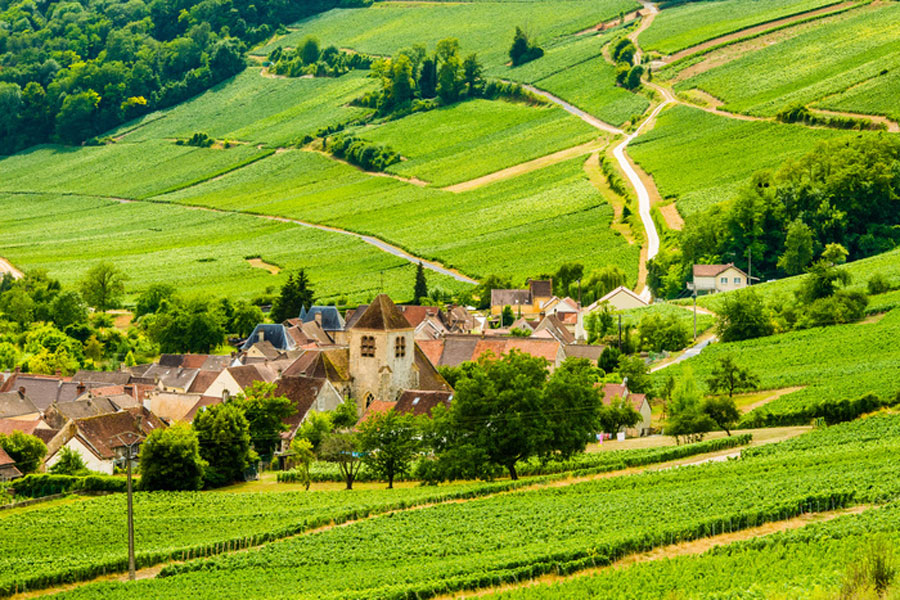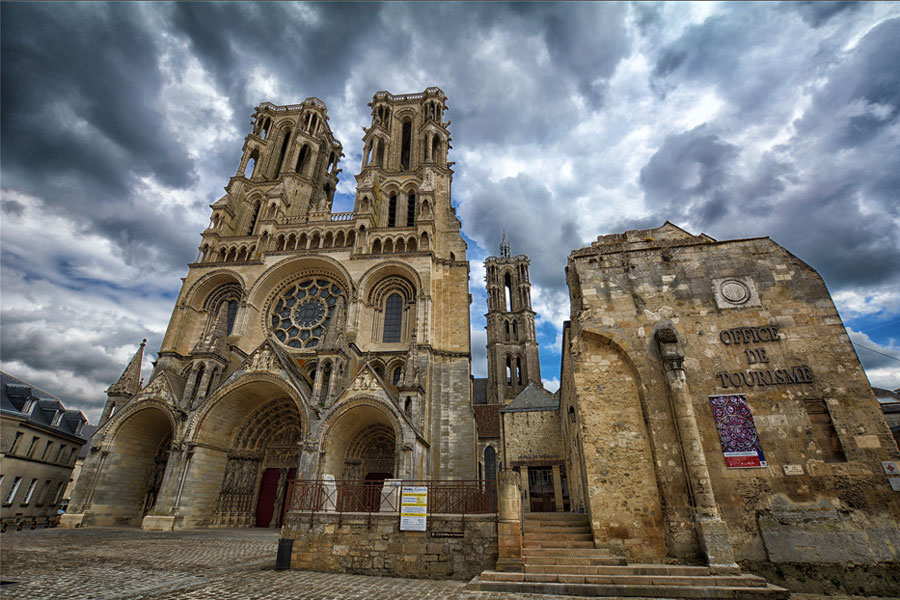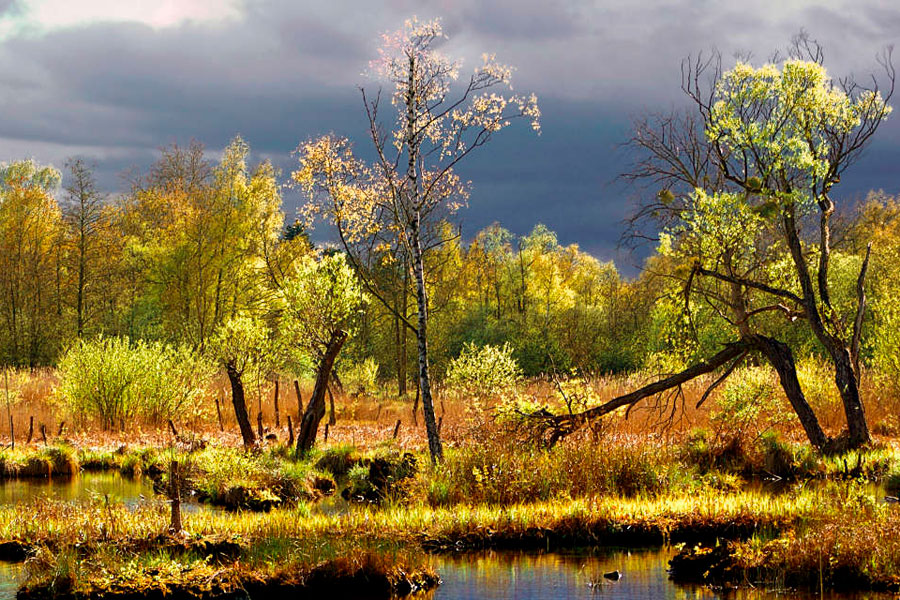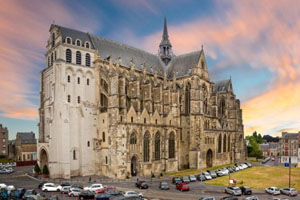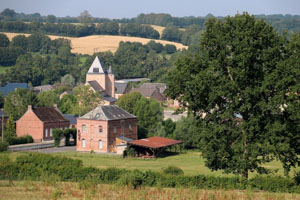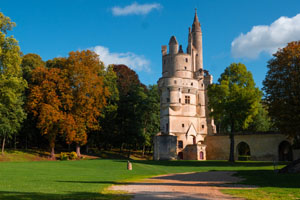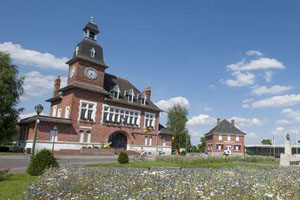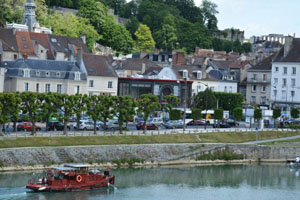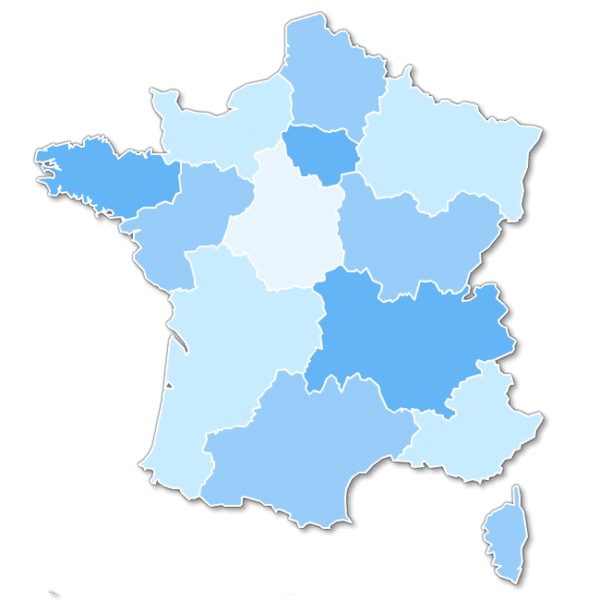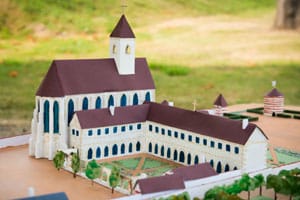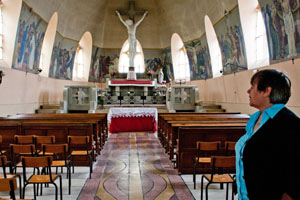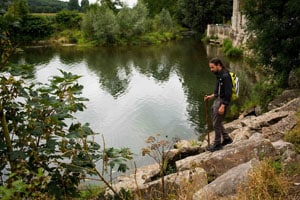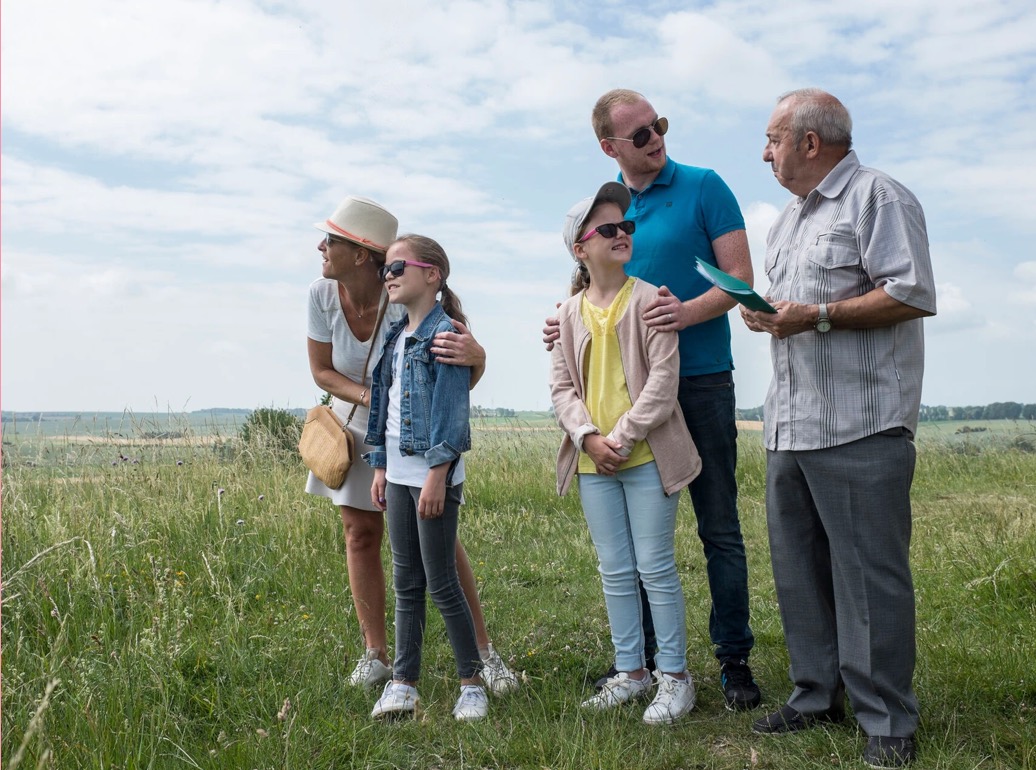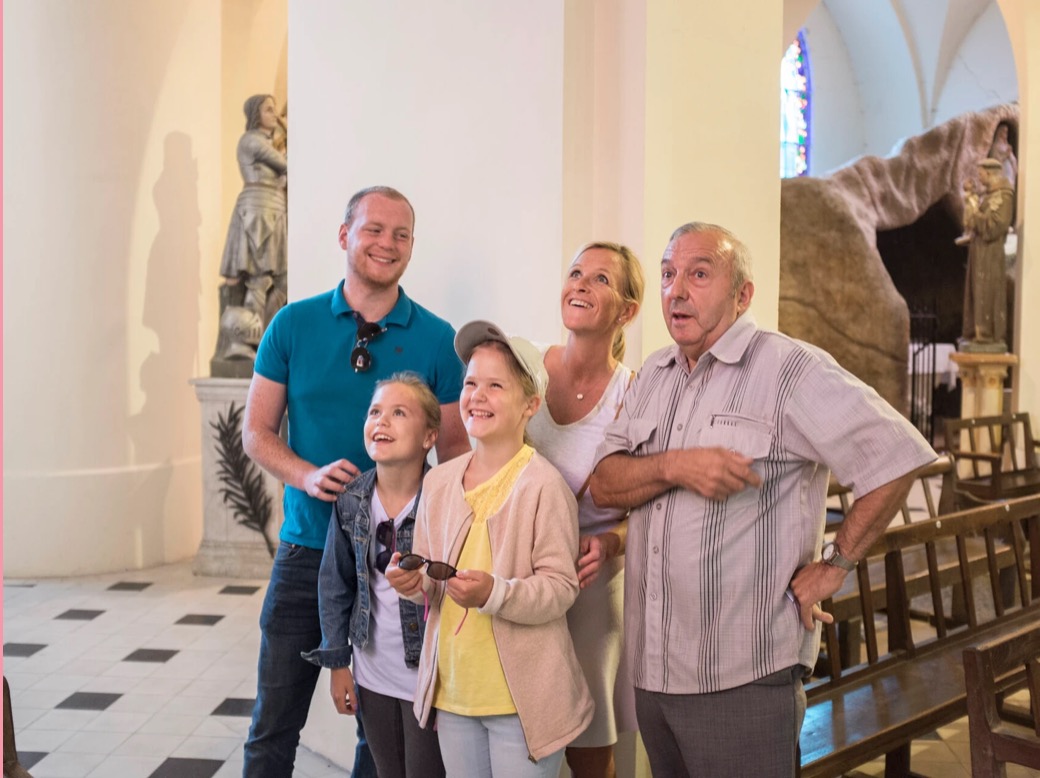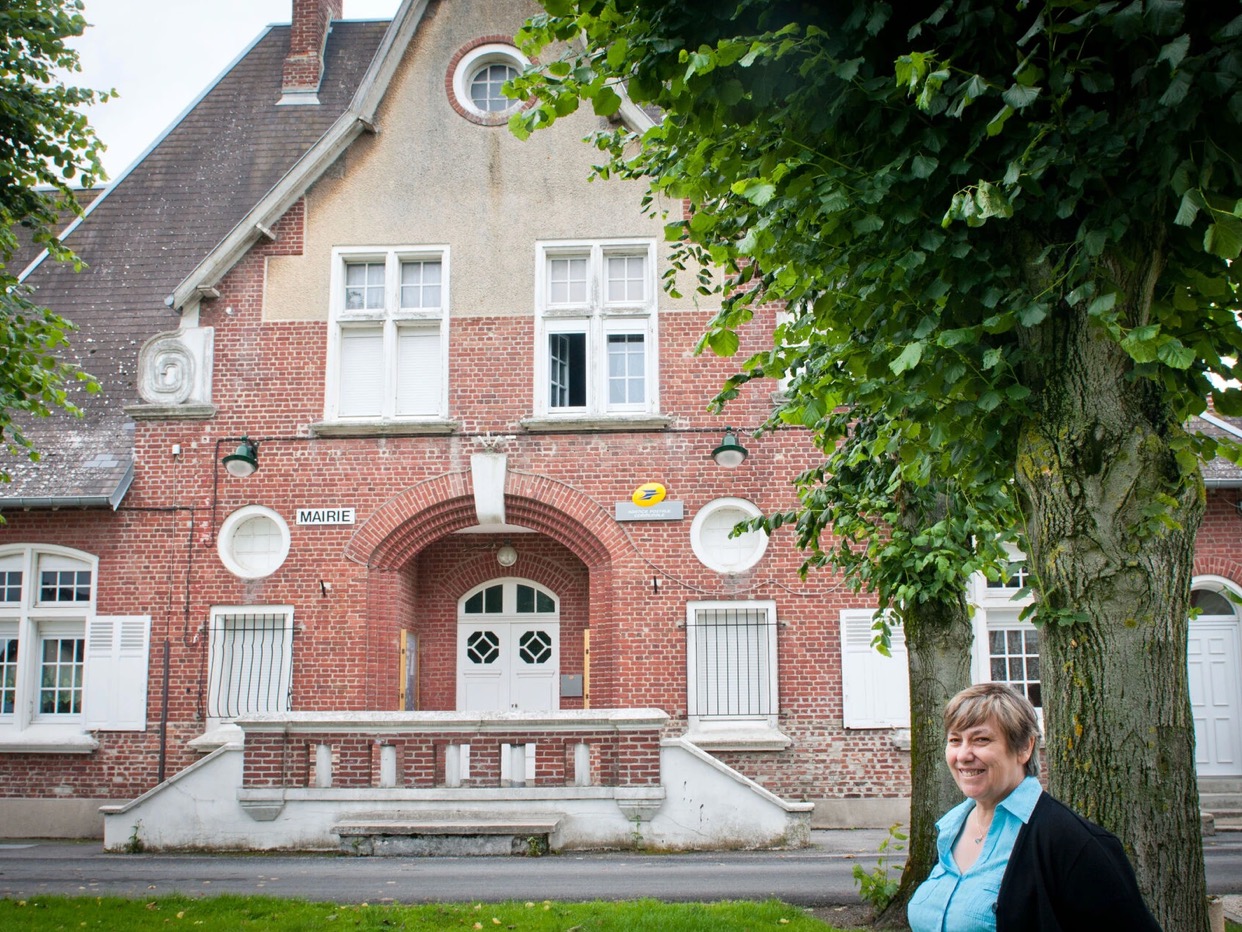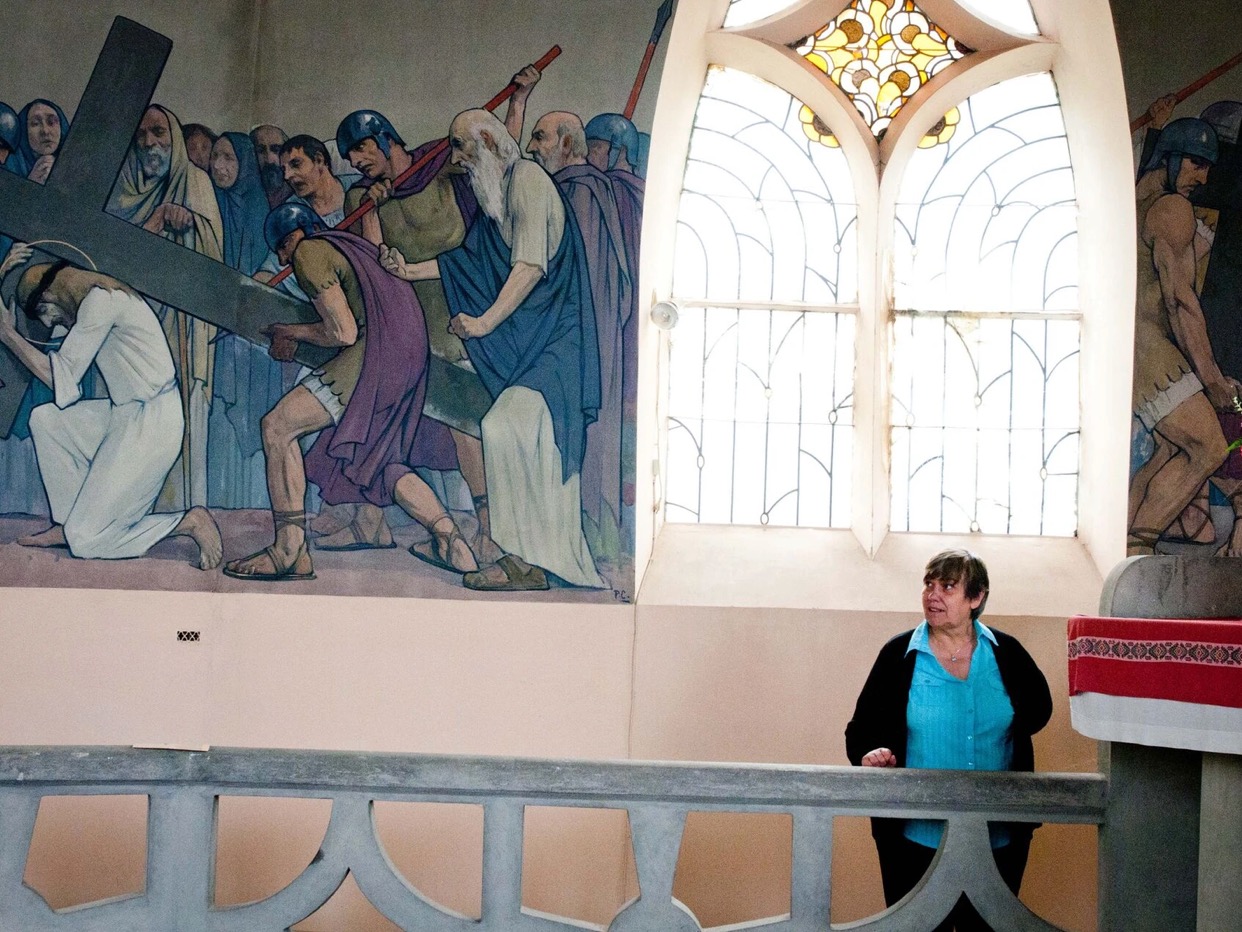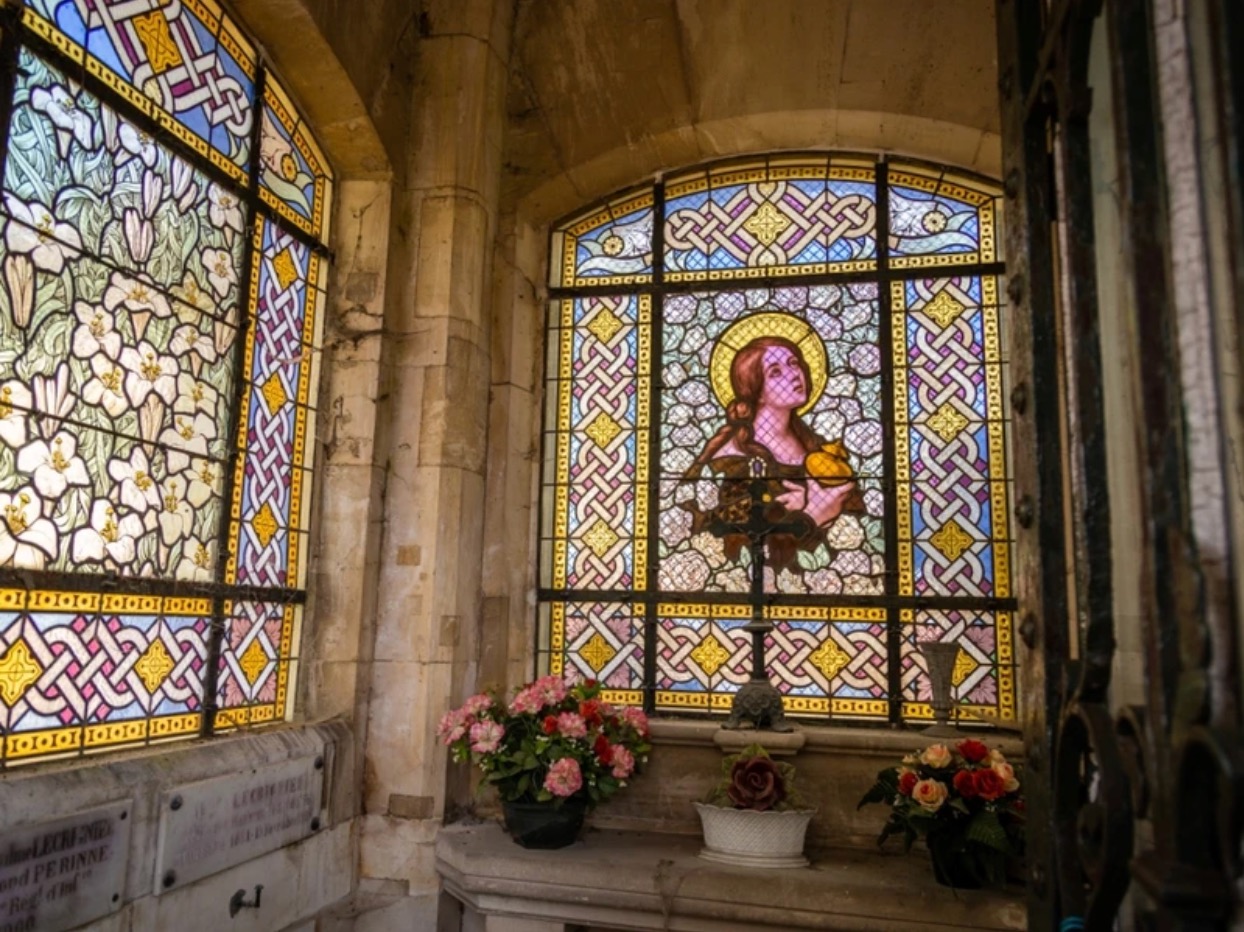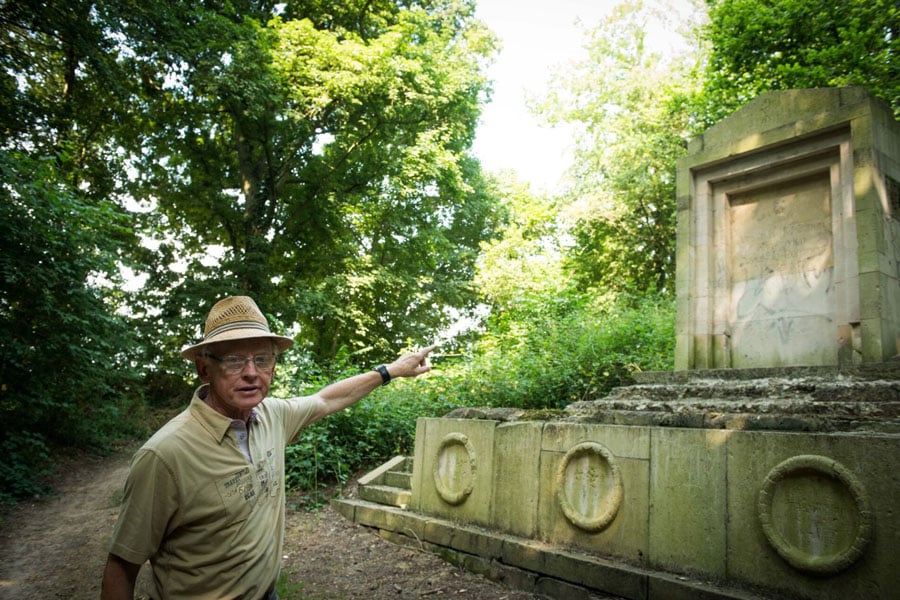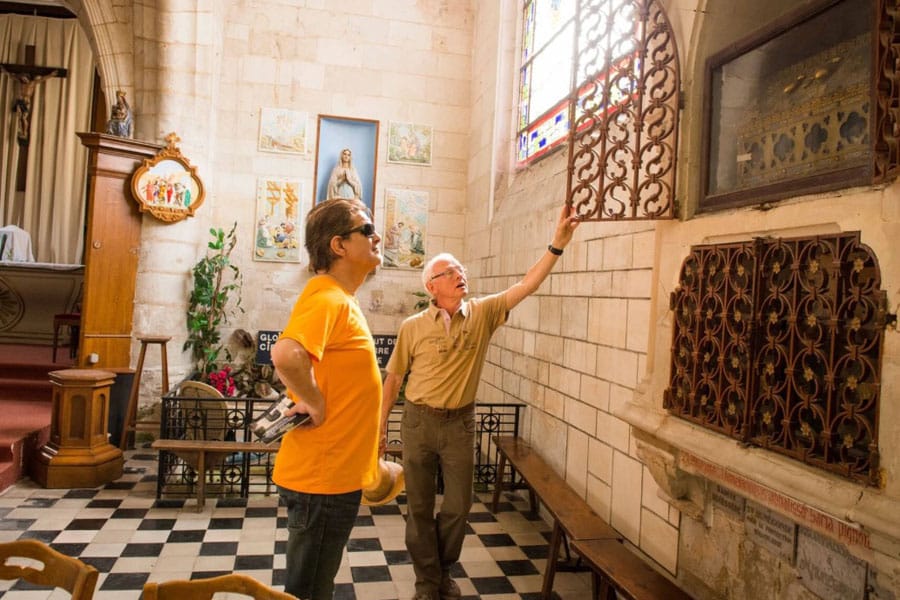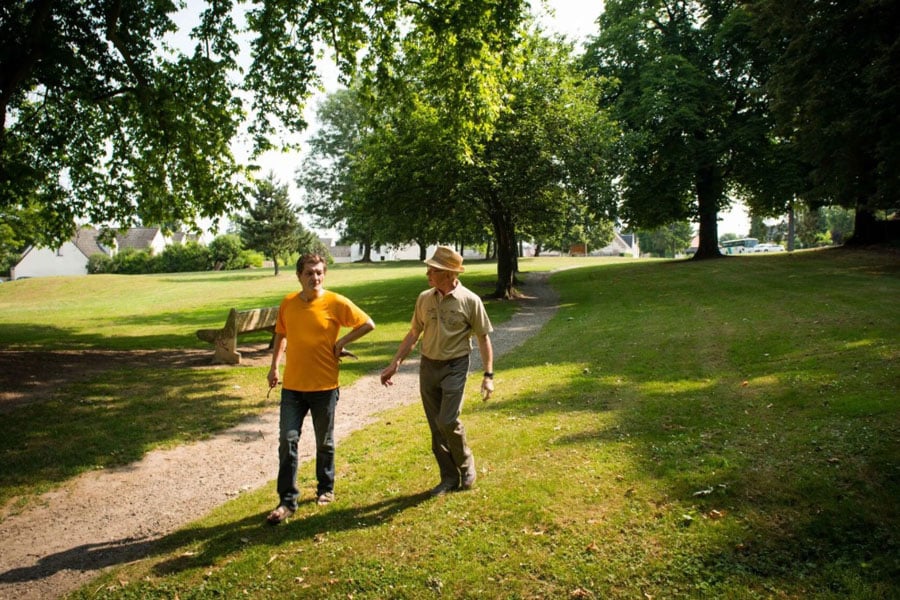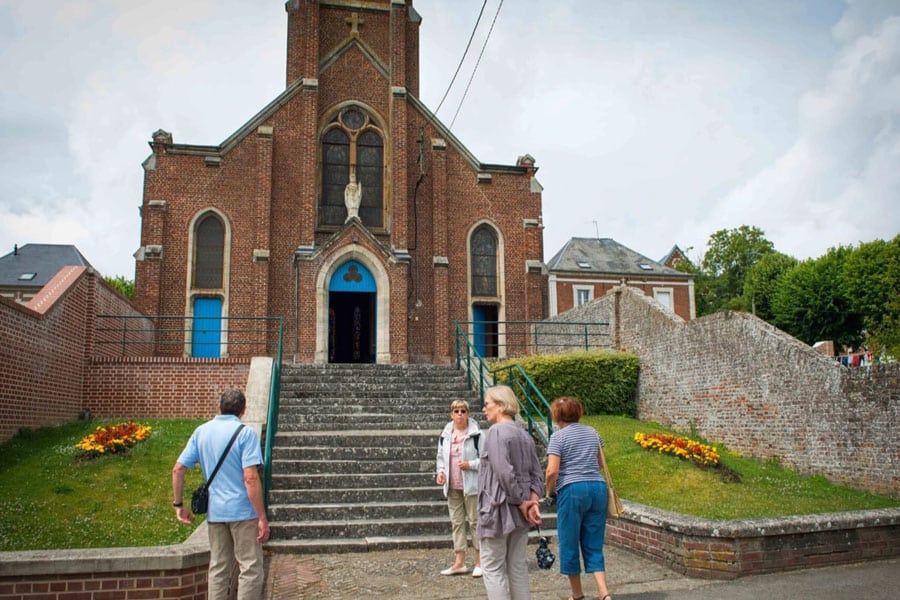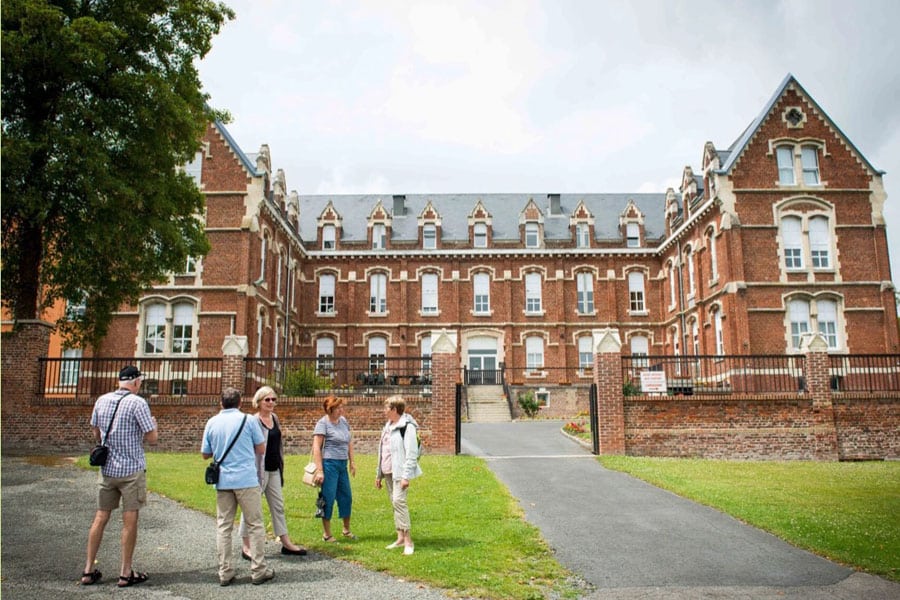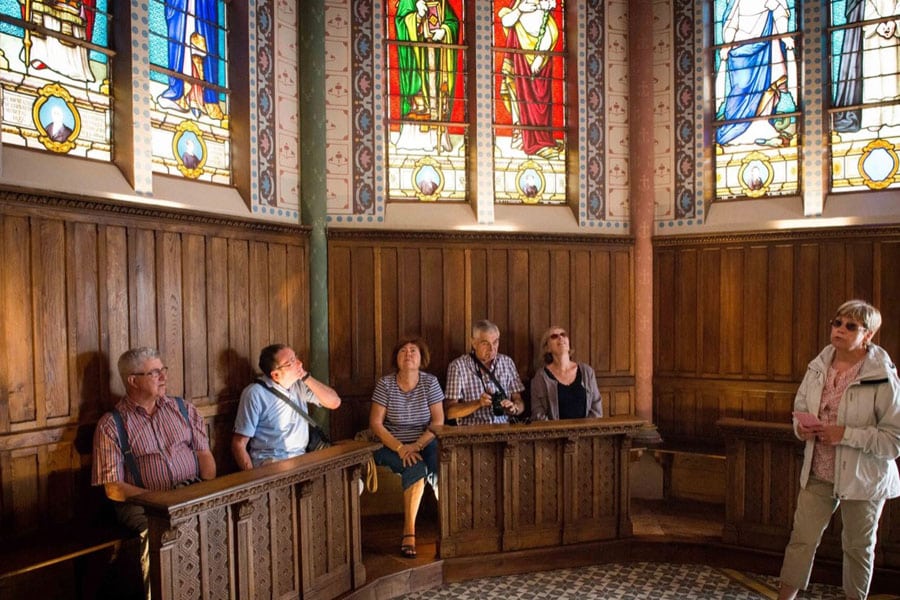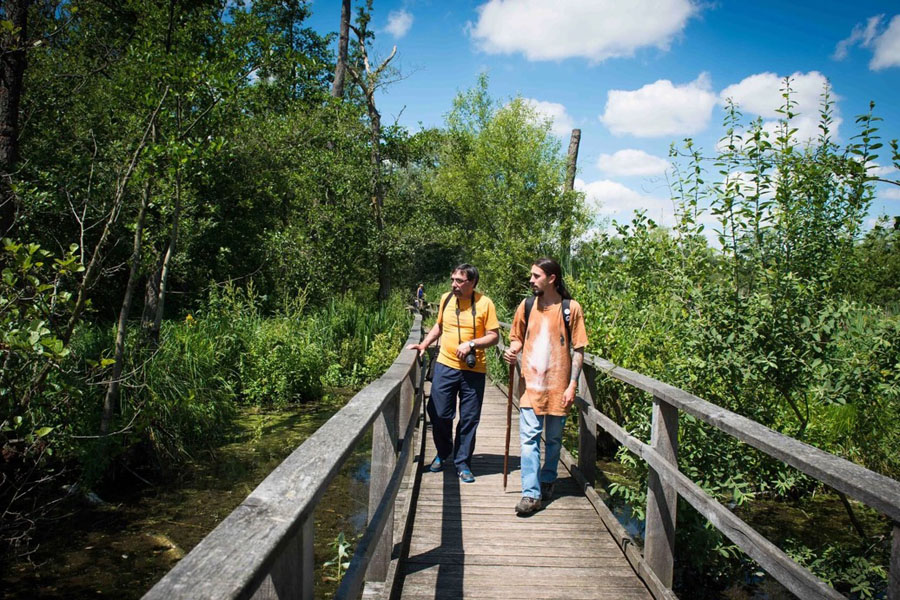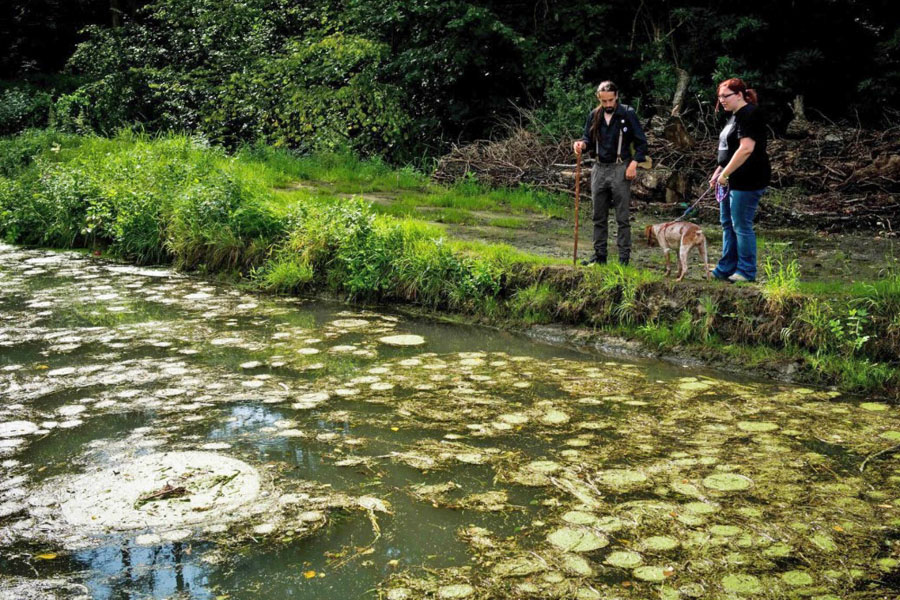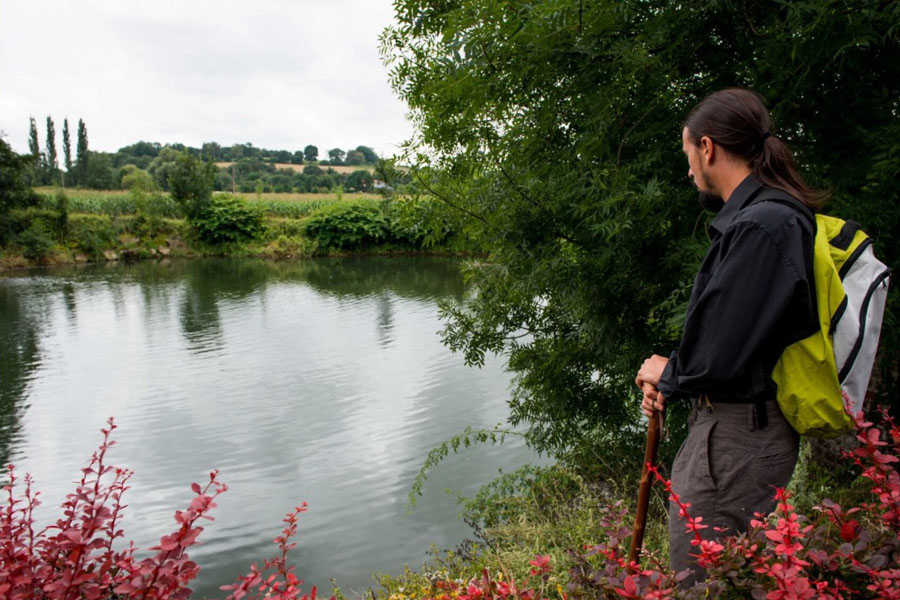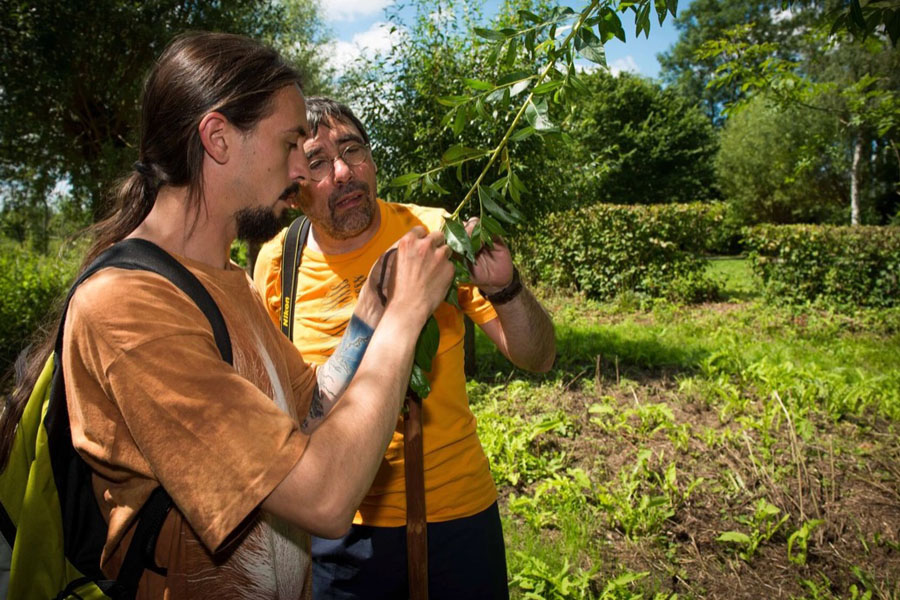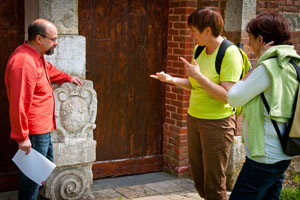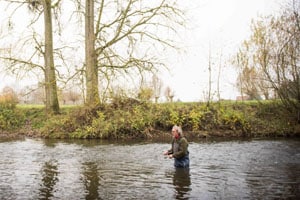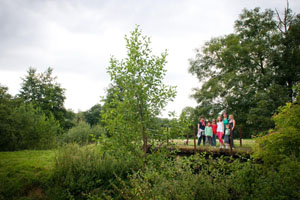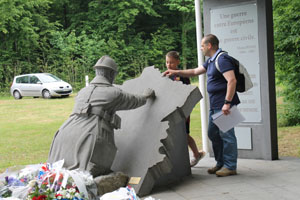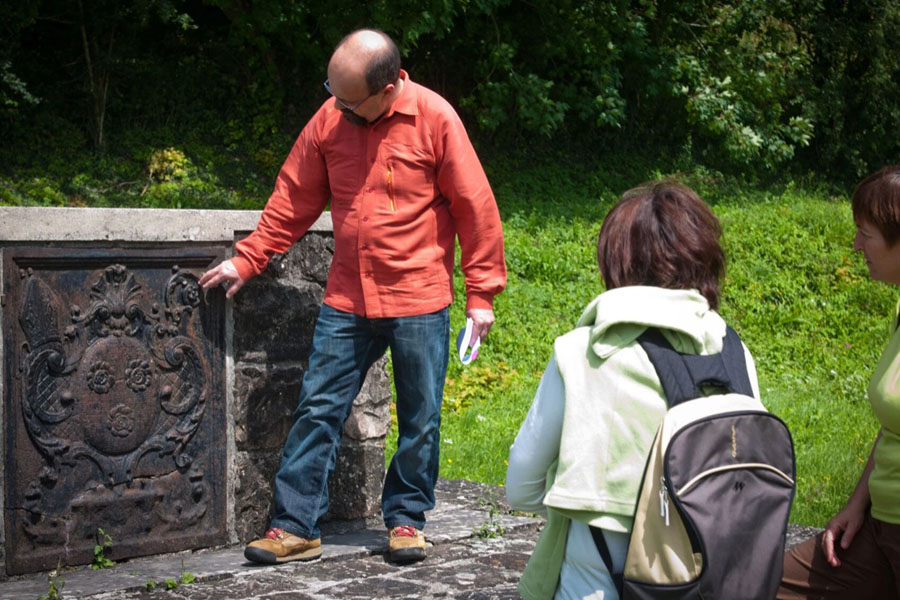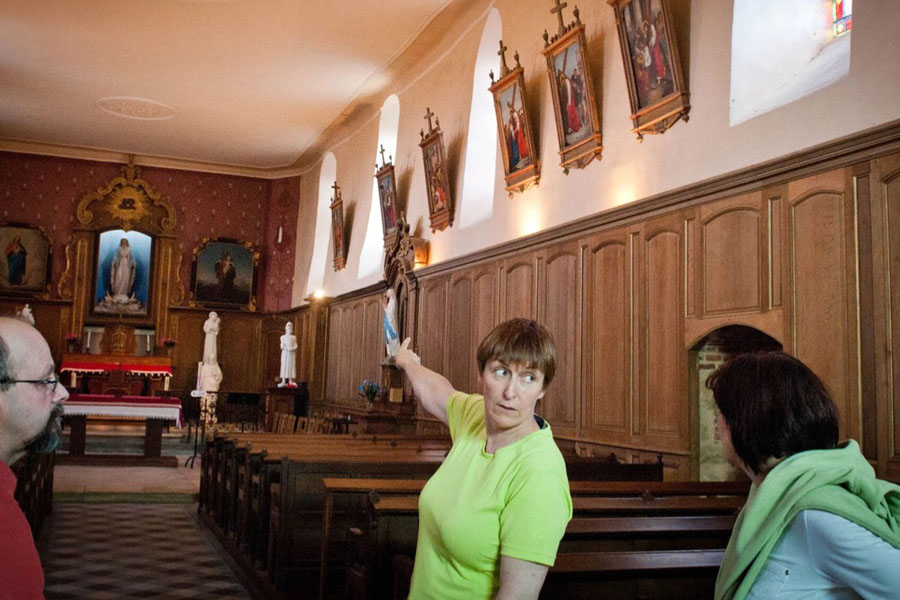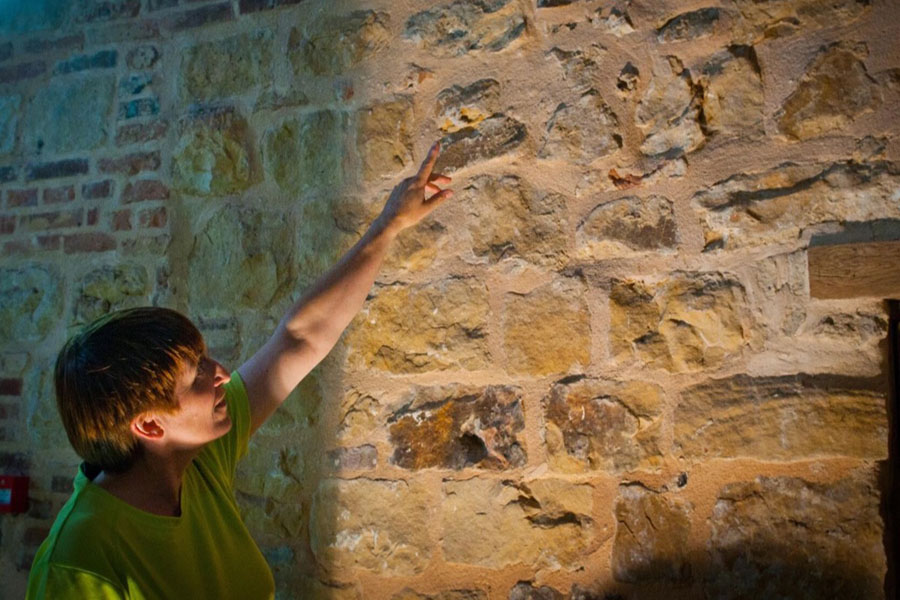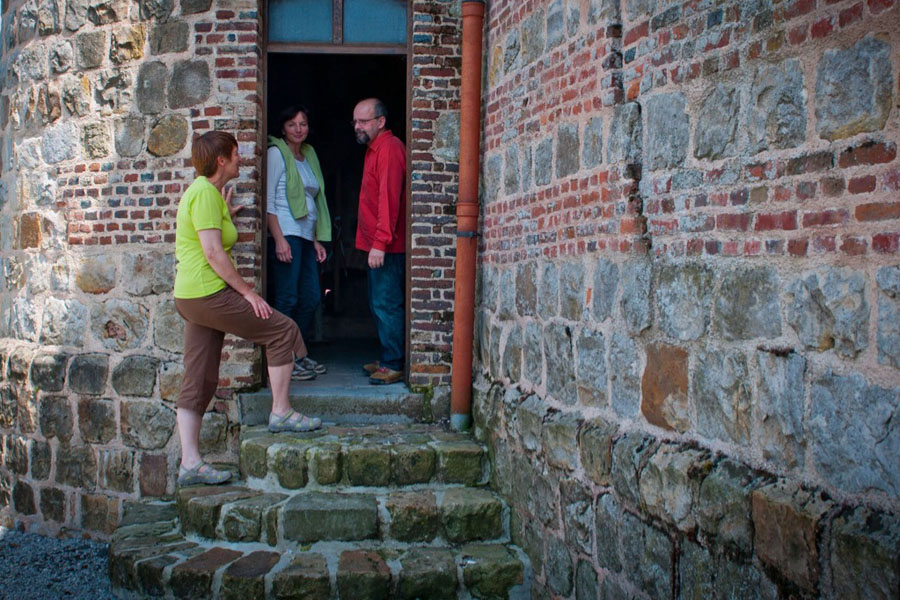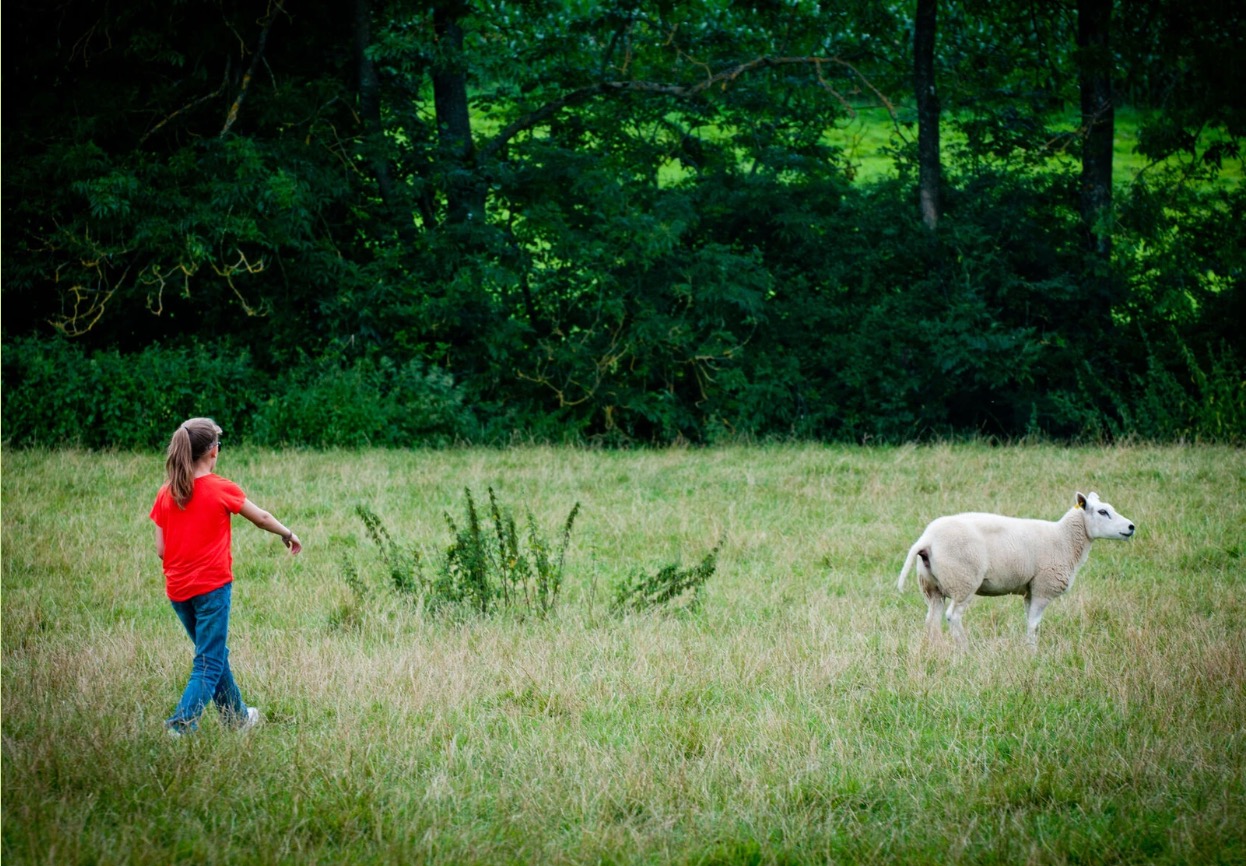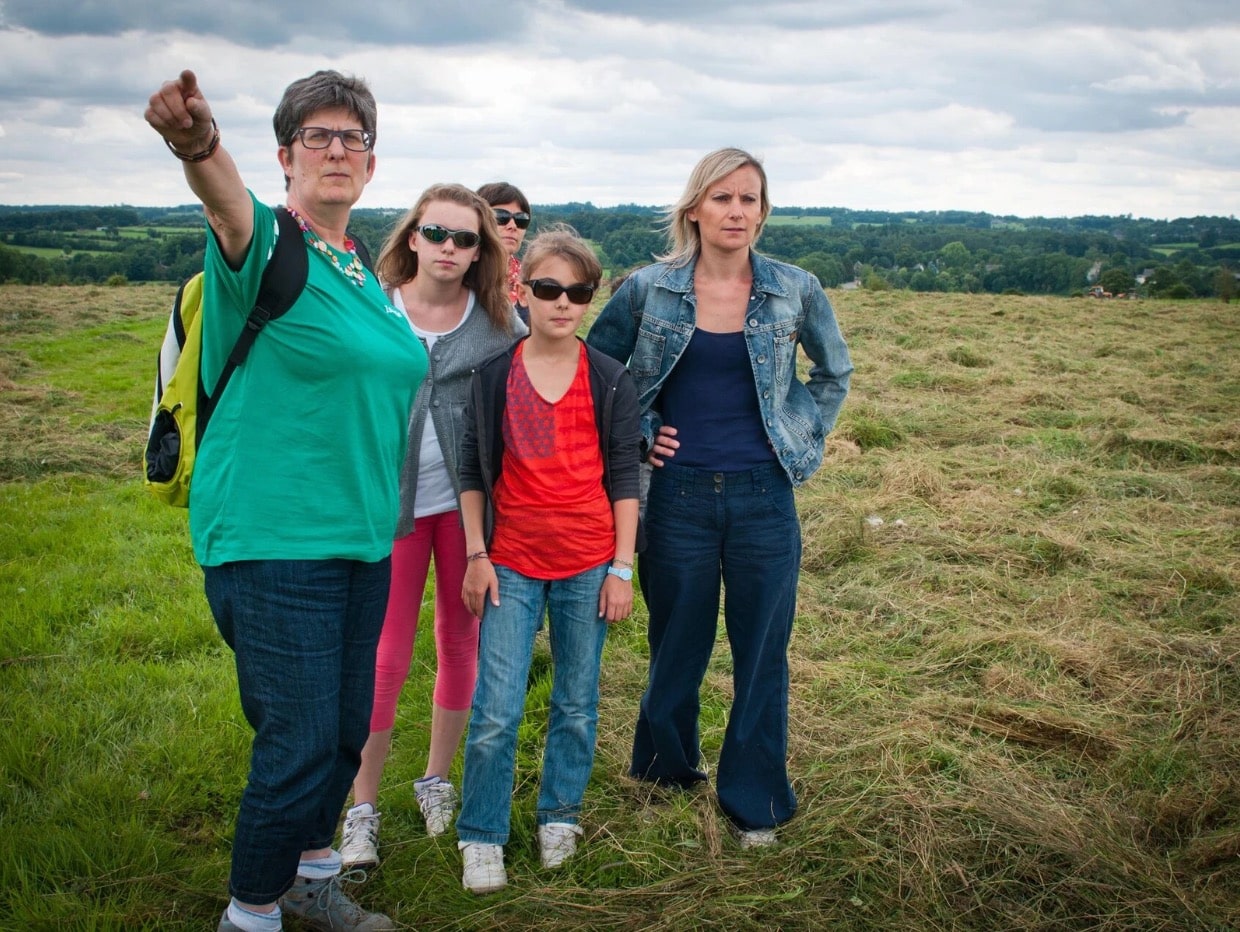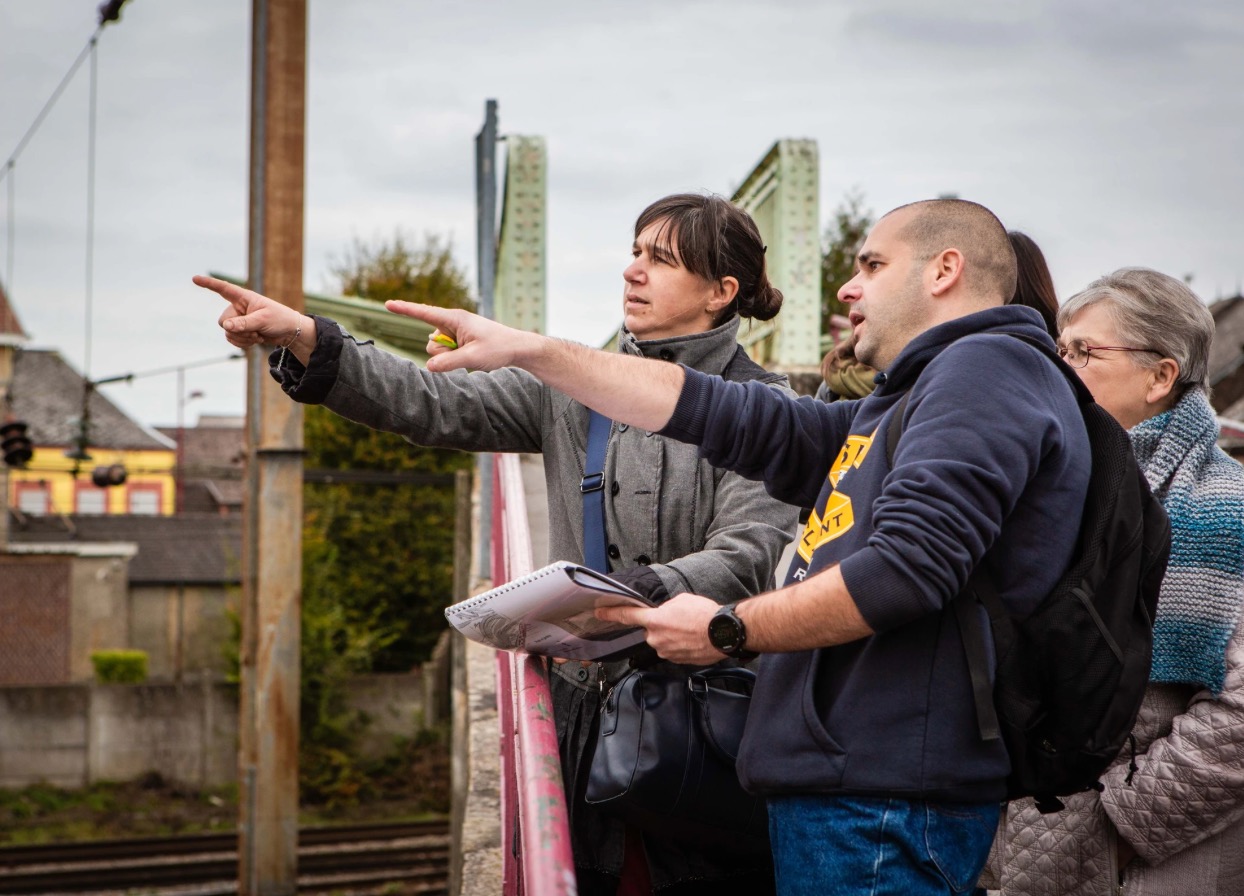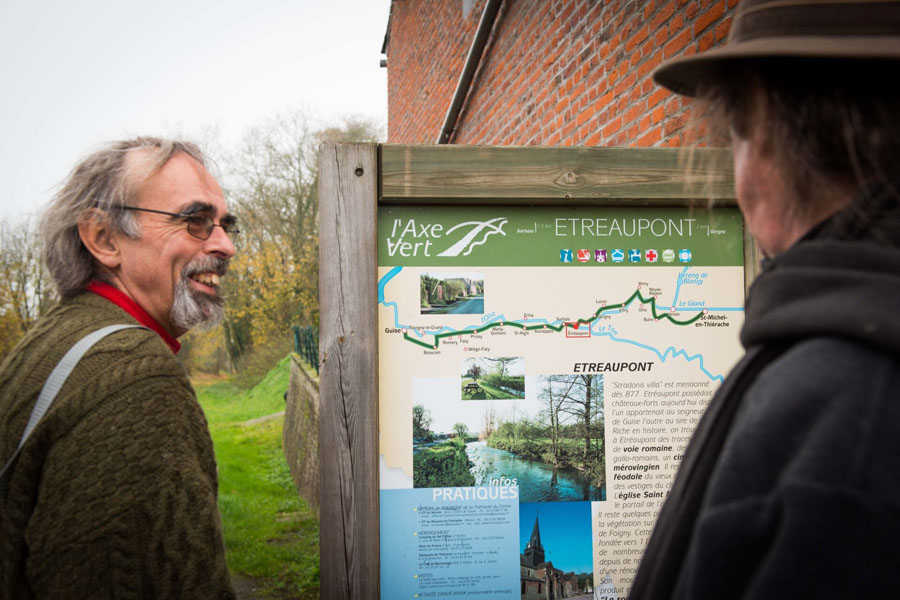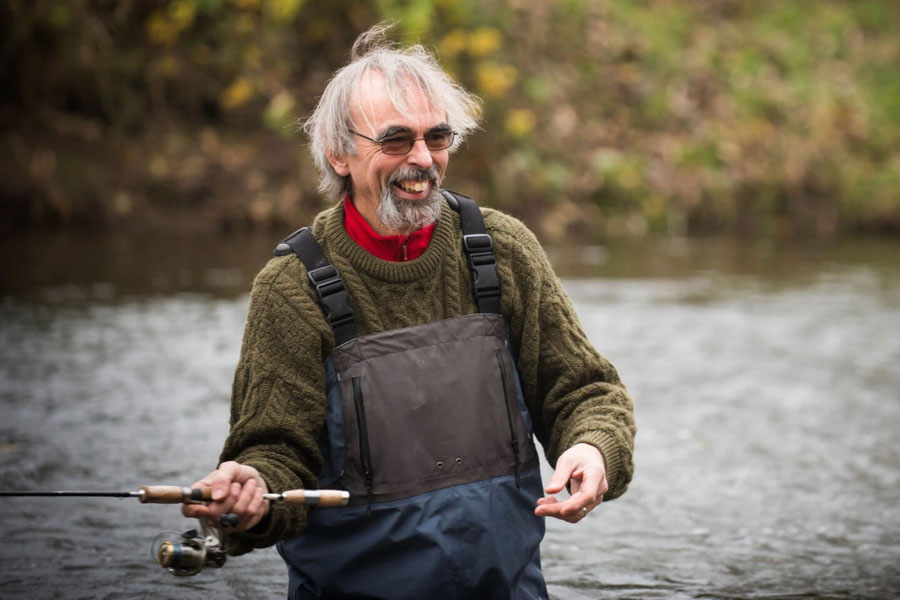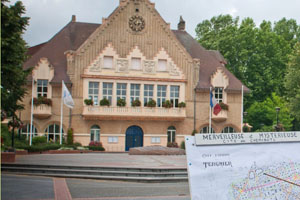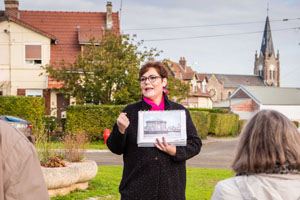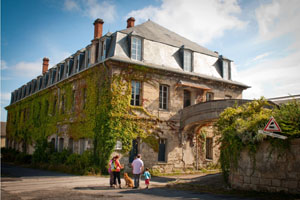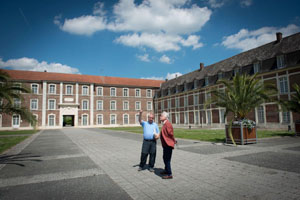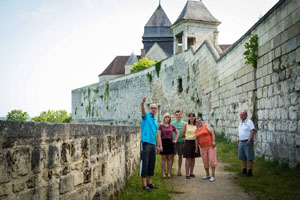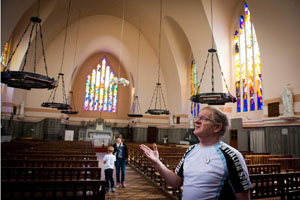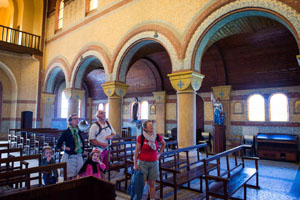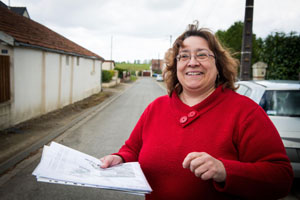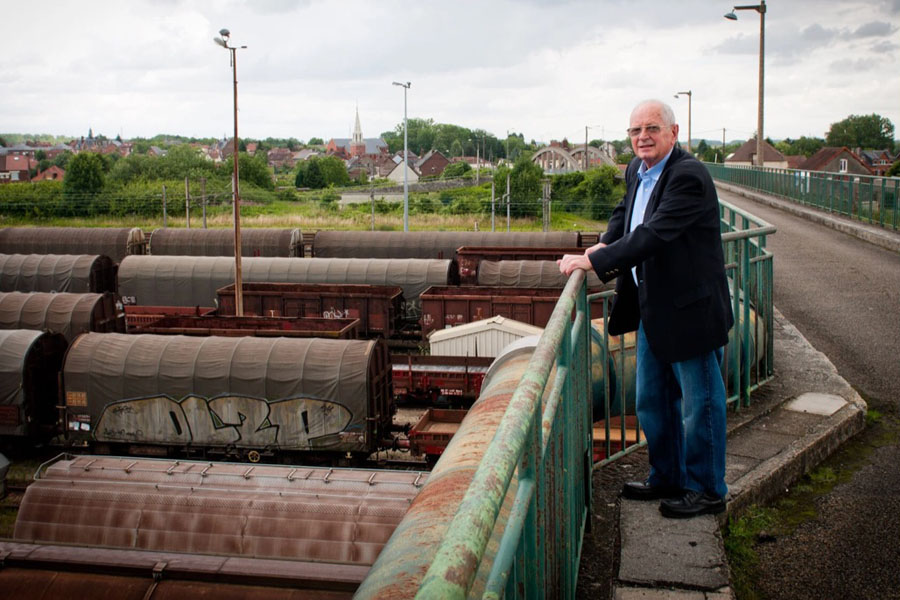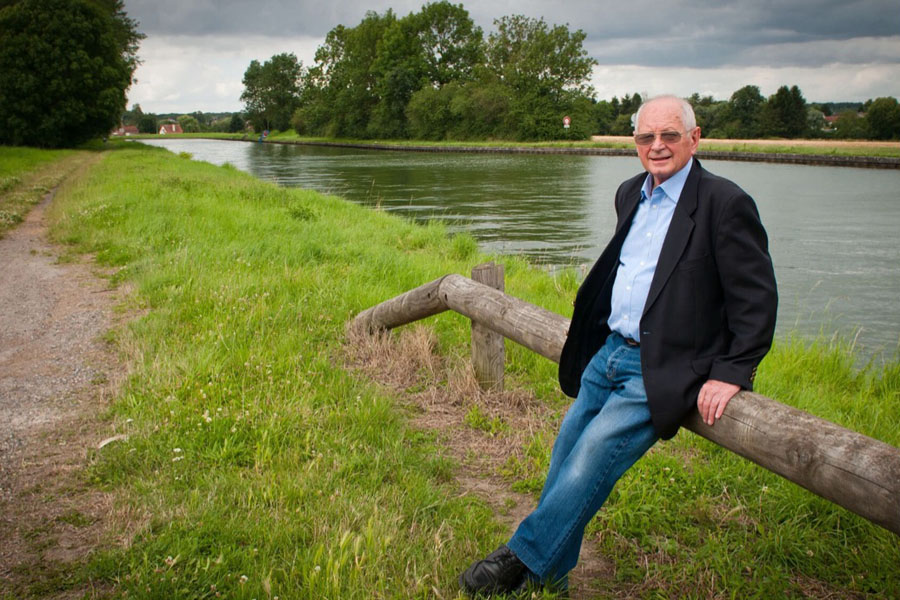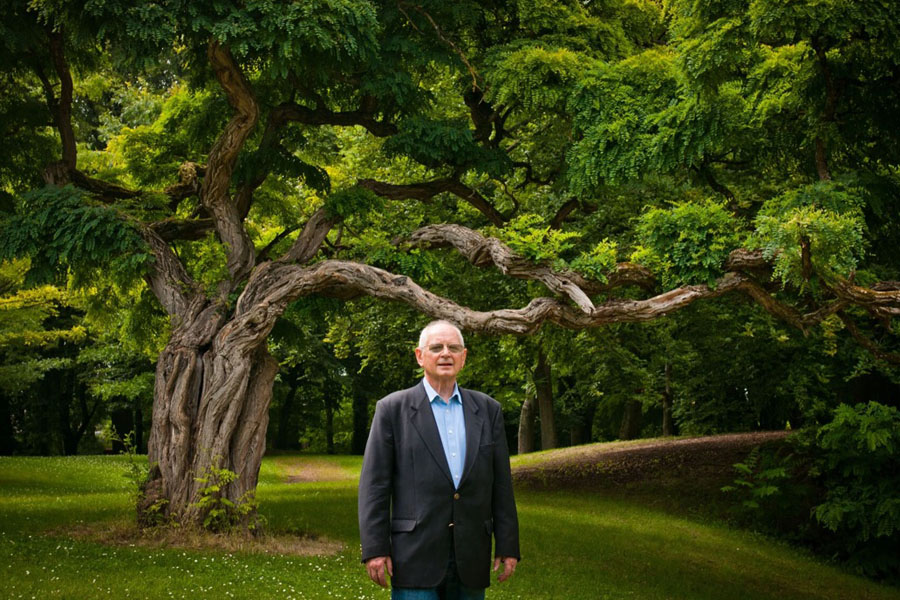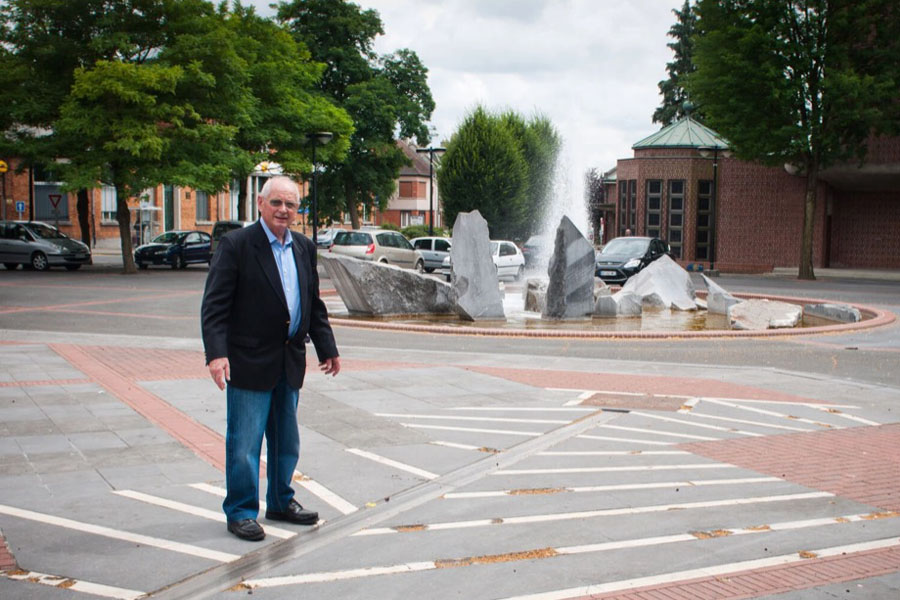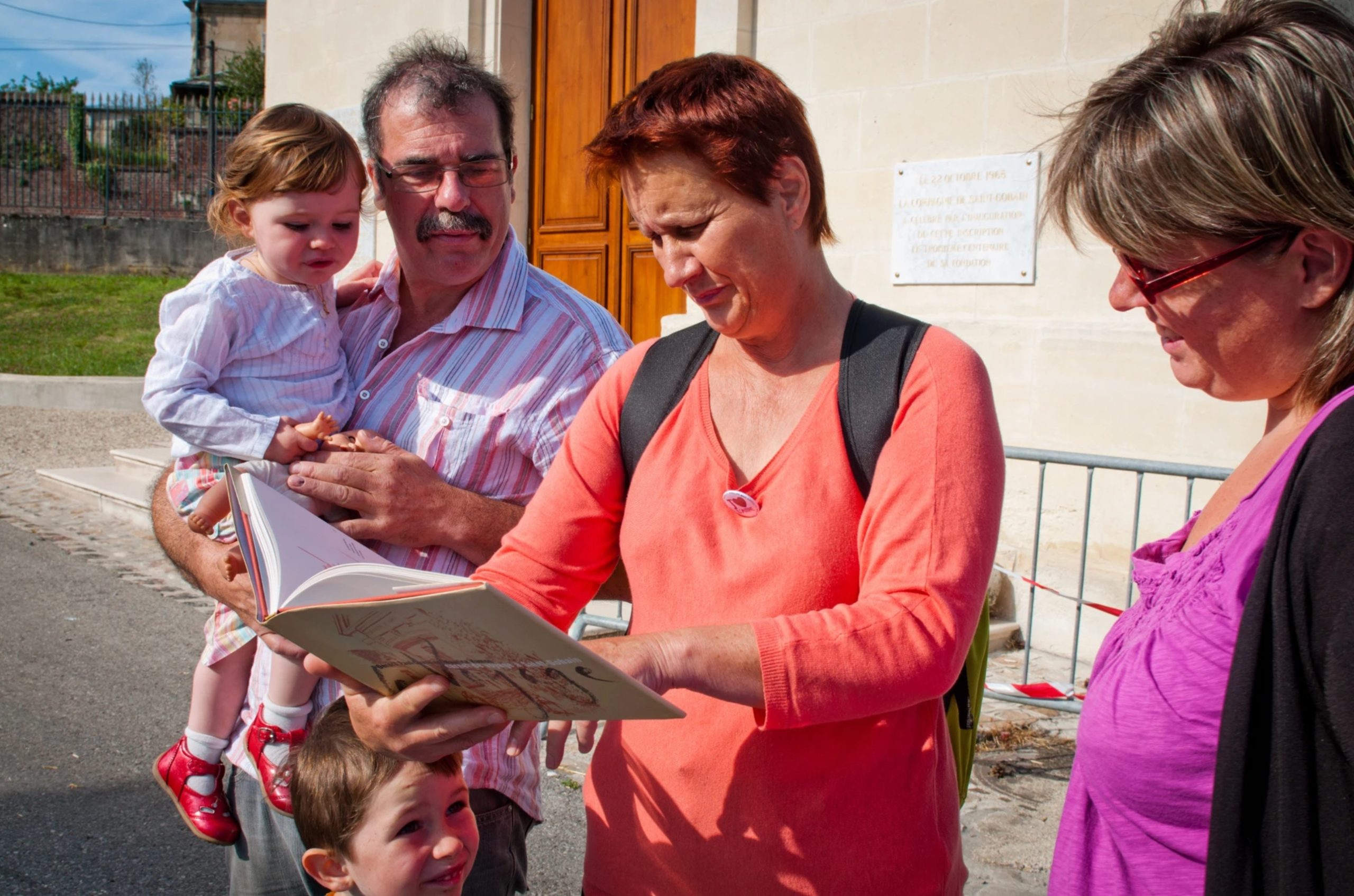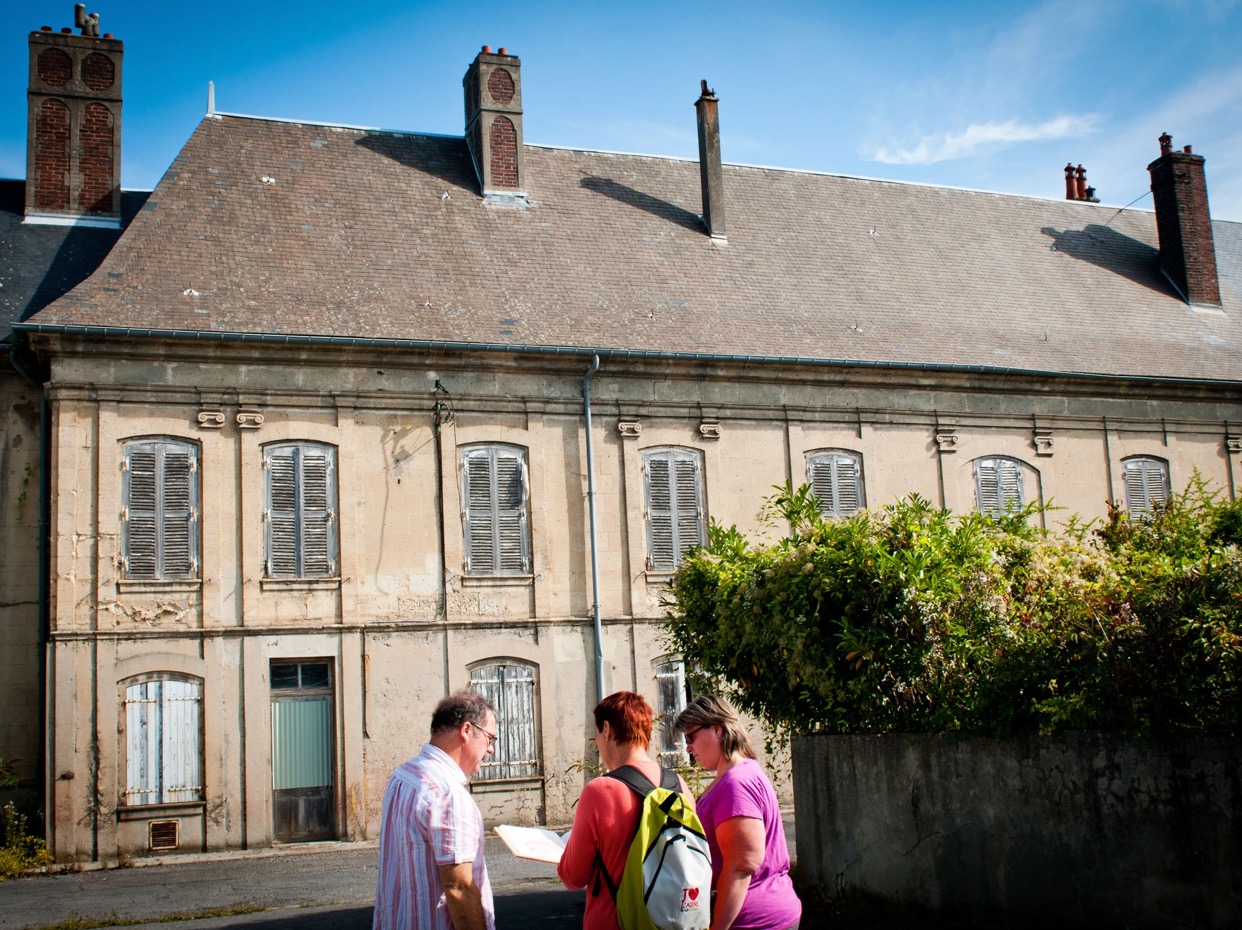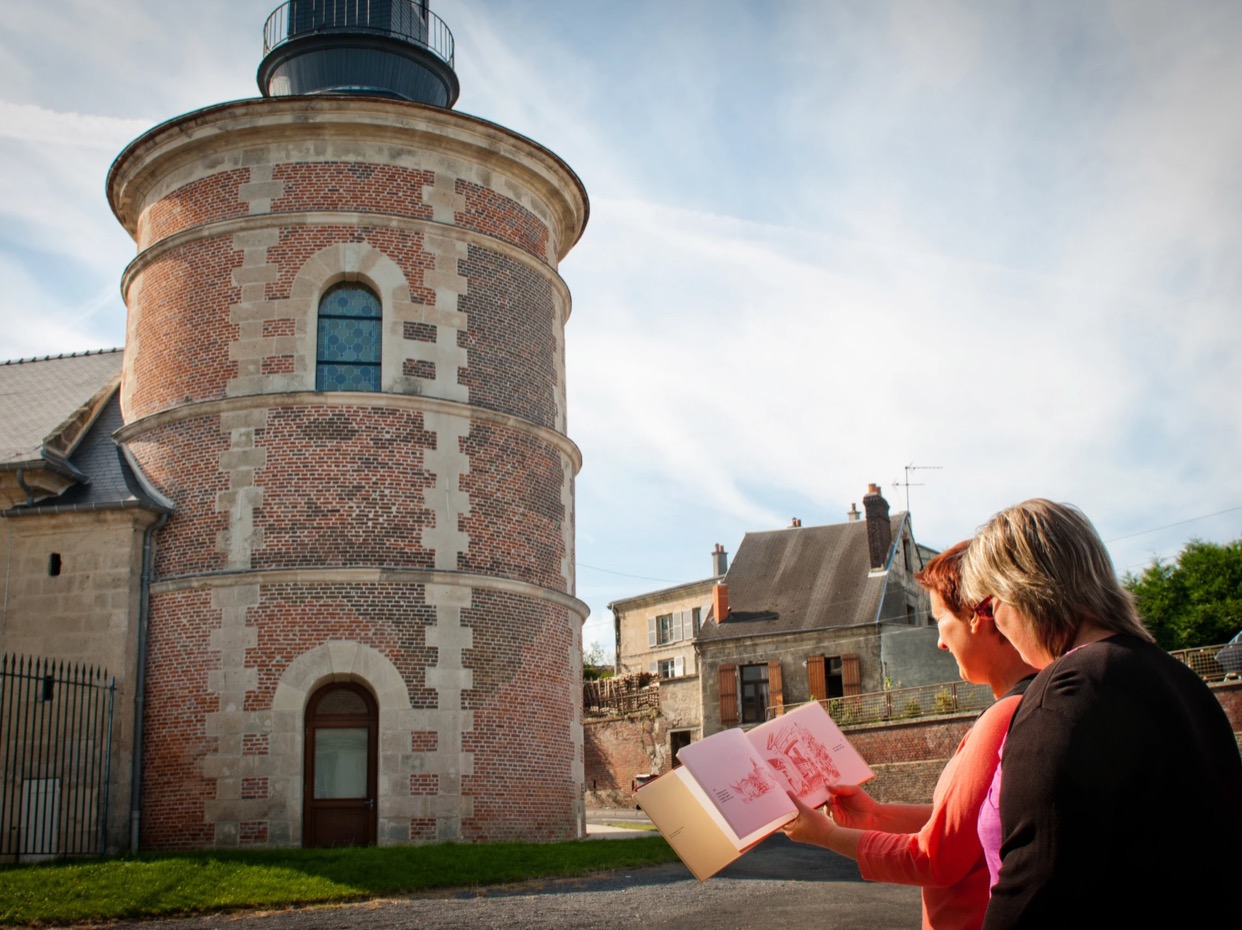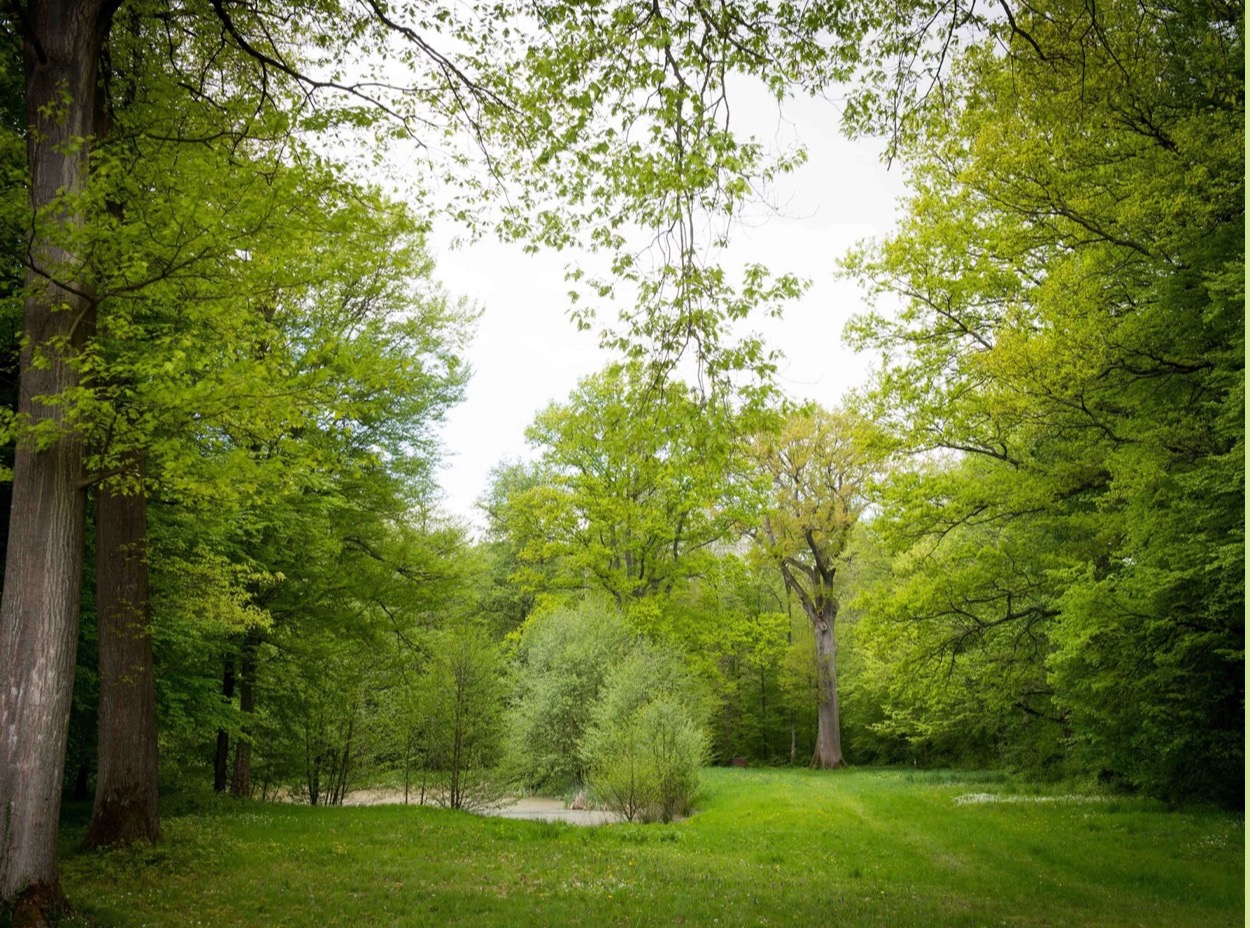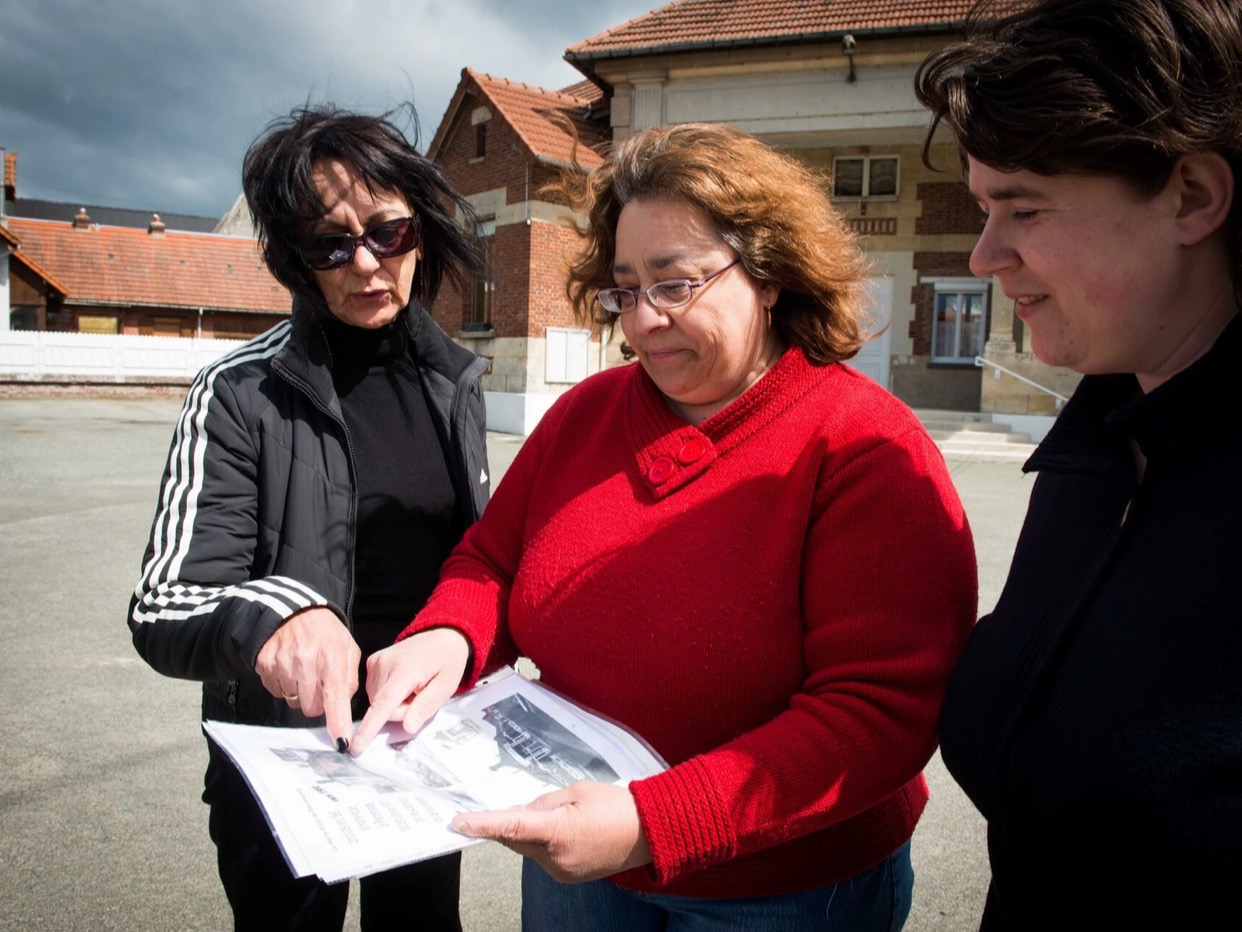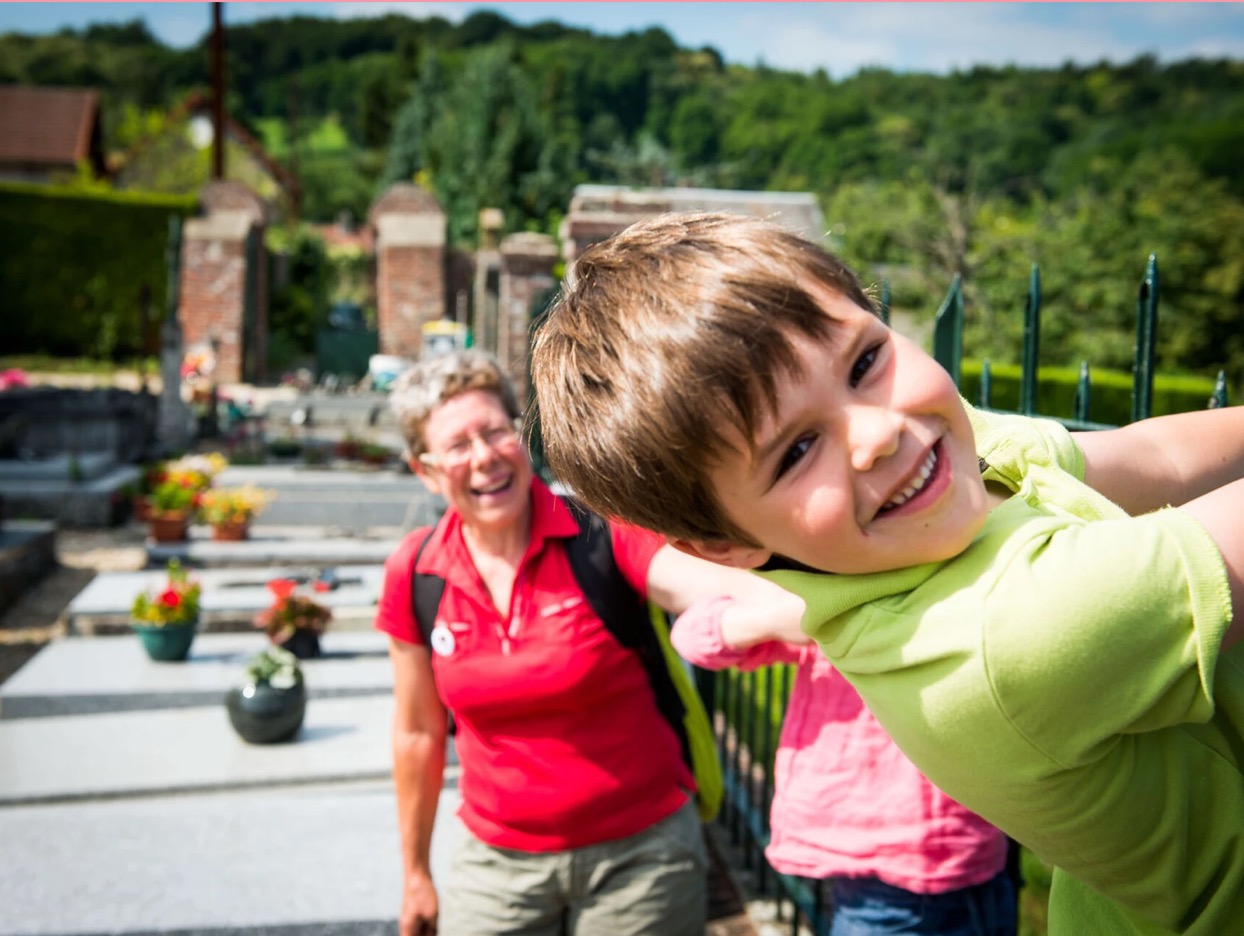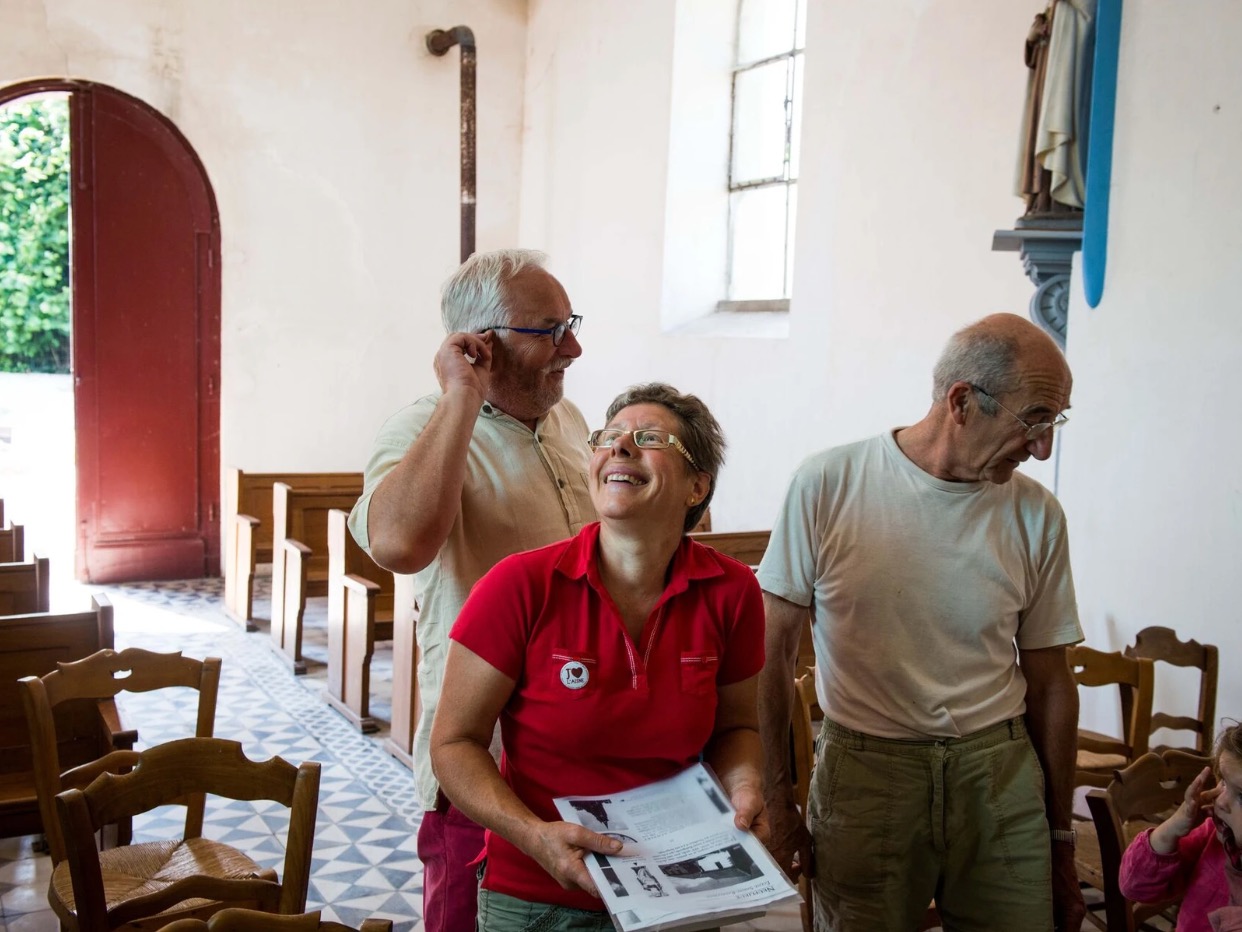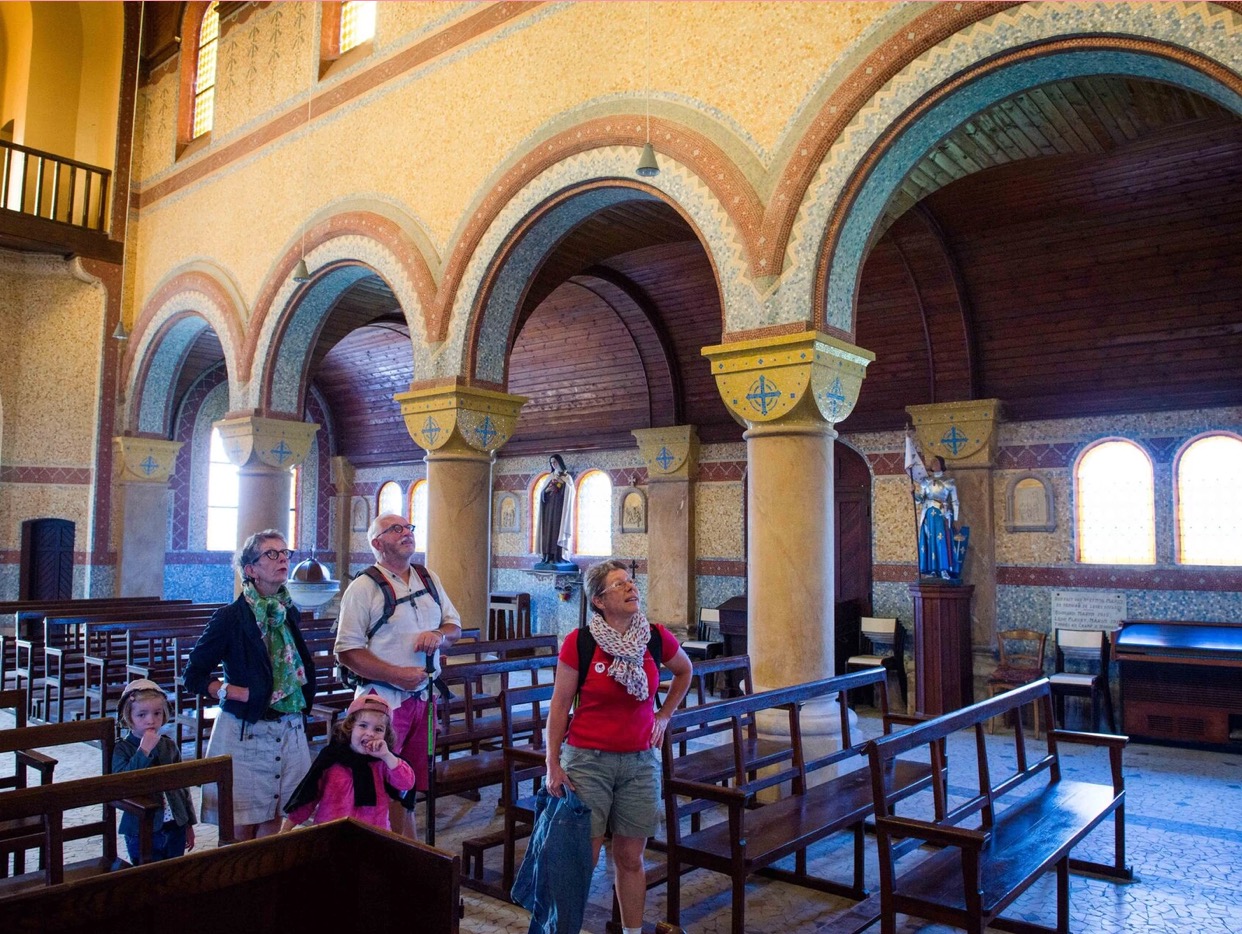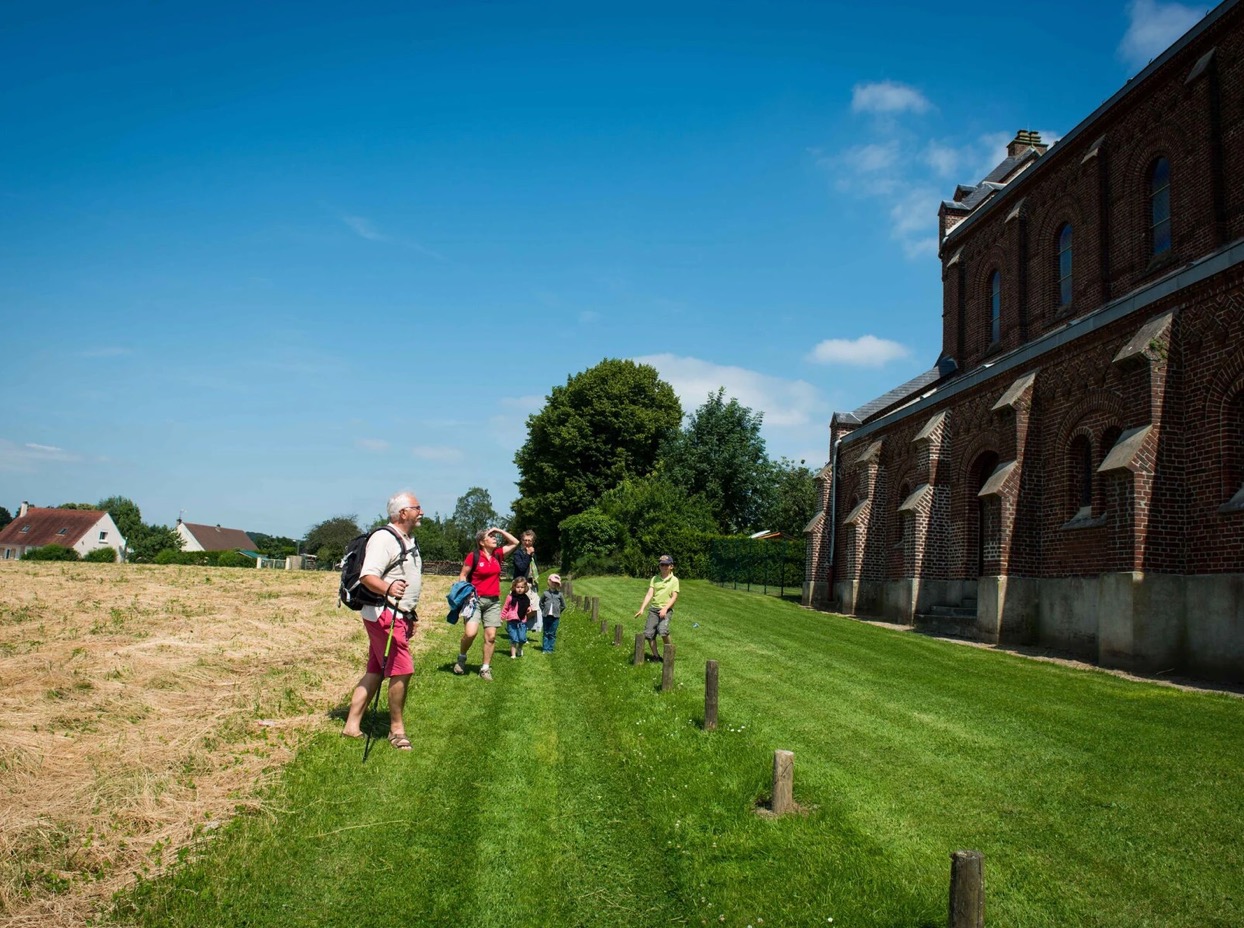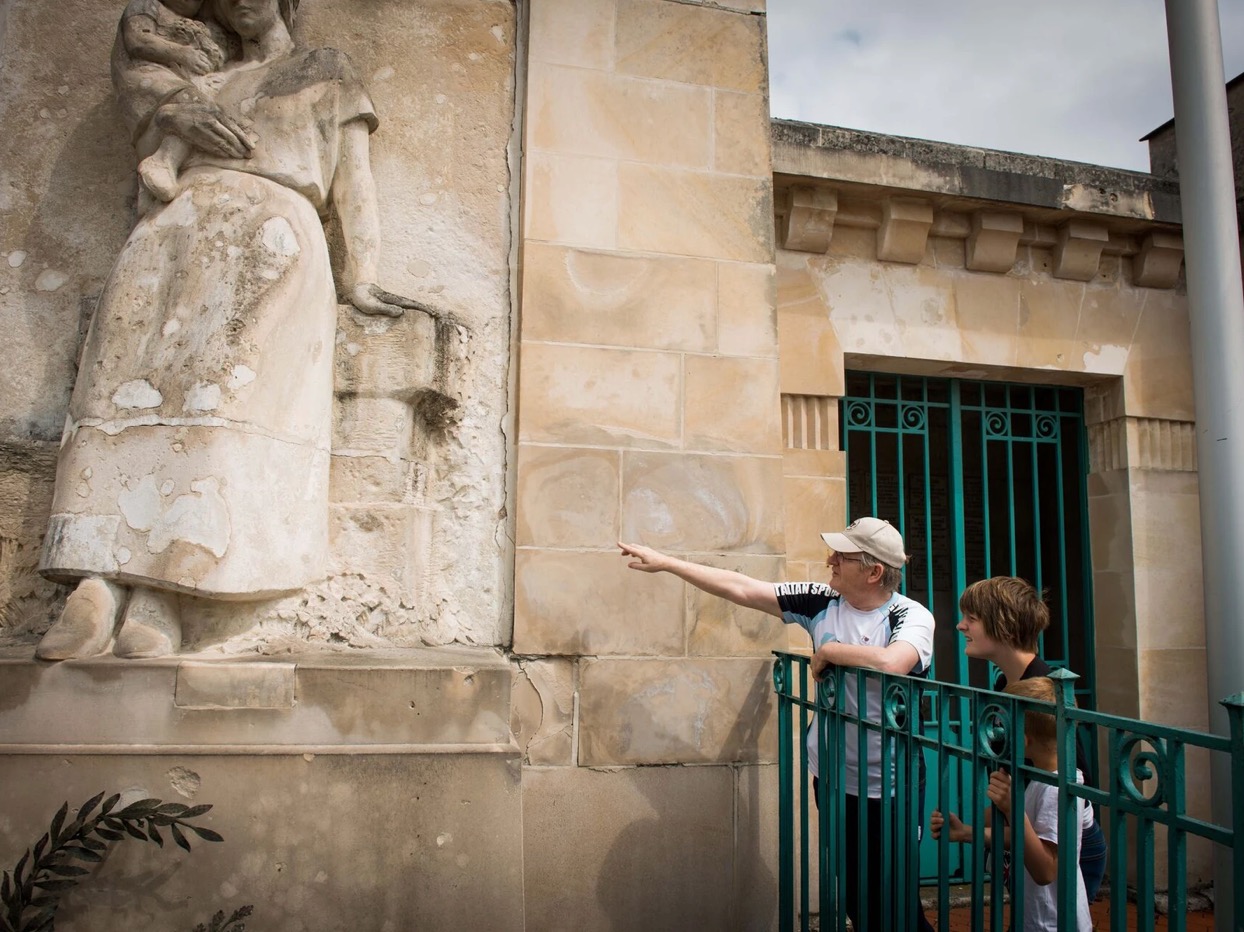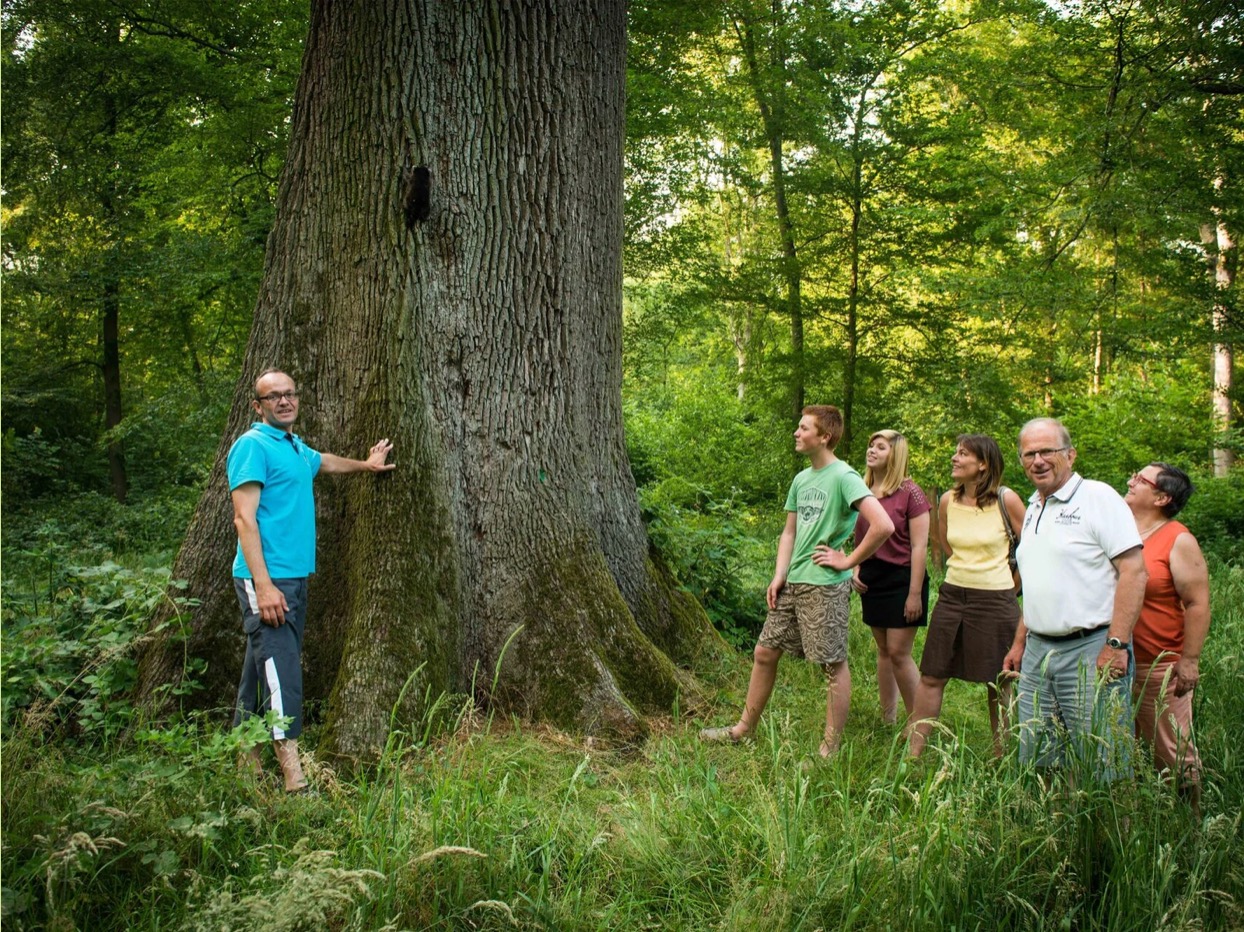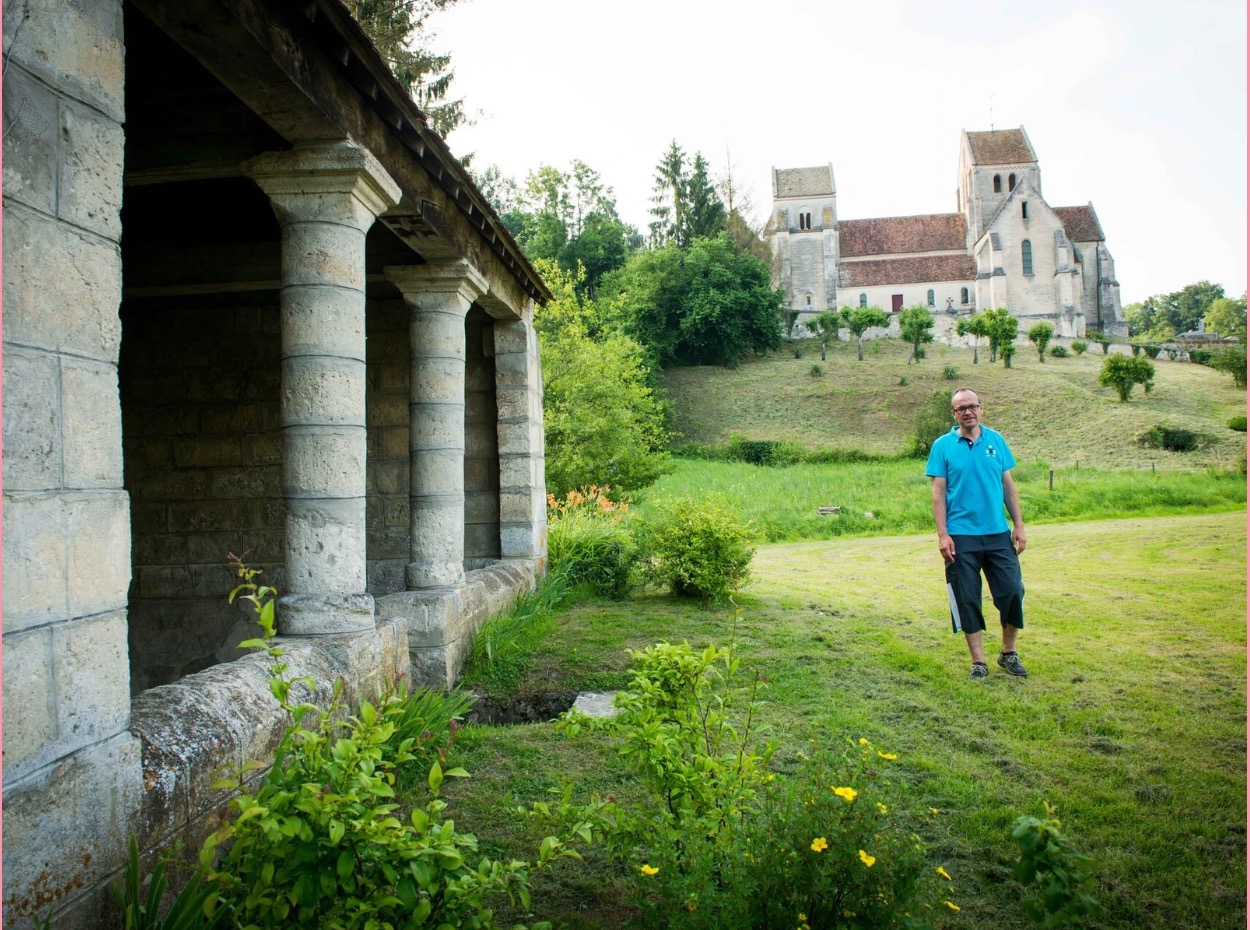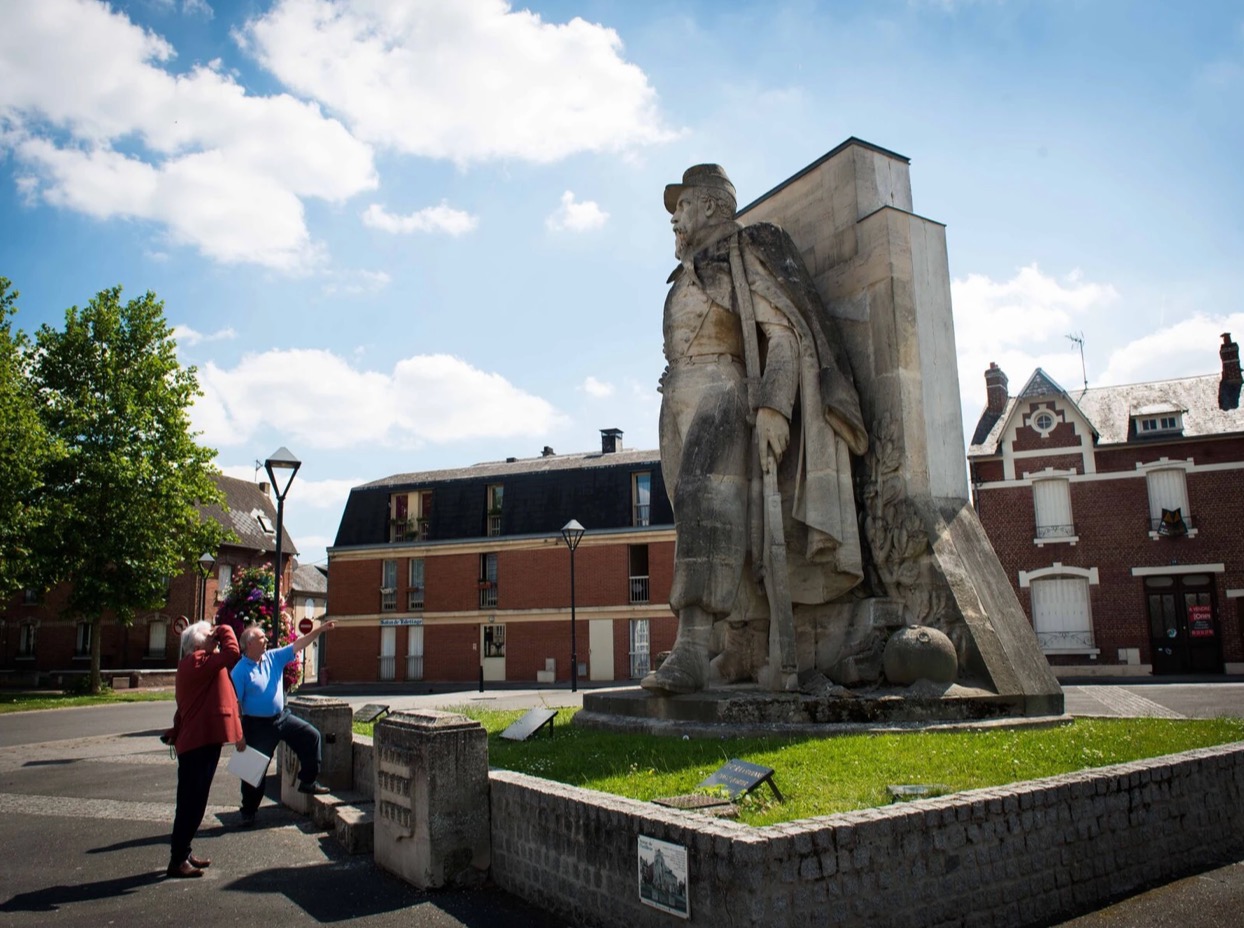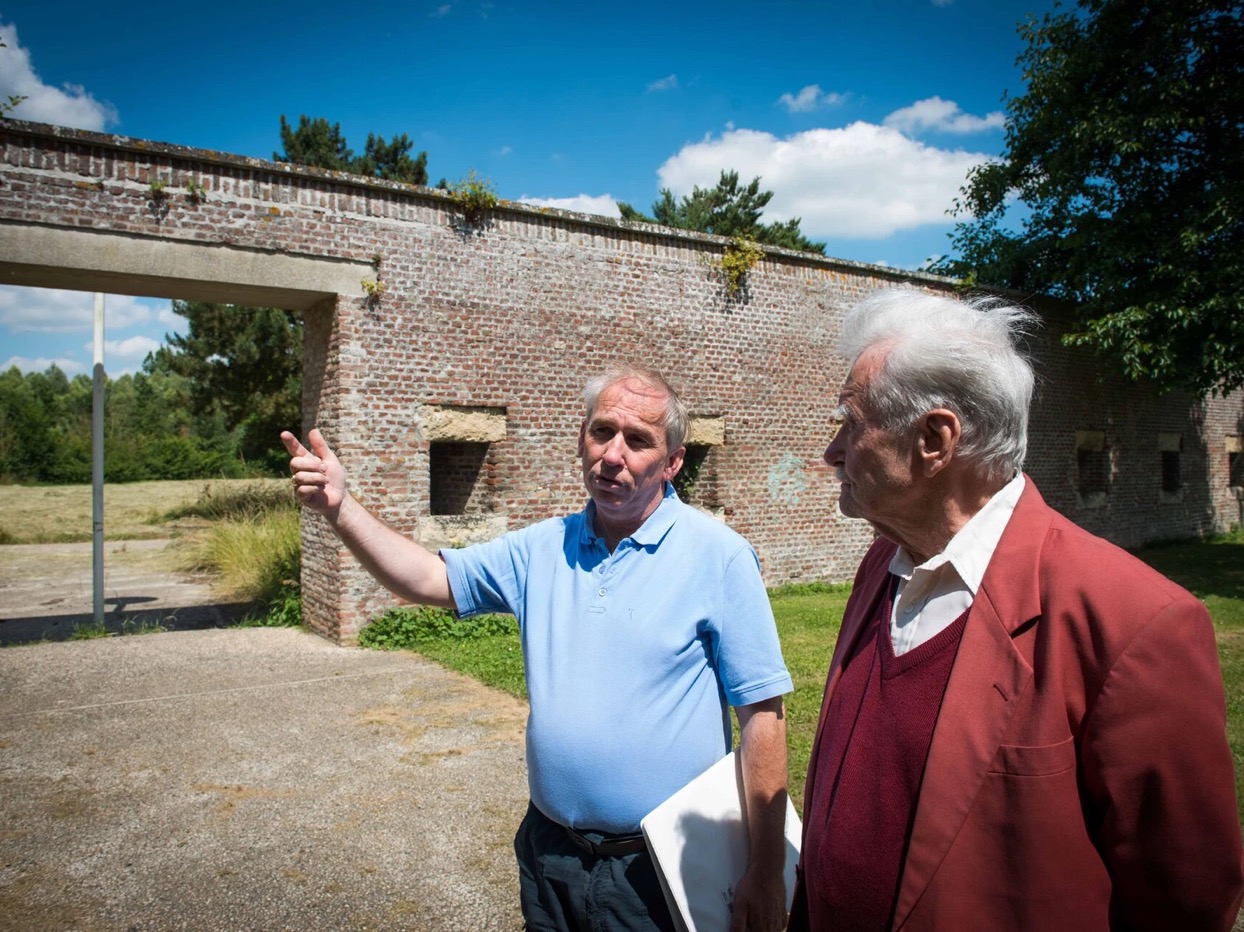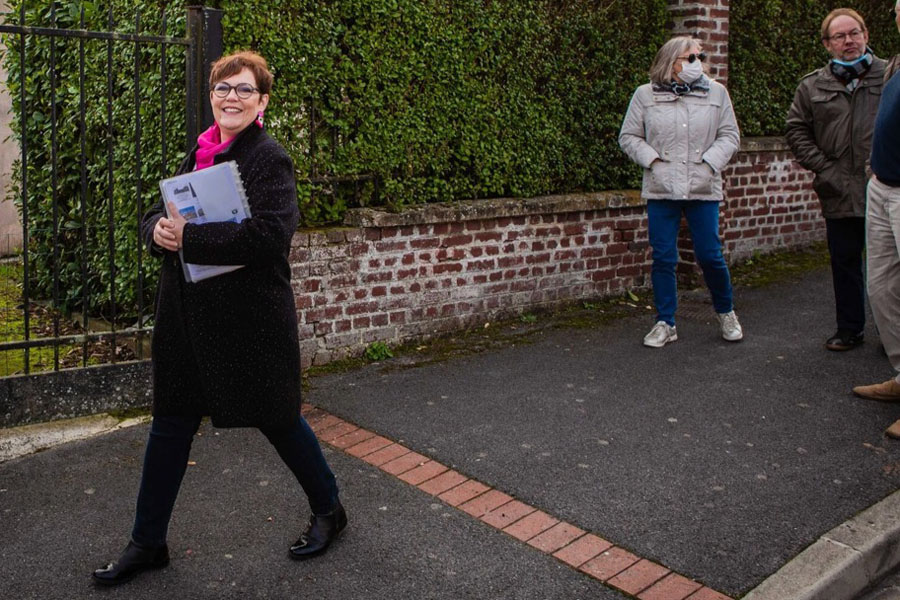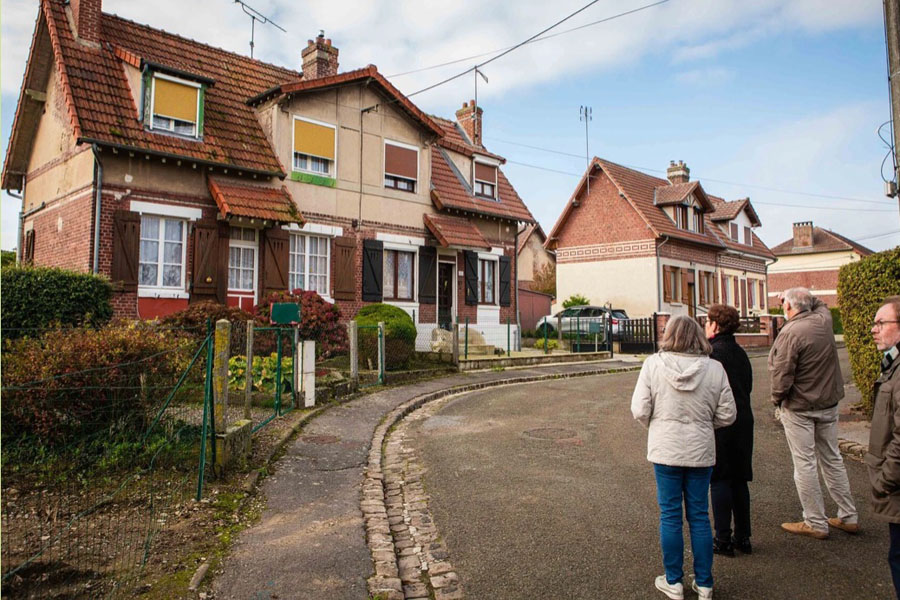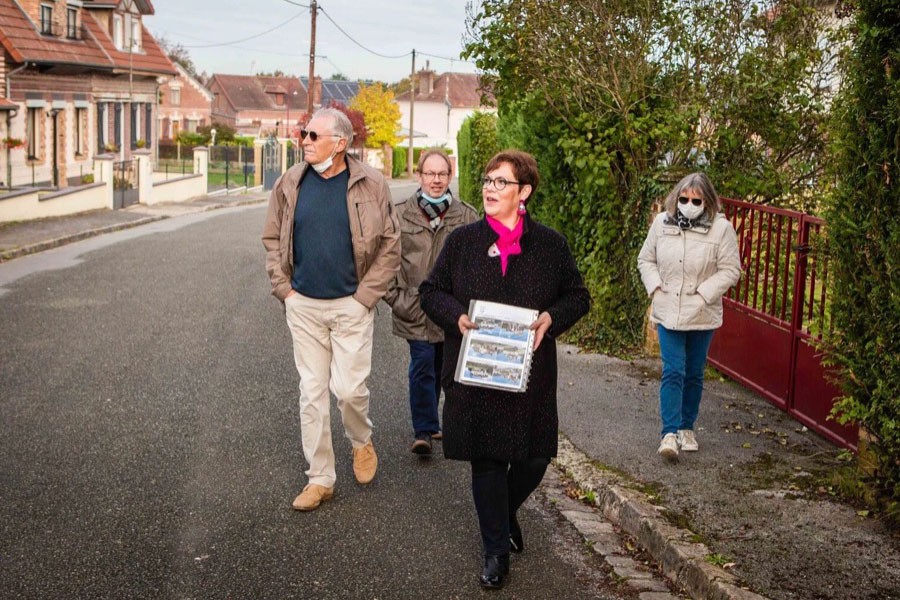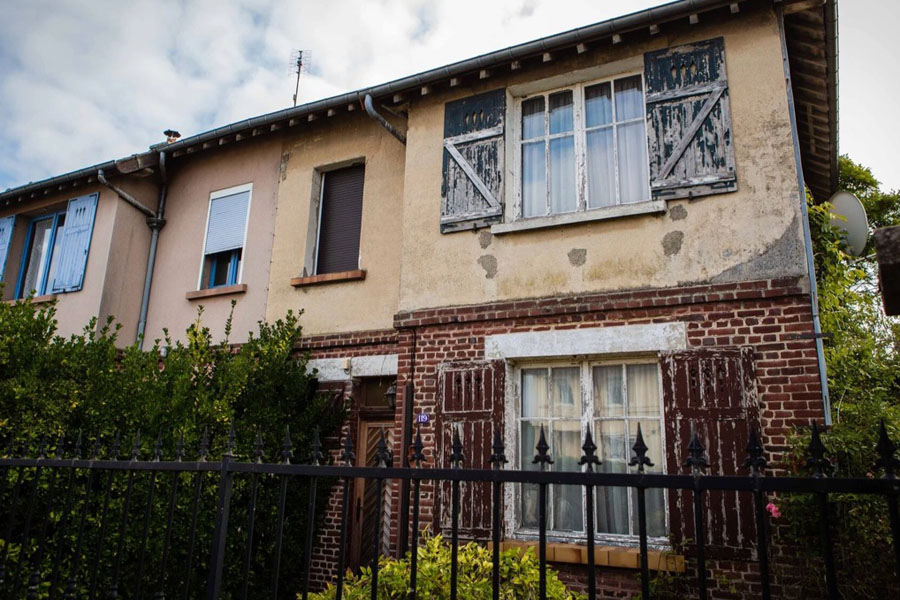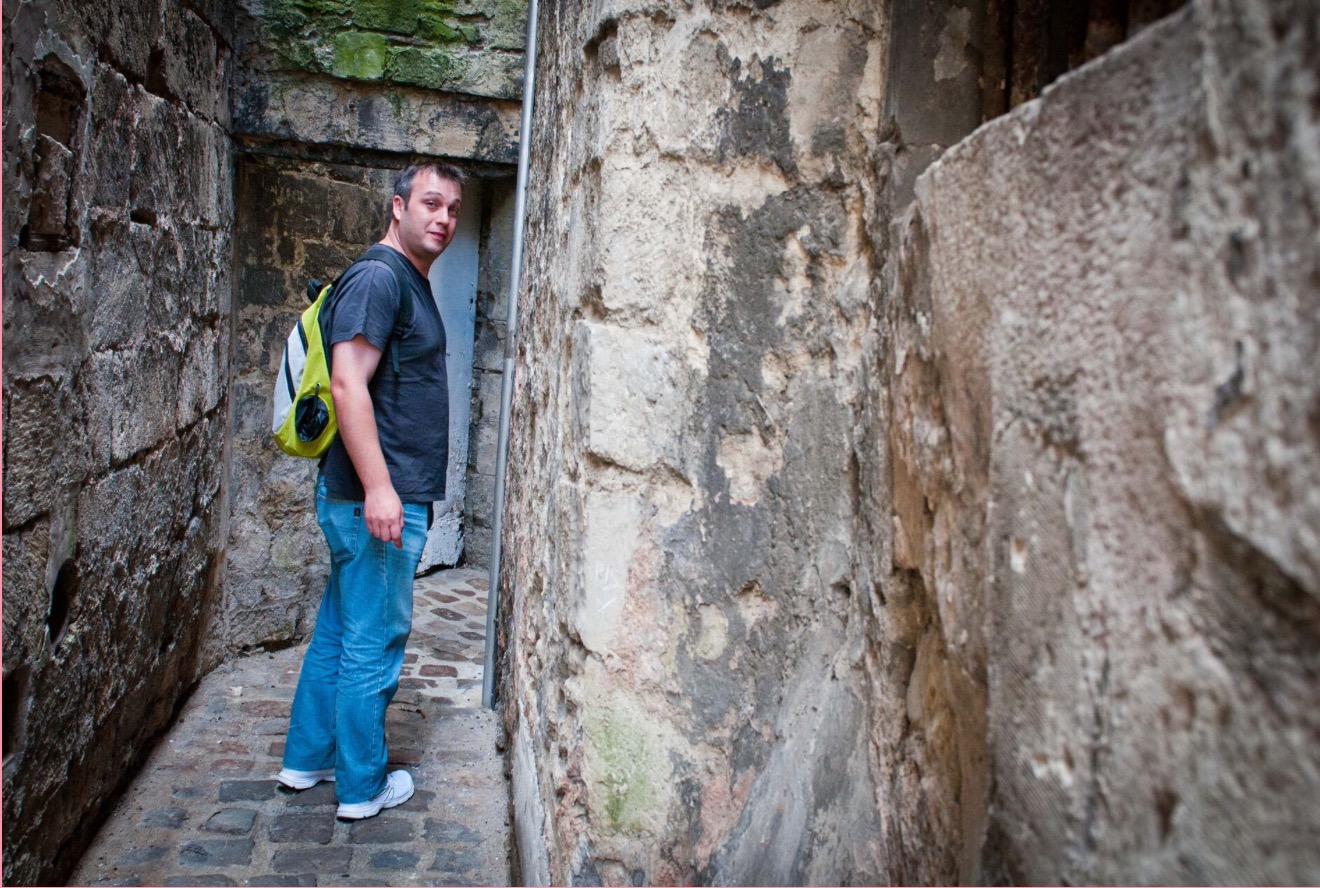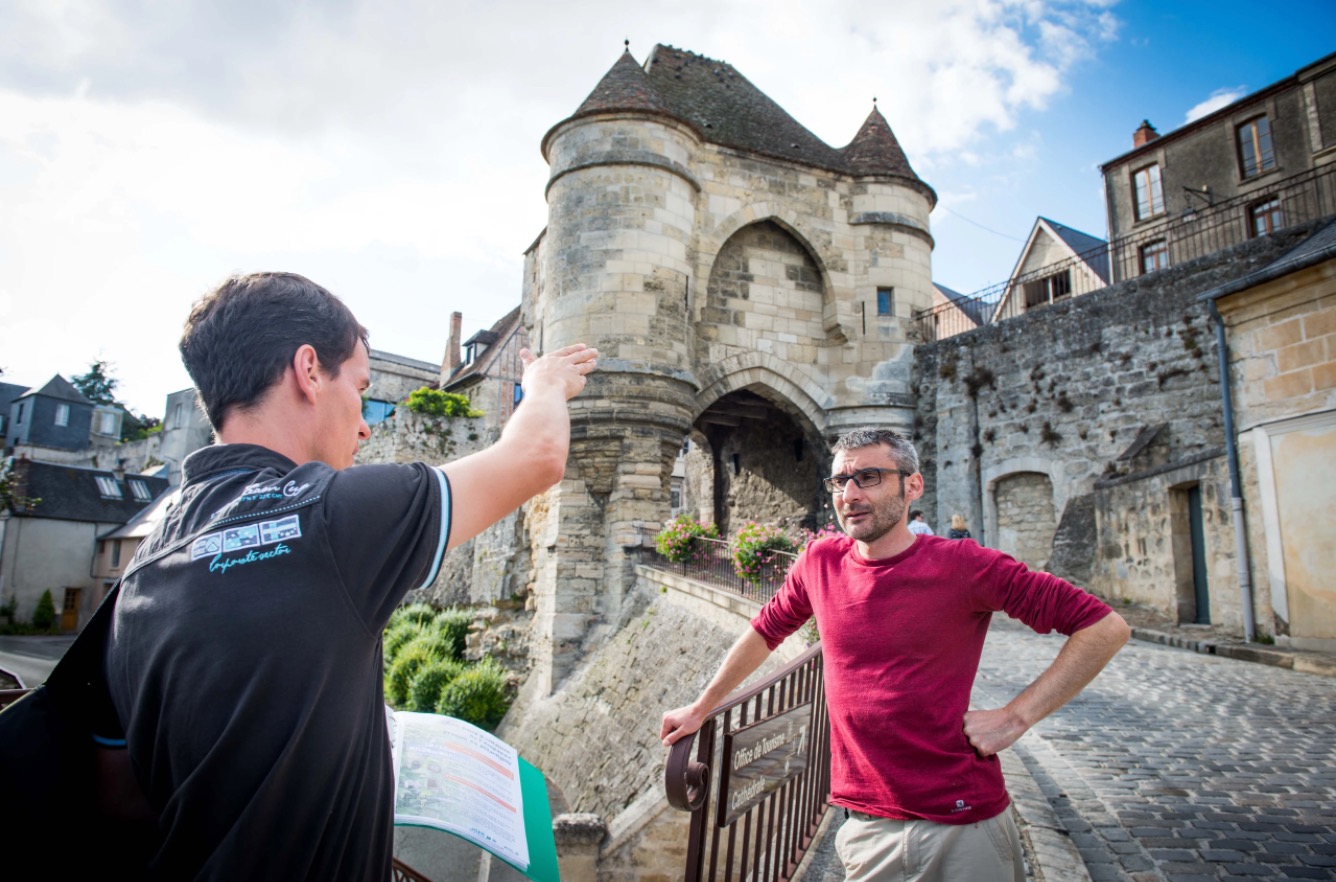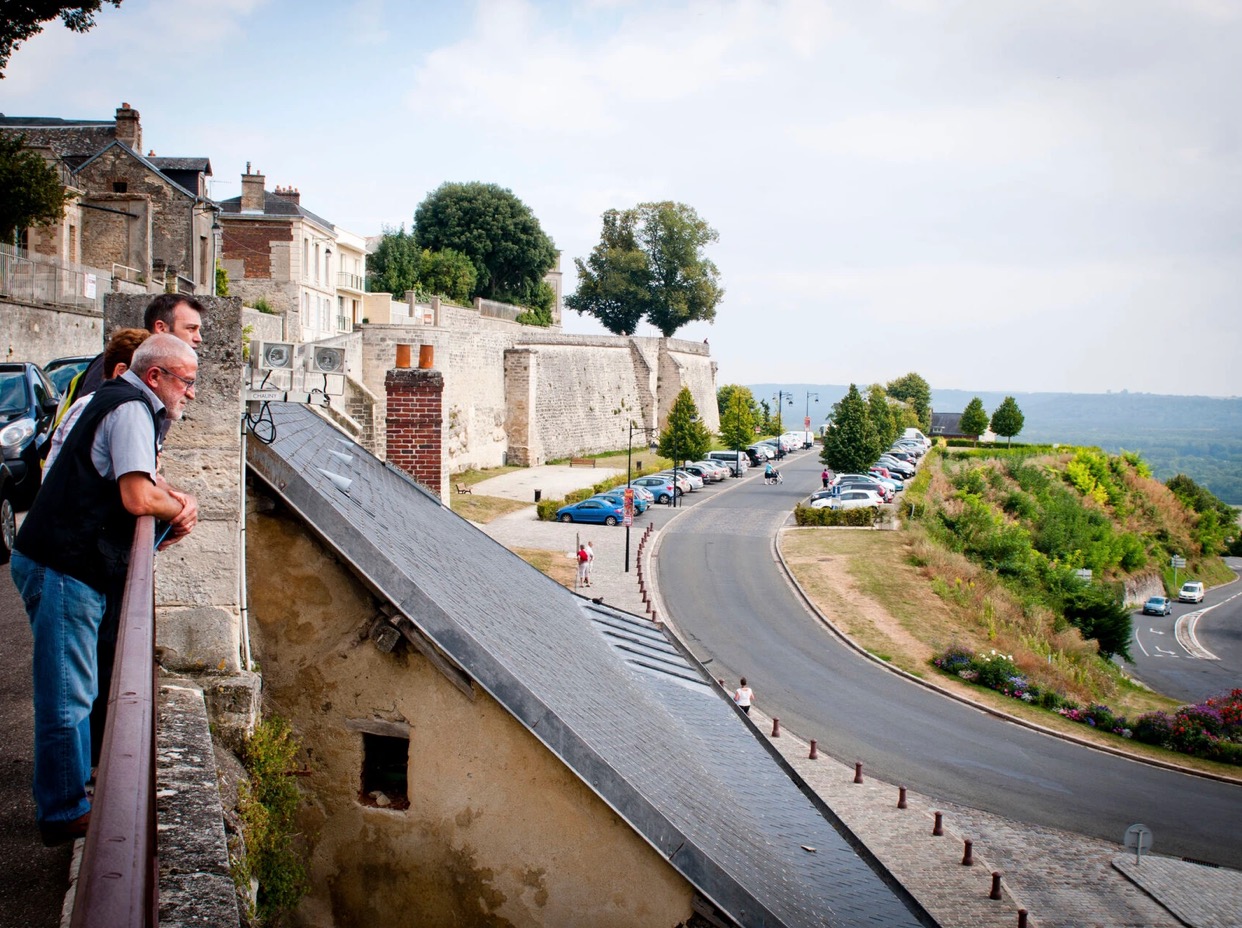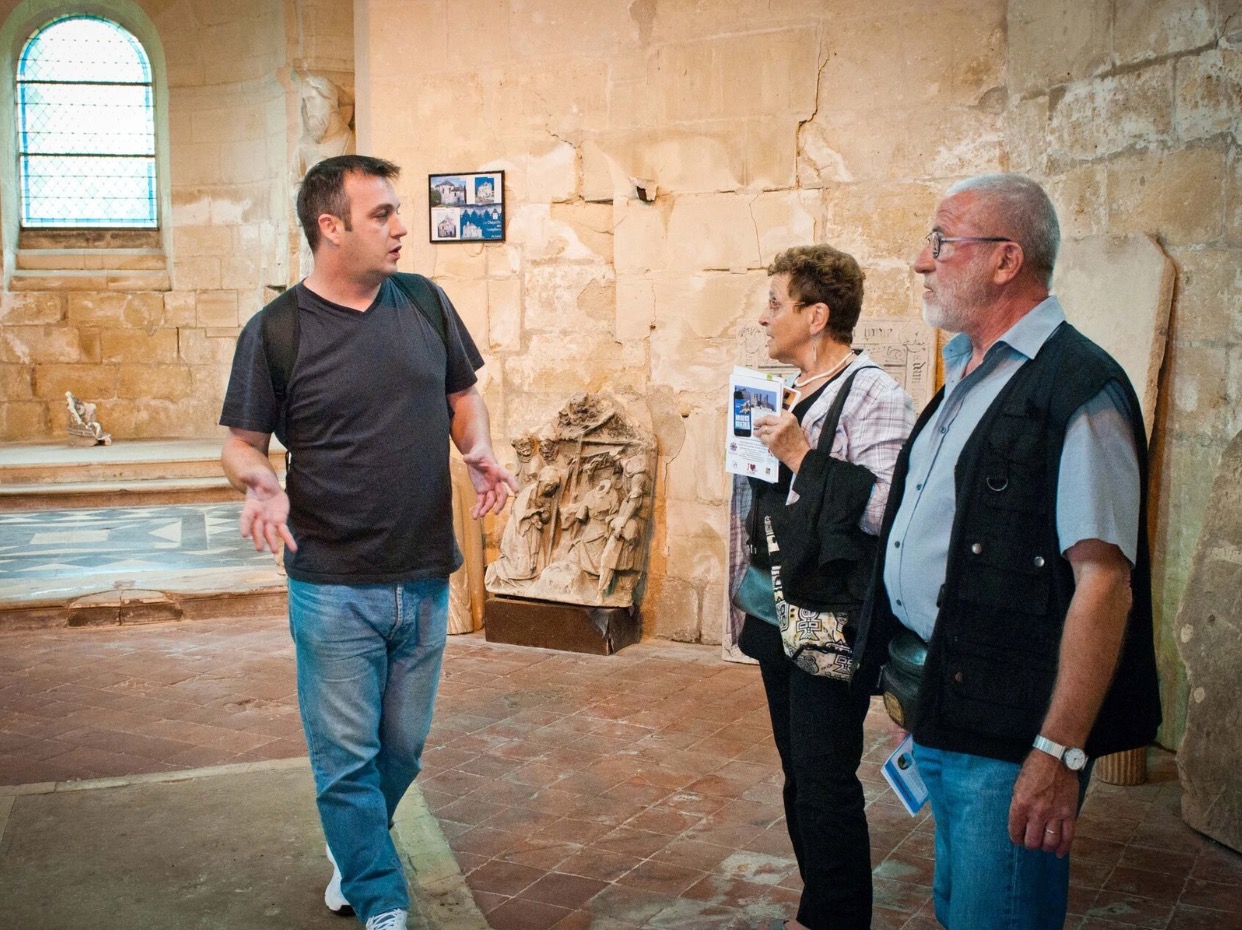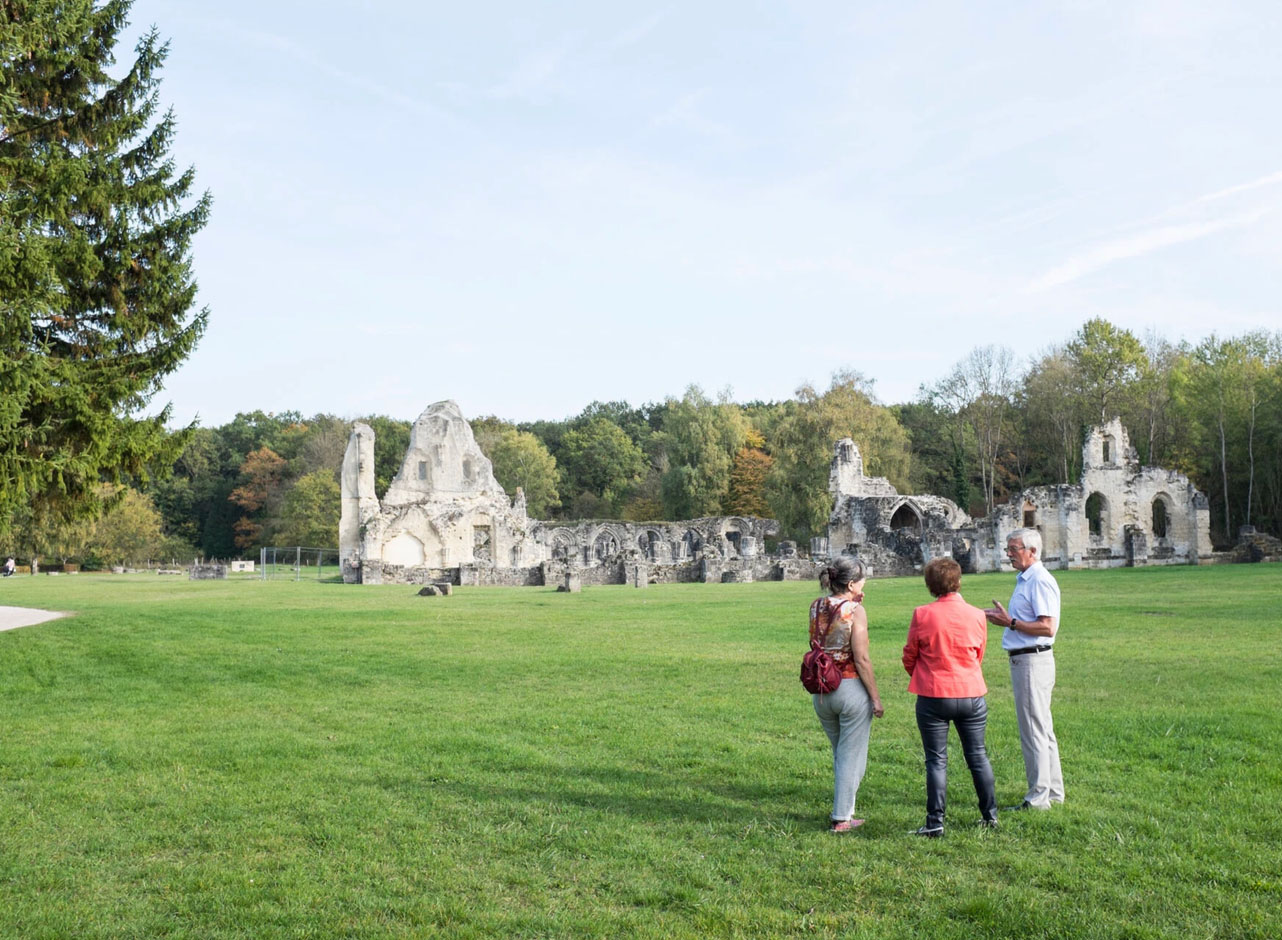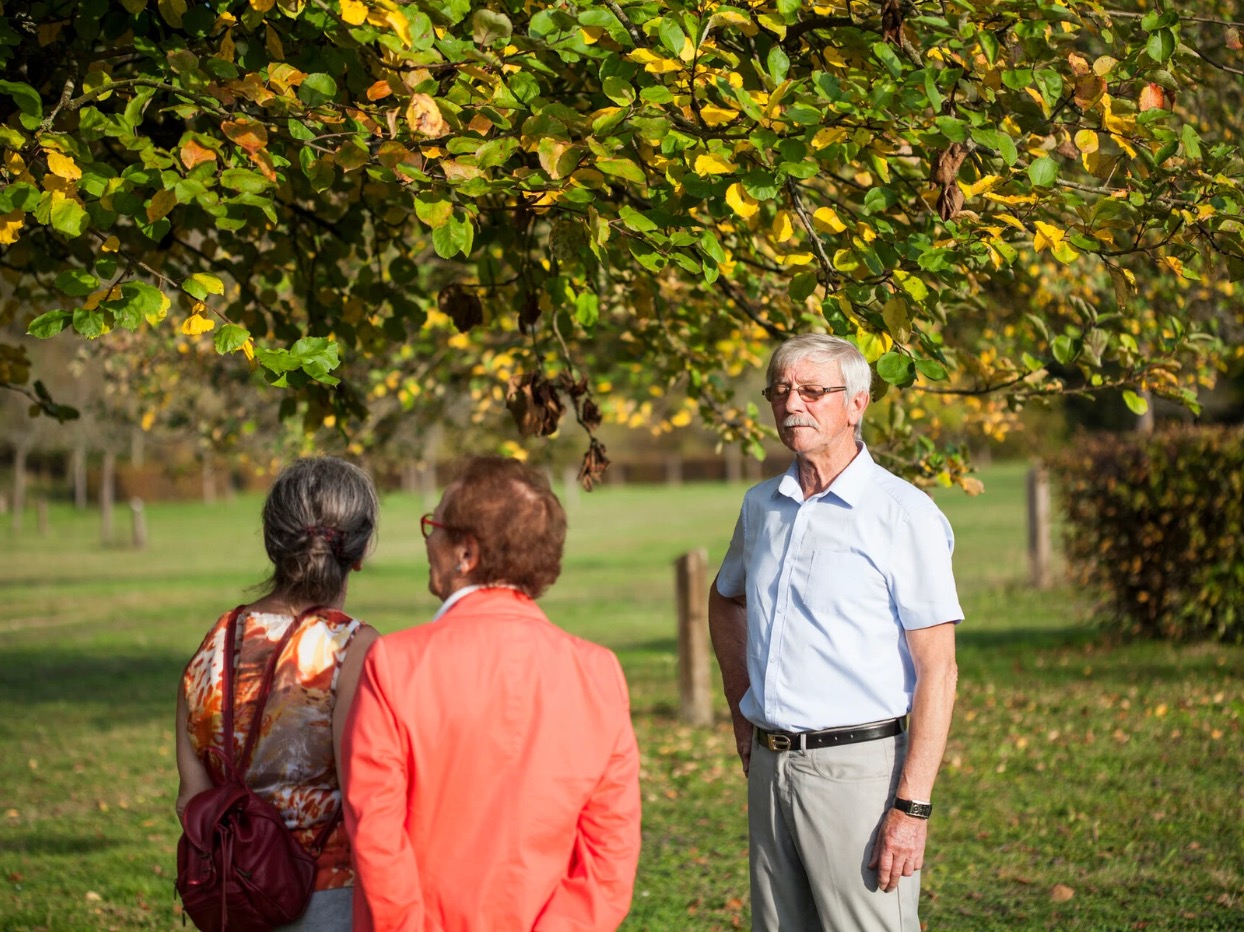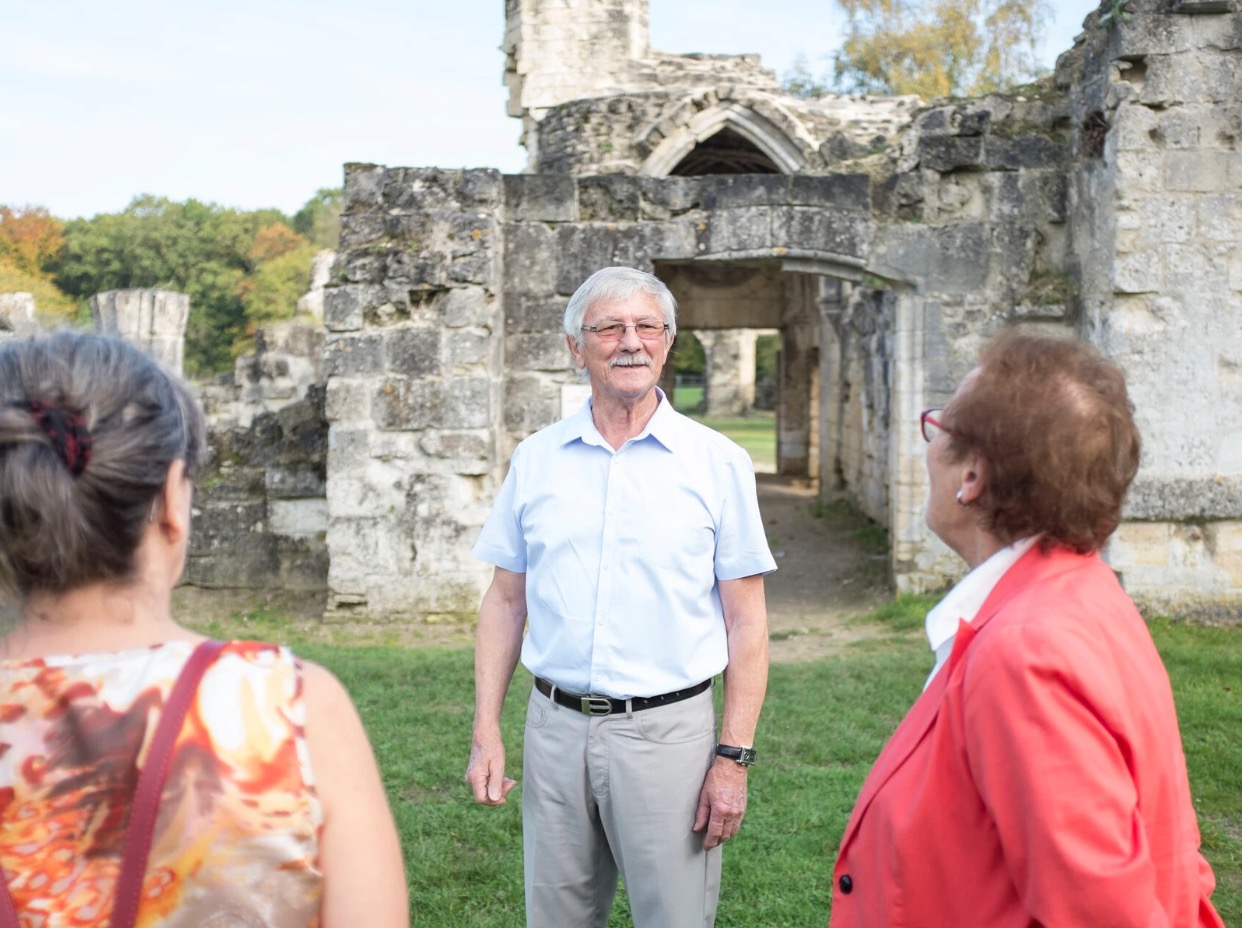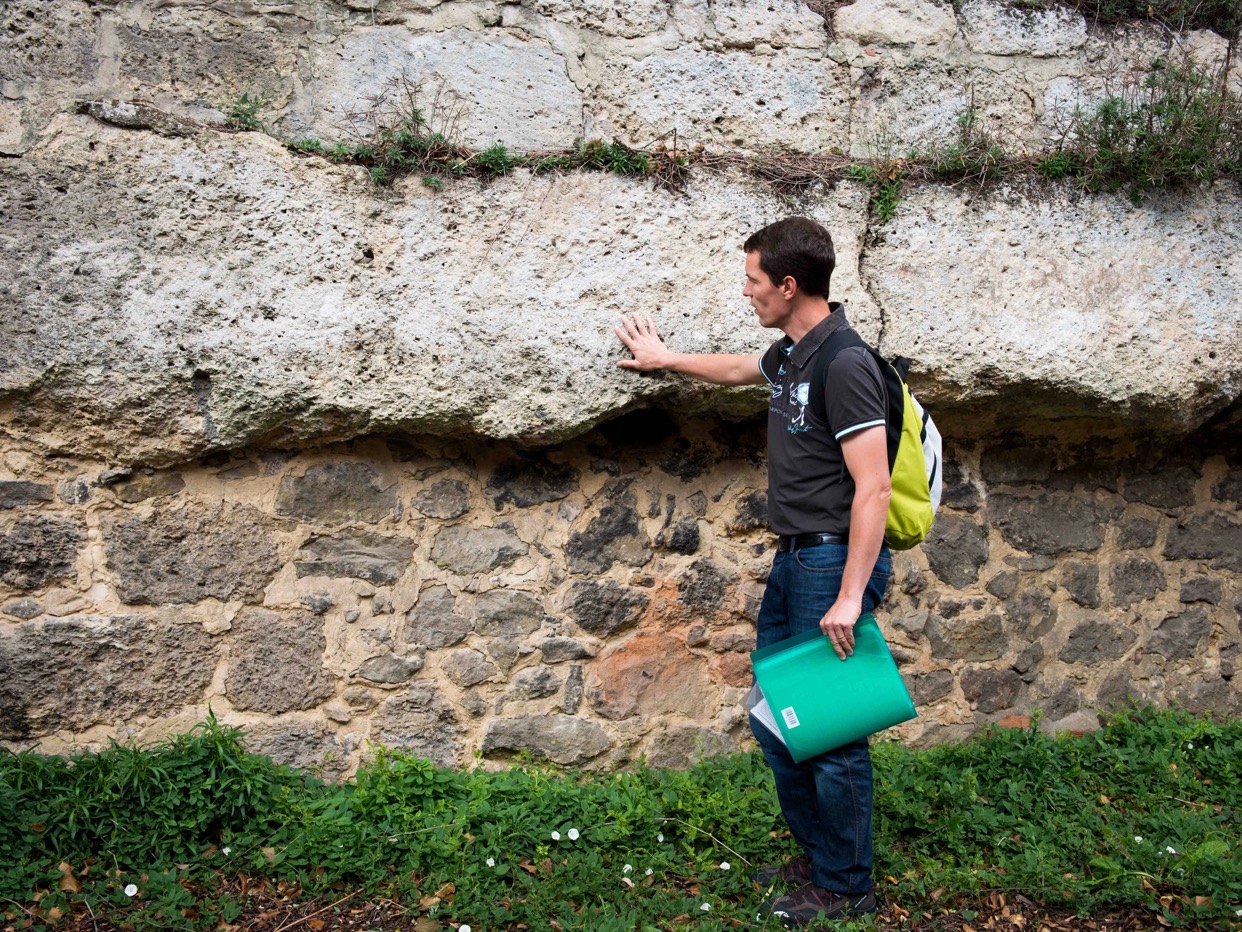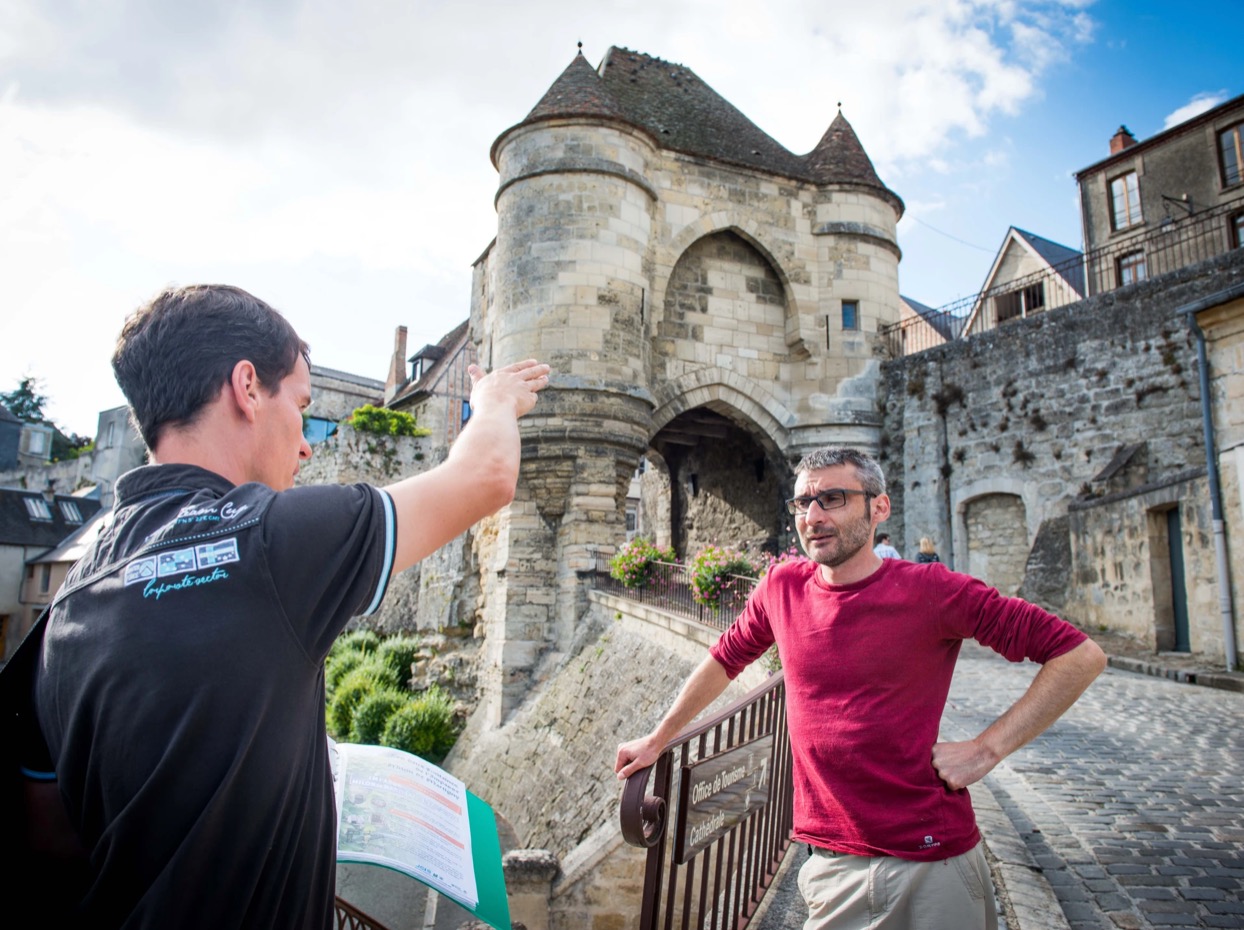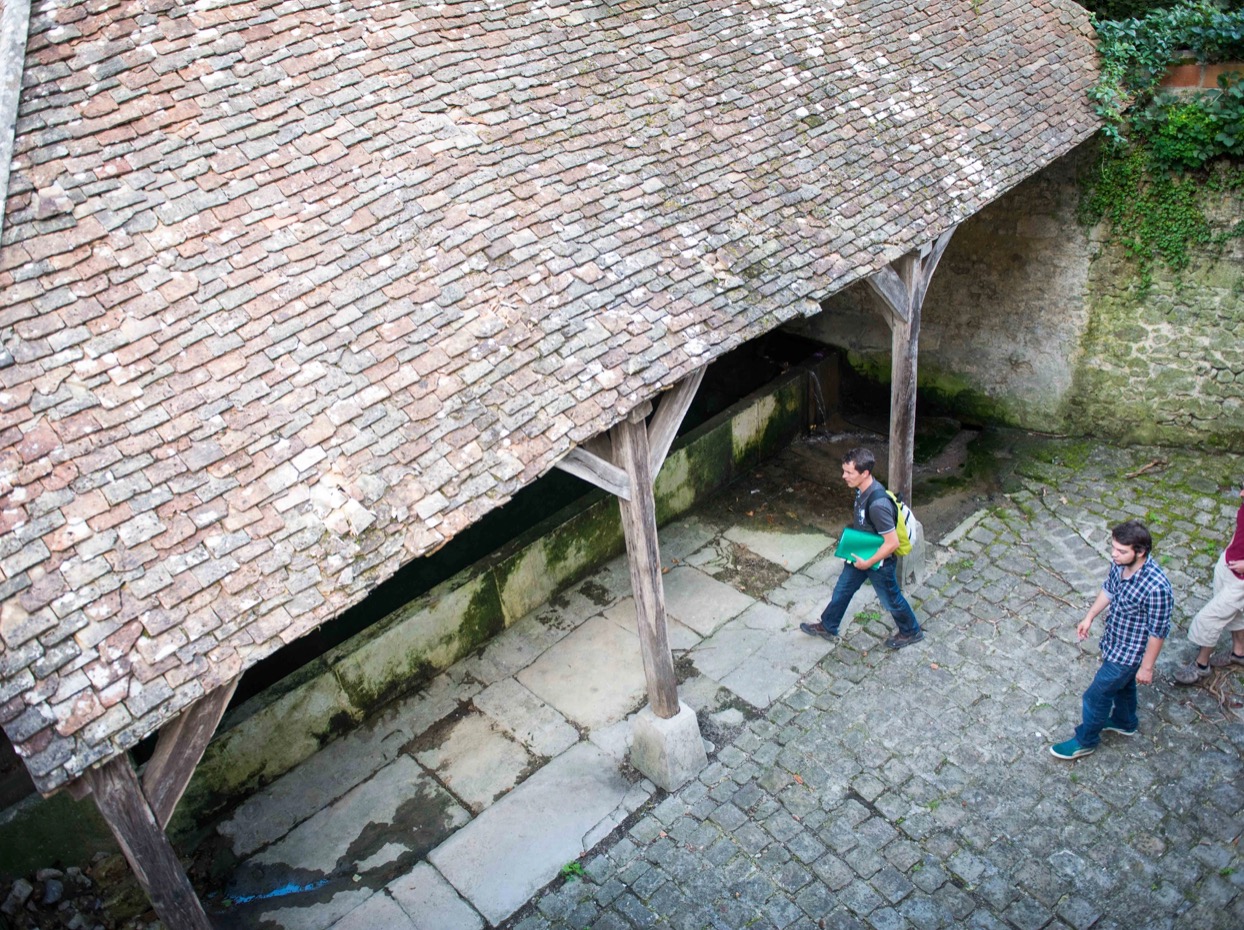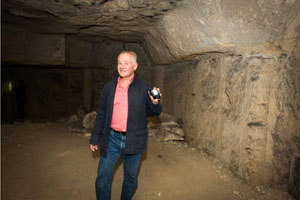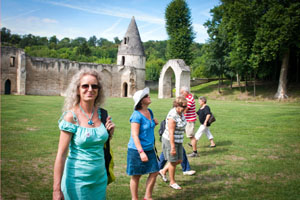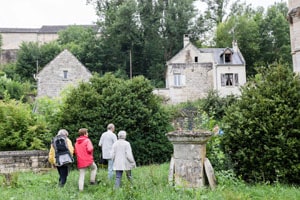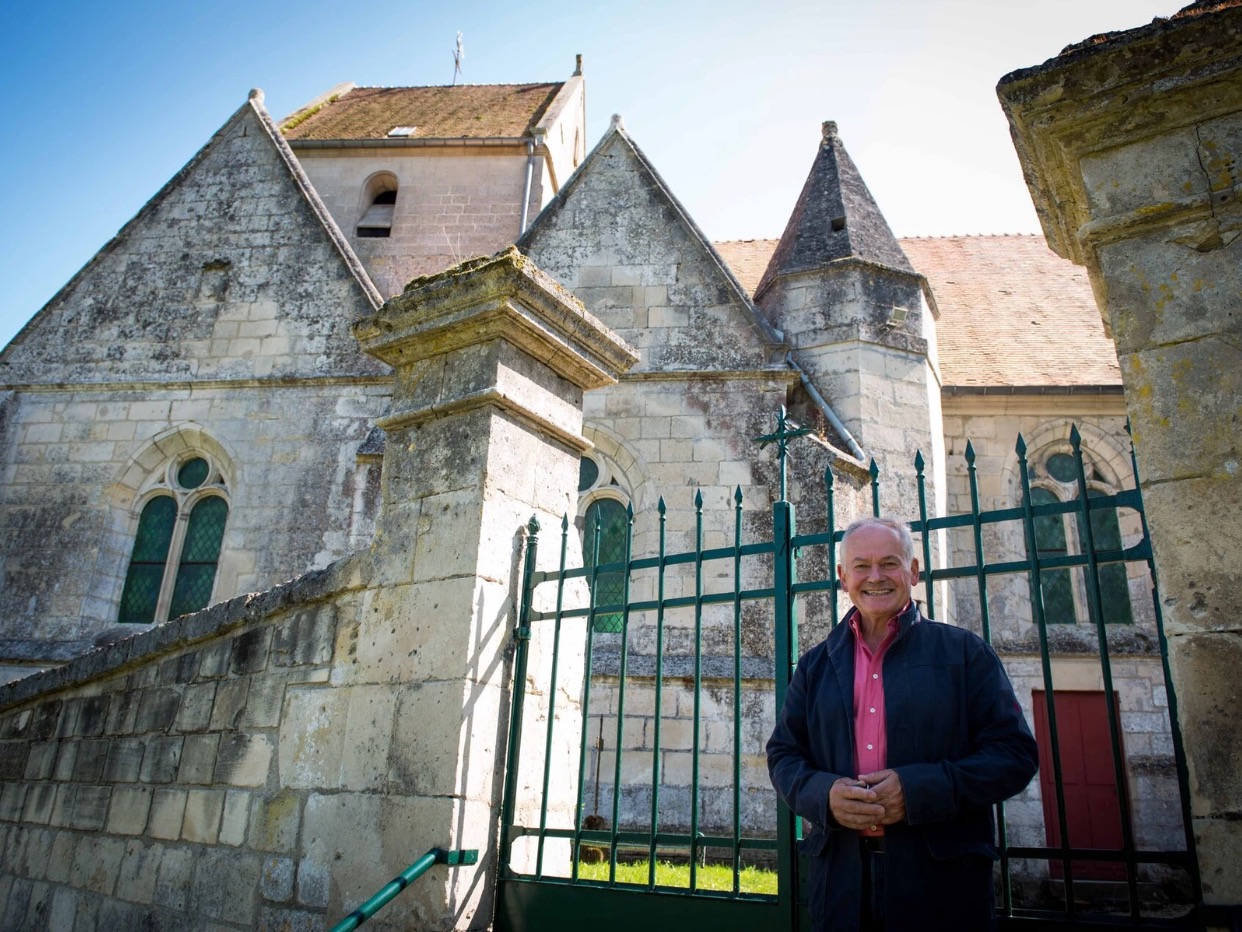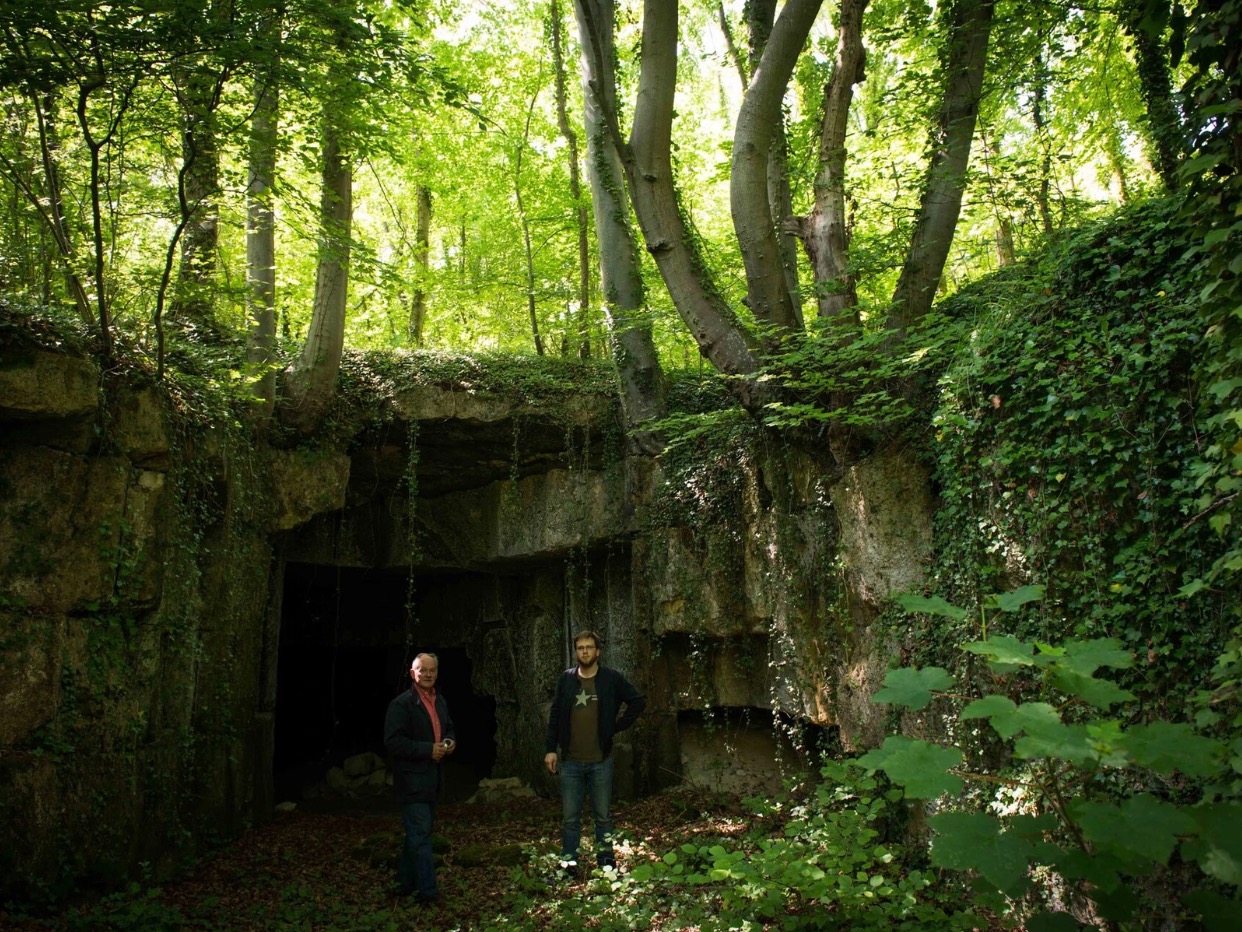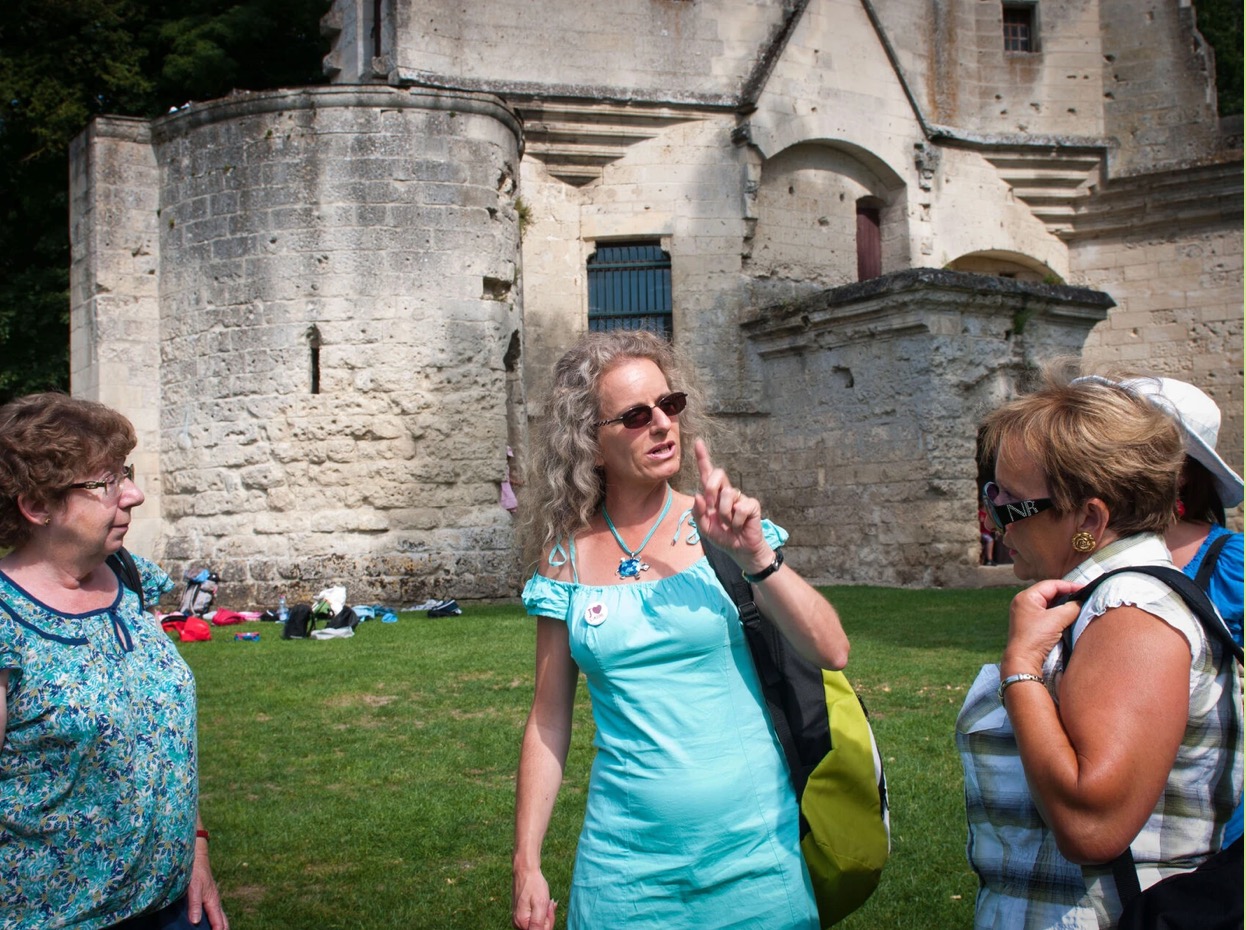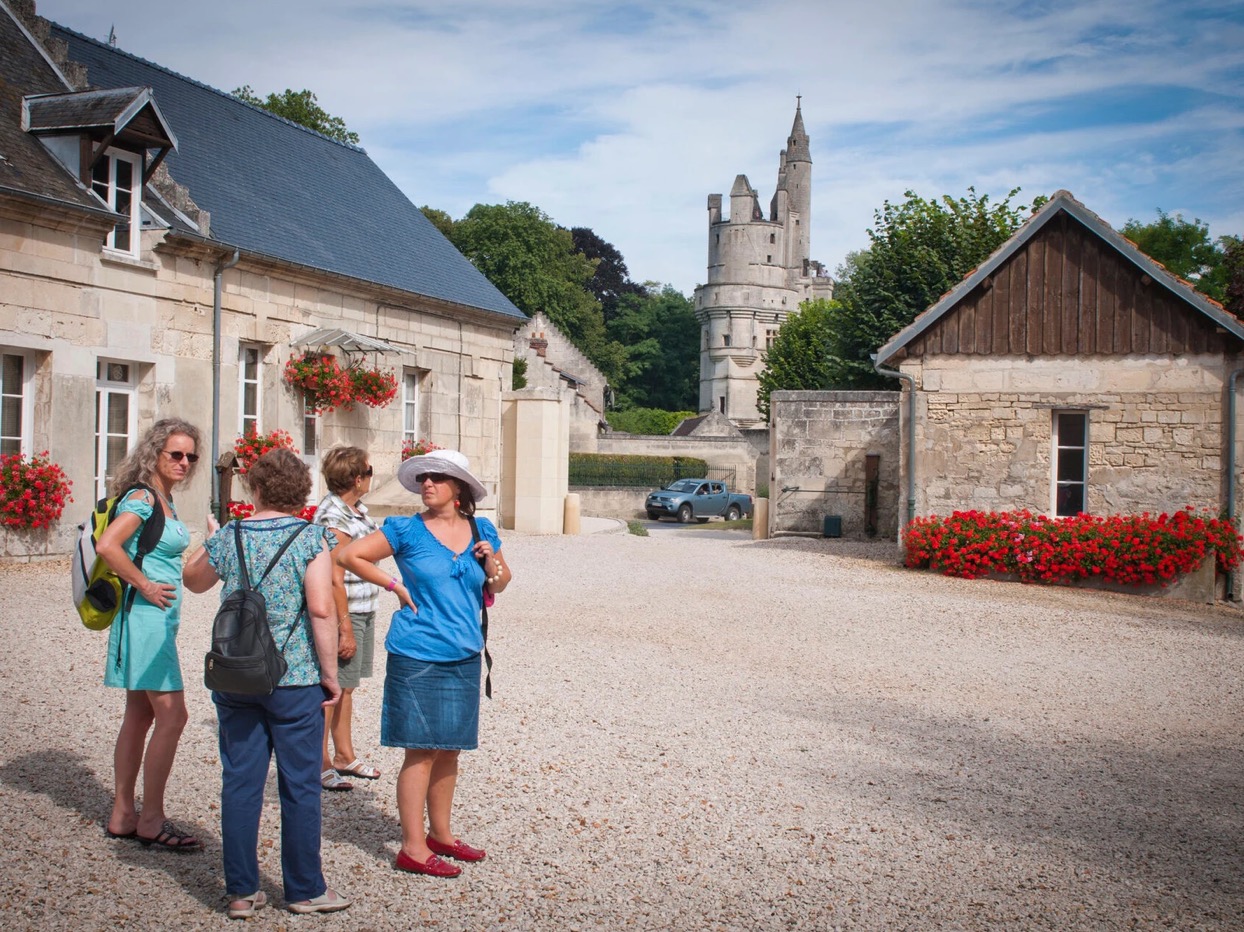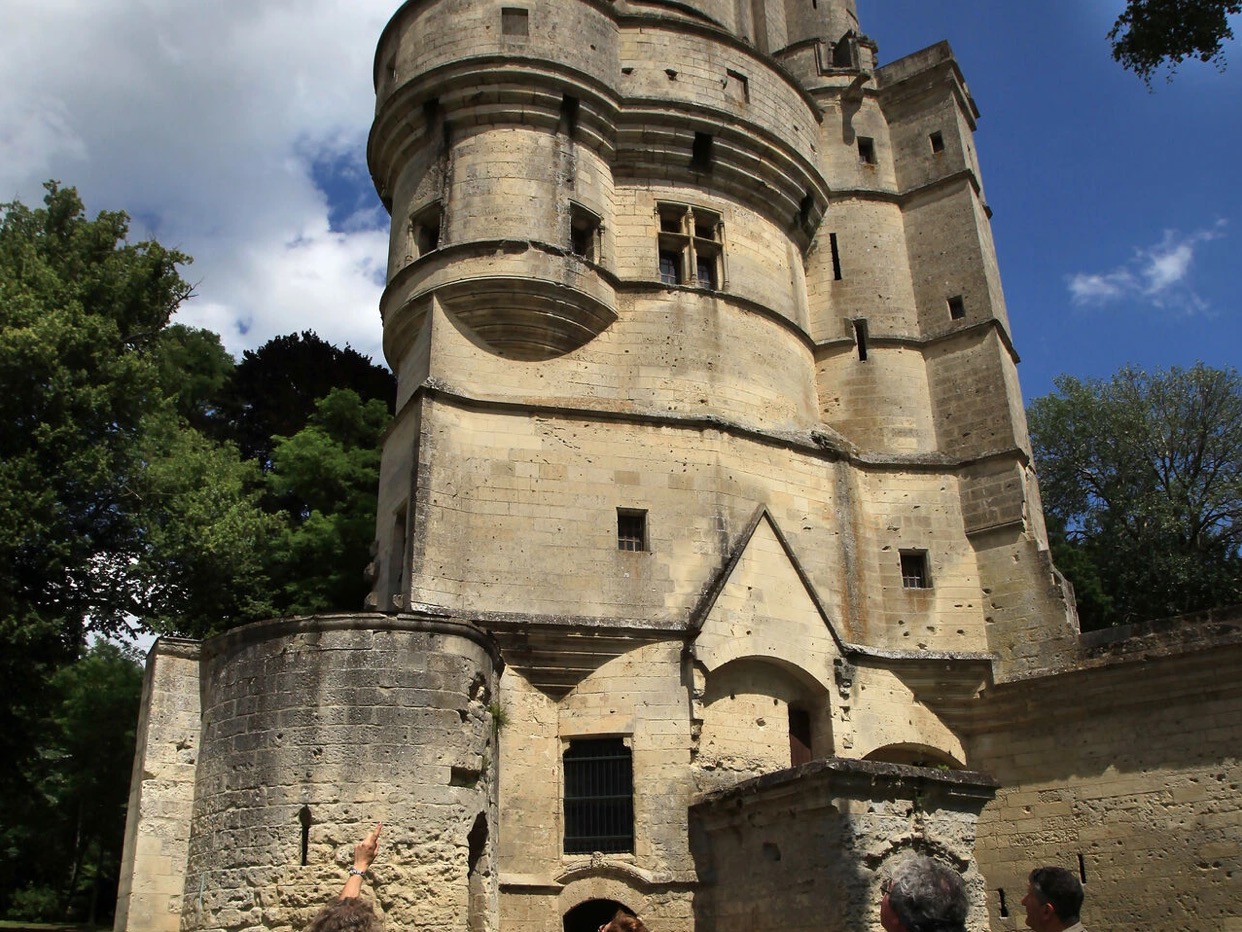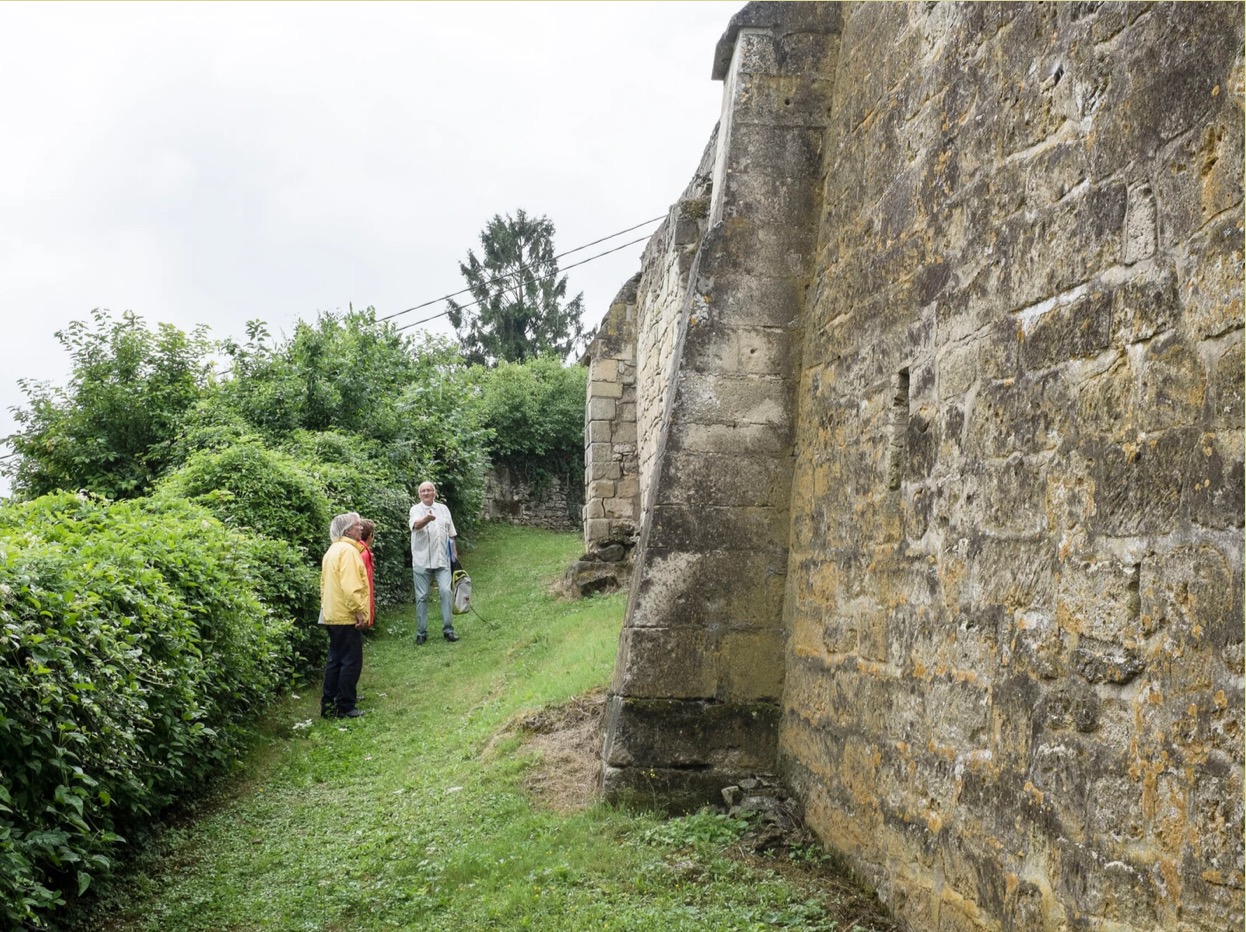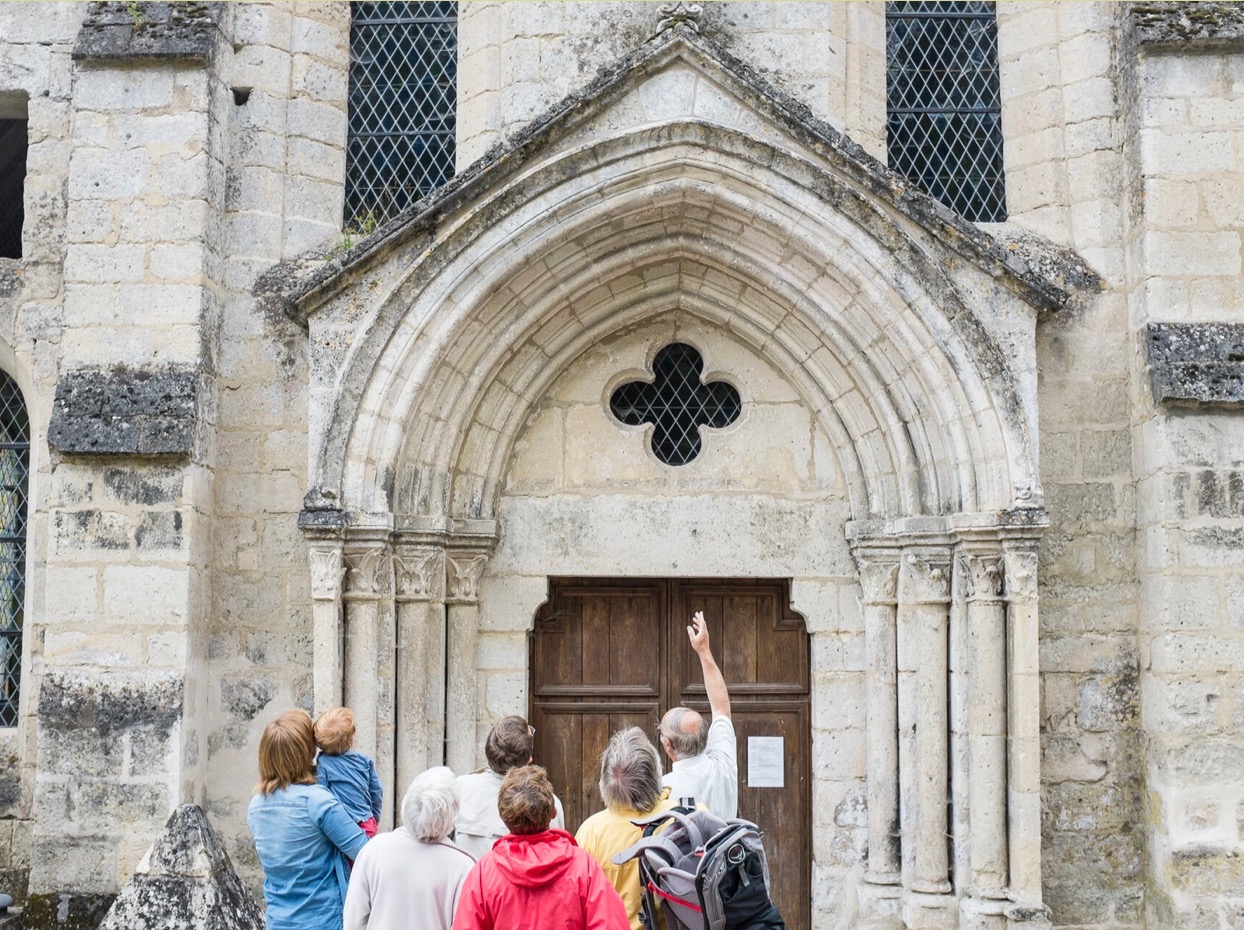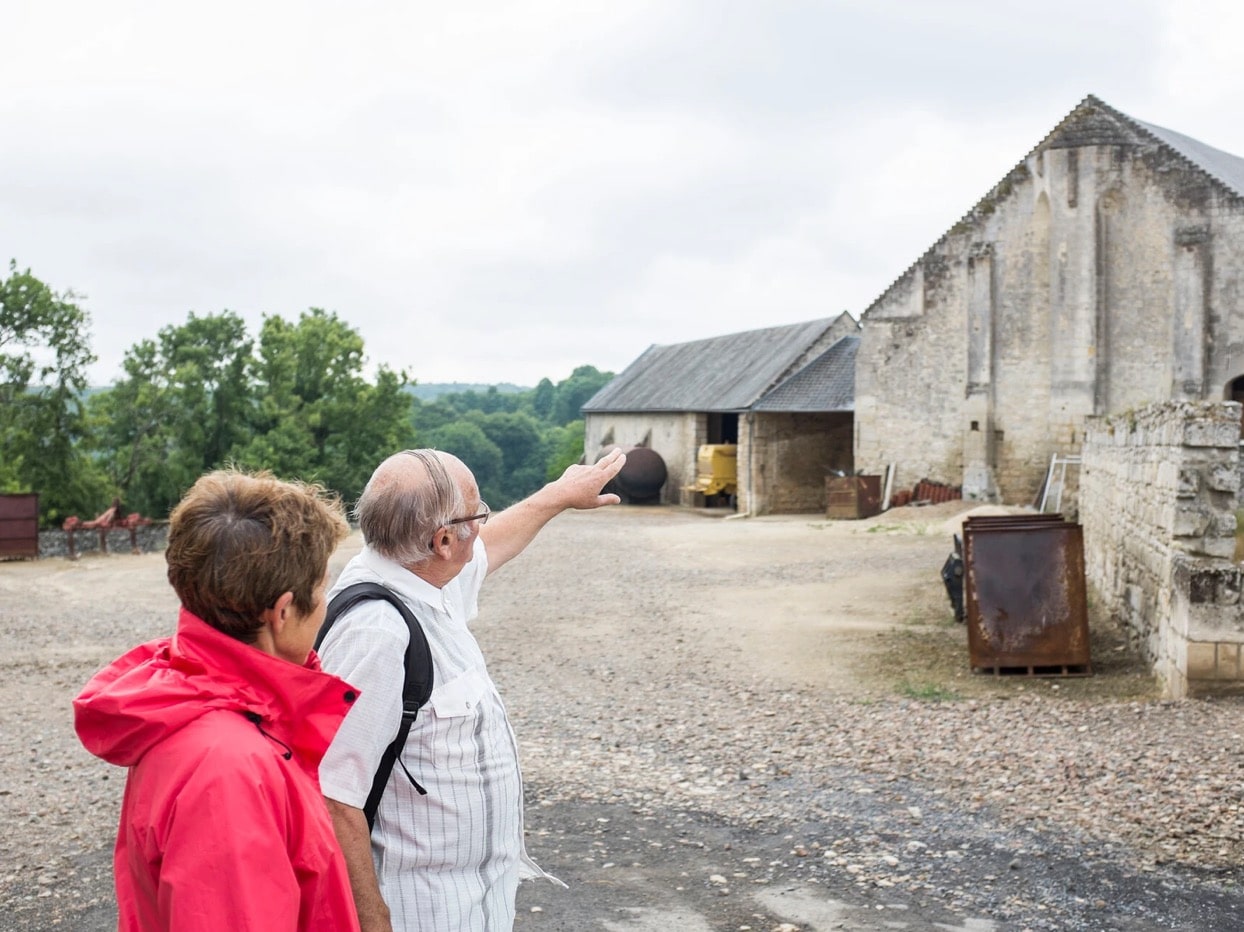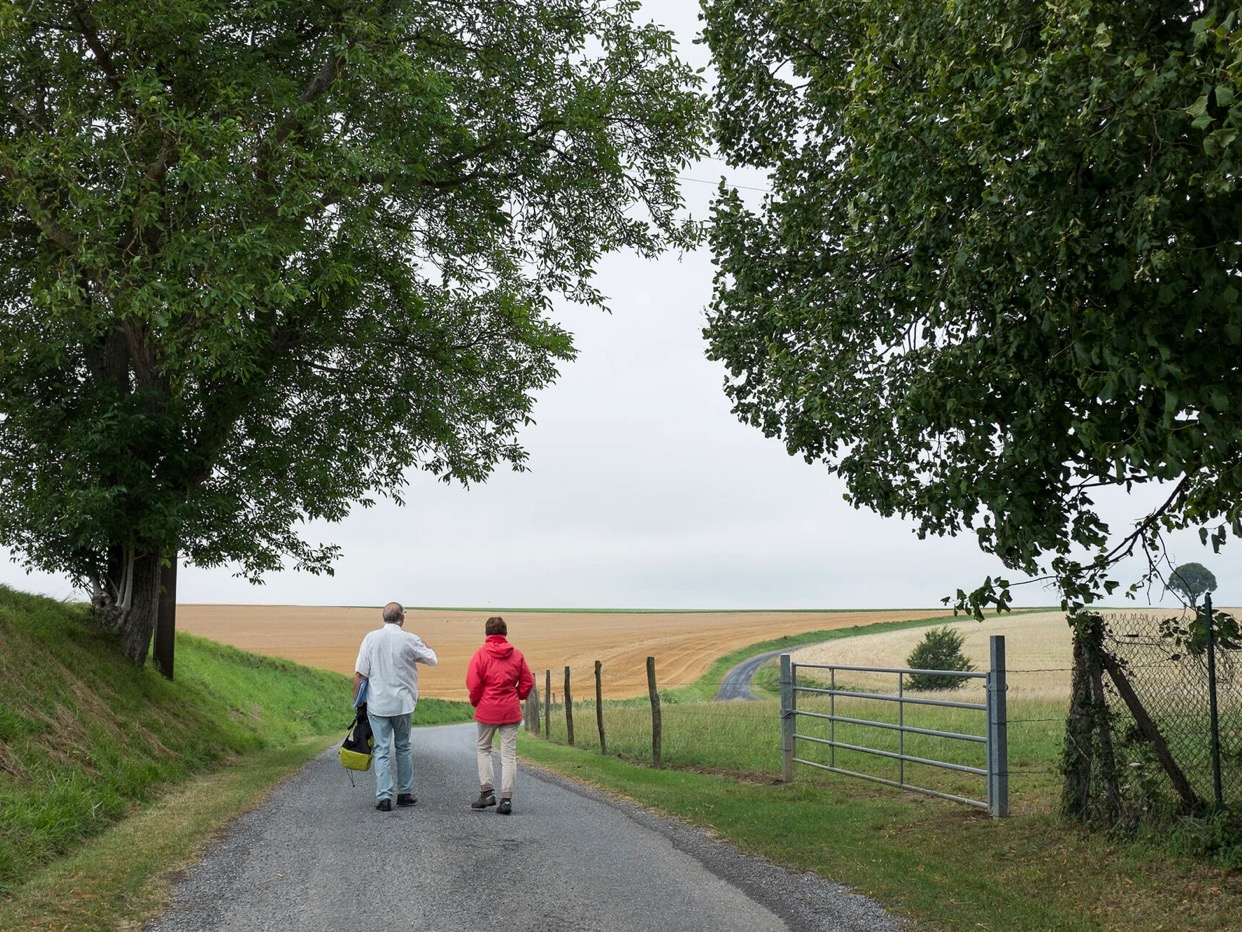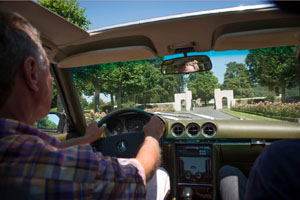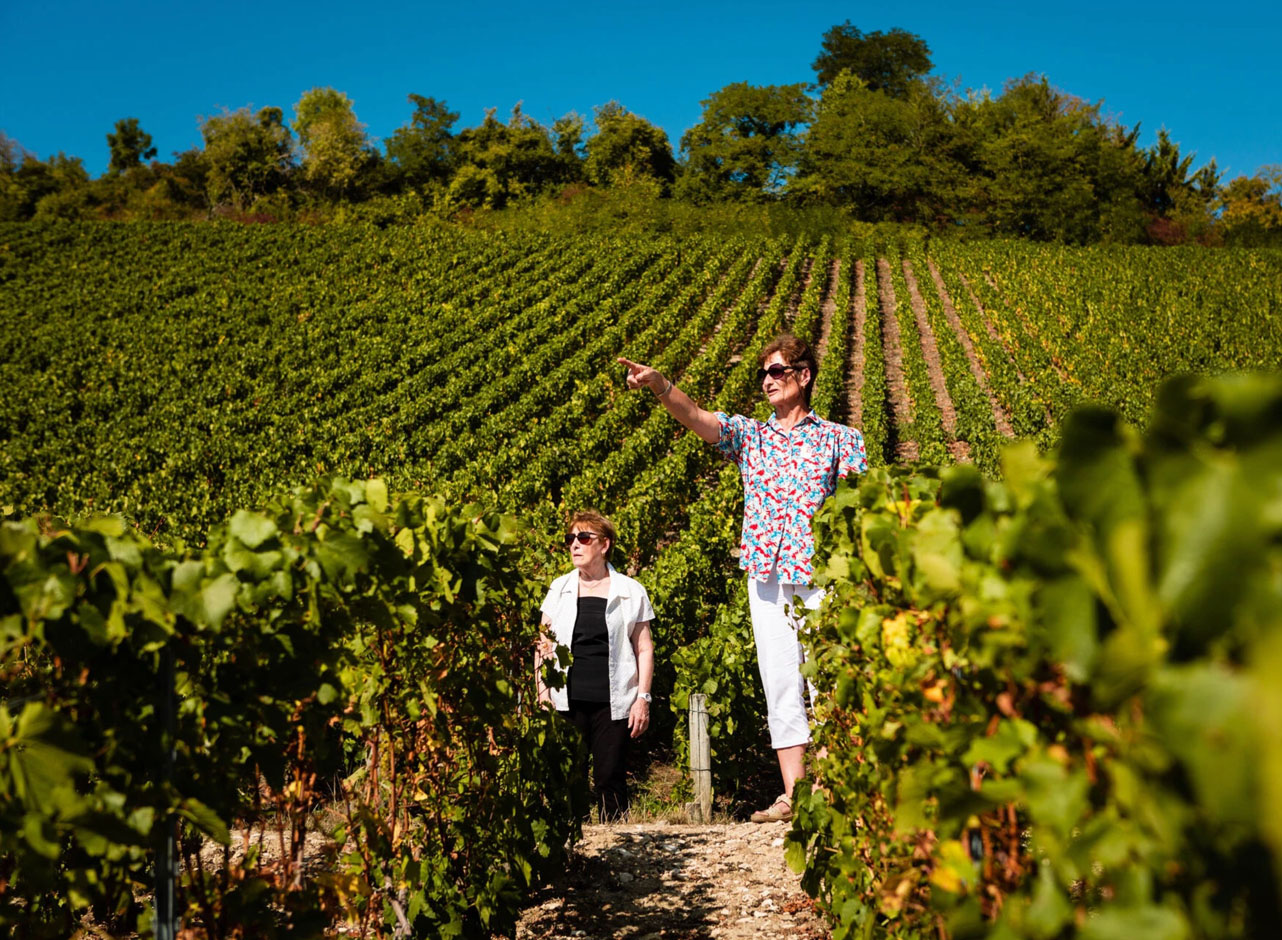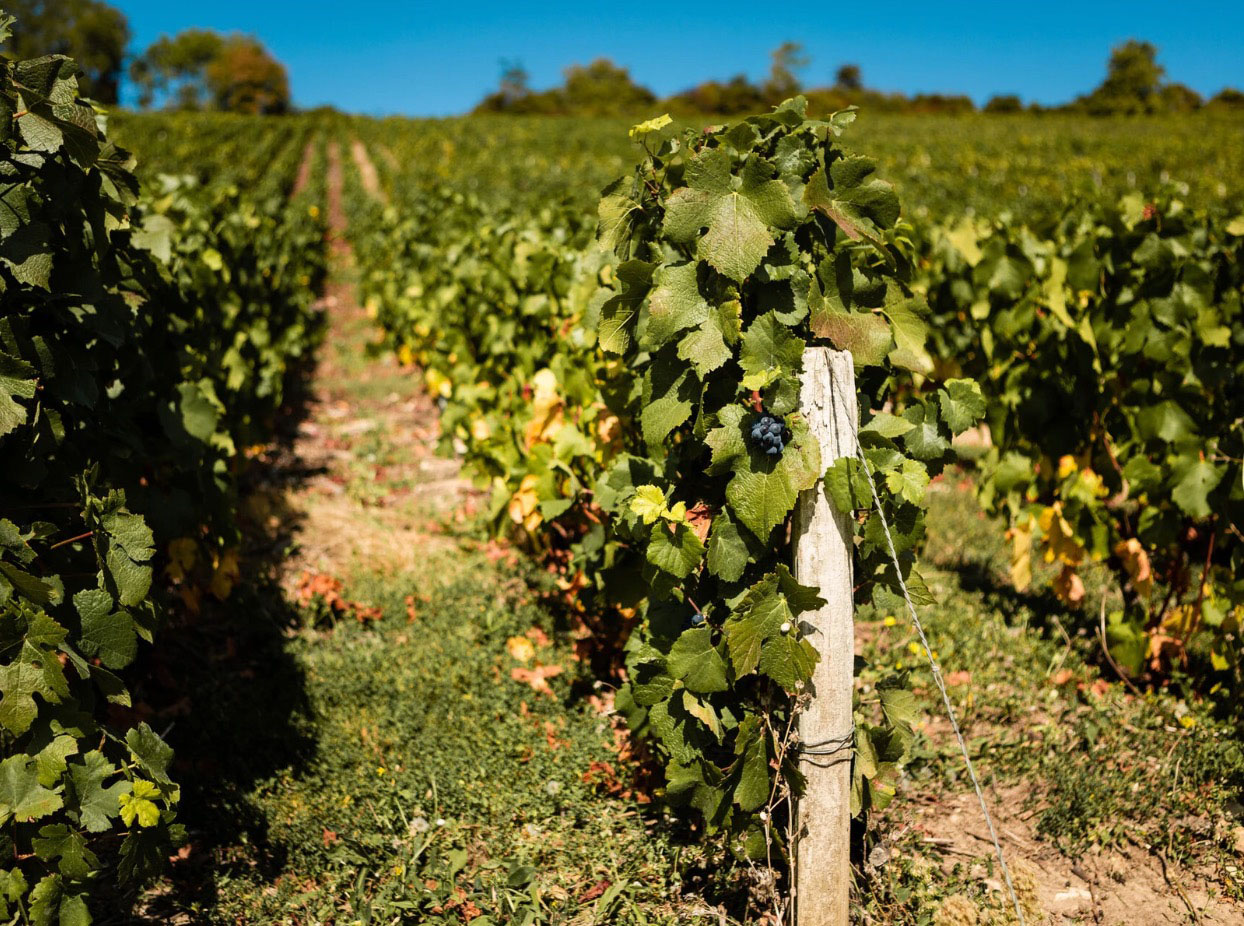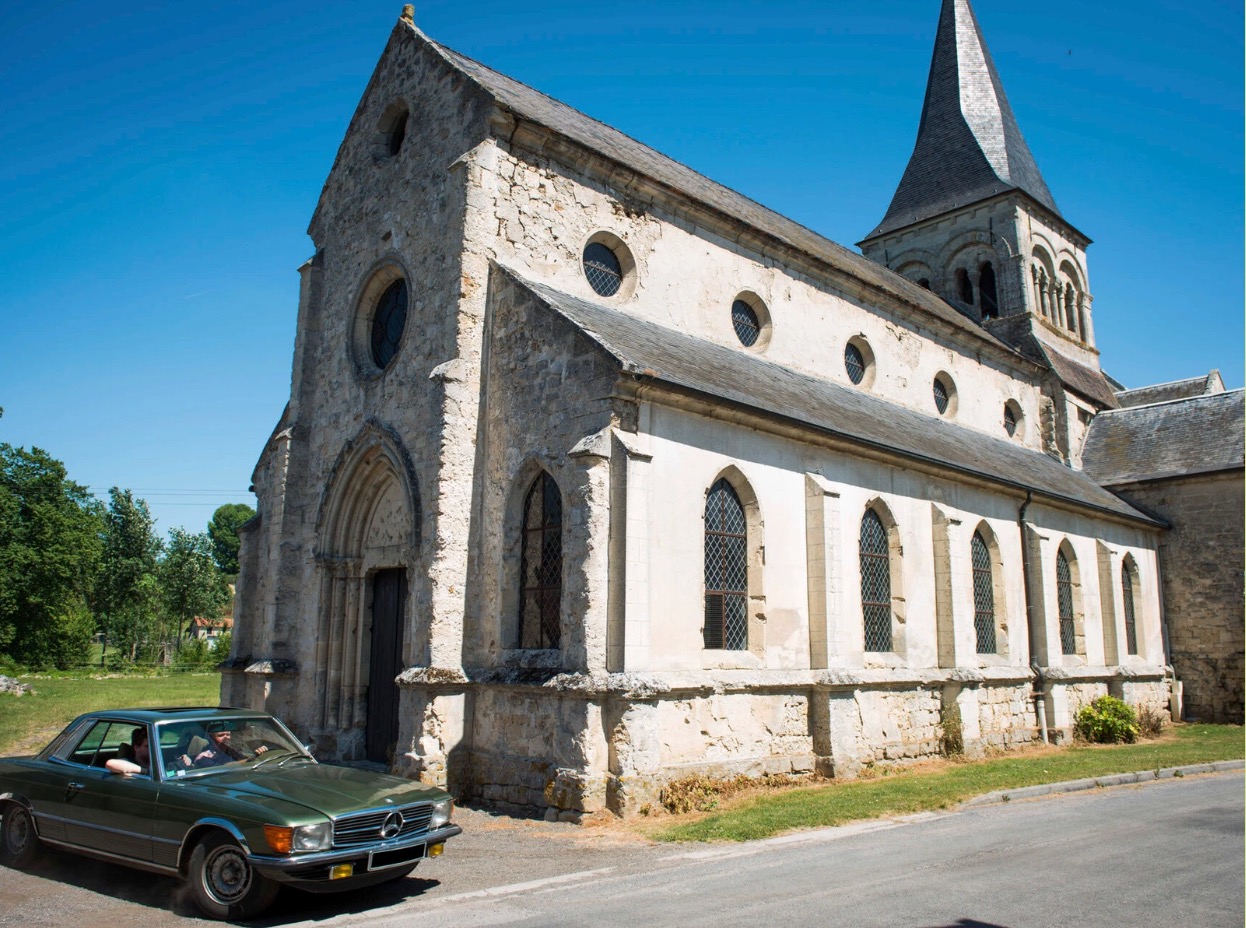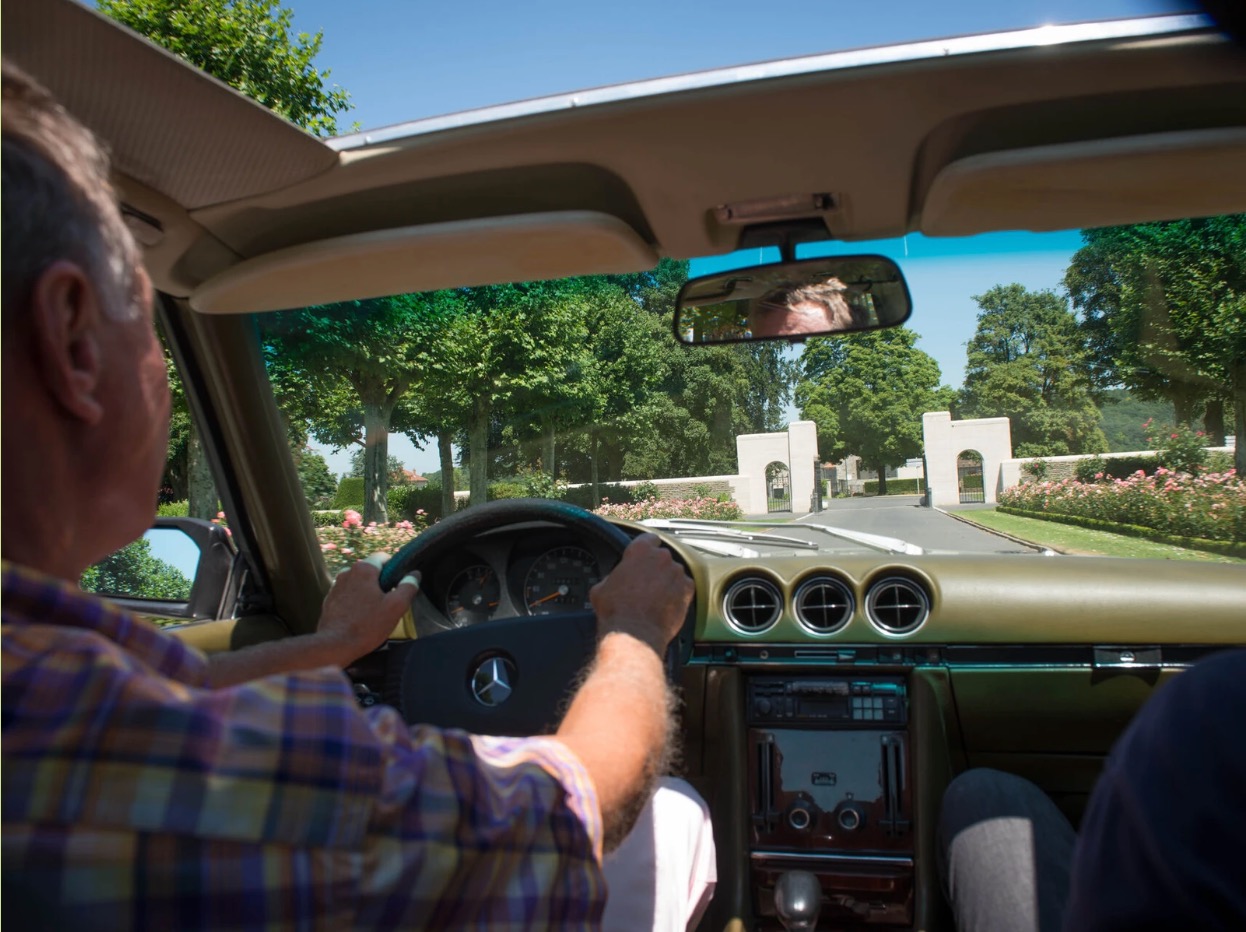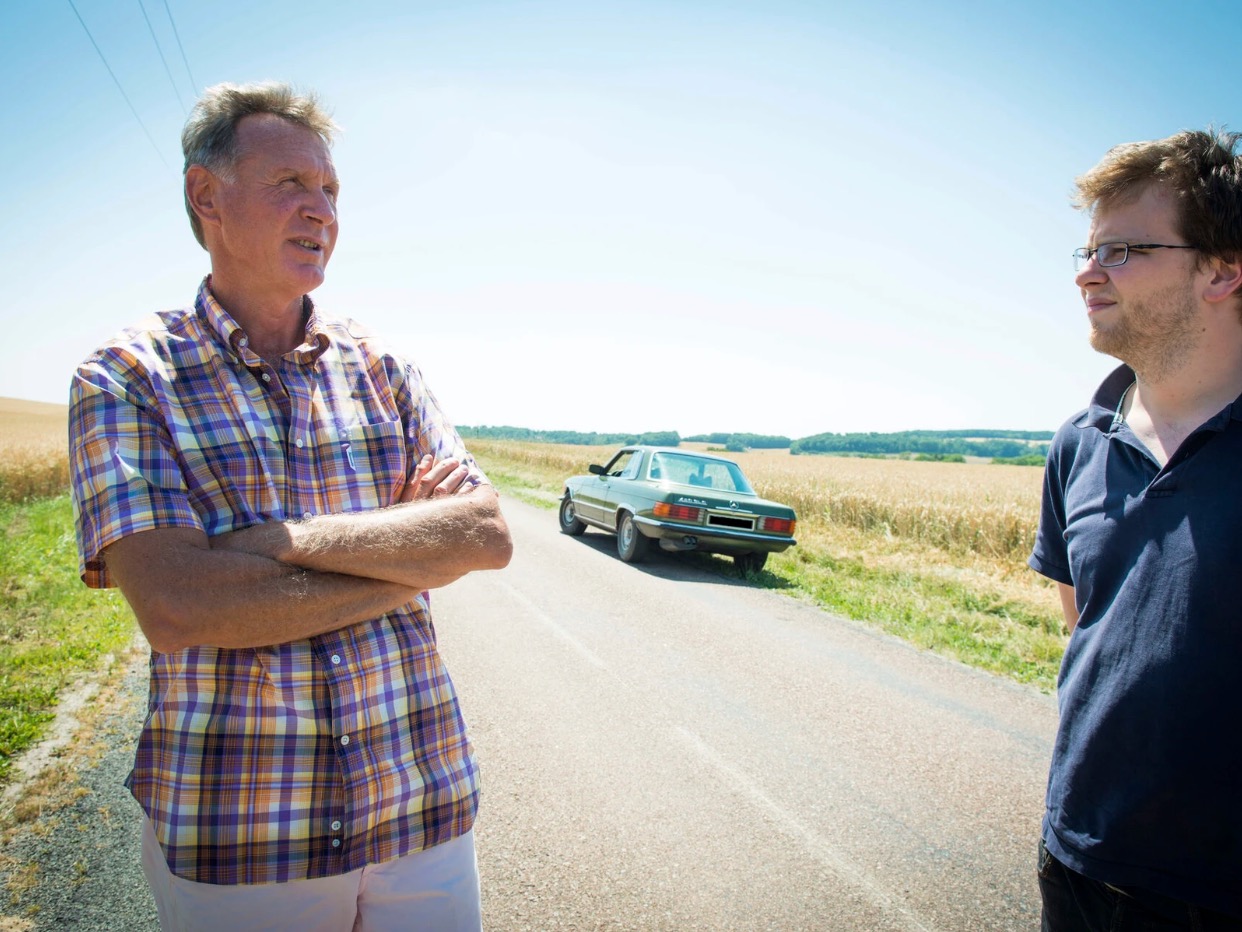AISNE
GREETS
MEET A LOCAL, A GREETER
Greeters walk in Aisne with one of its inhabitants, a Greeter
The Greeters of Aisne (from the English “to greet”: to welcome) will help you discover their “corner” in a friendly manner, of which they are proud and passionate, as a friend would do. Sometimes in love with the historical heritage of their town/village, sometimes in love with the natural riches of their locality, Greeters all have in common a passion for their territory and the desire to share it.
The Aisne area: where and what is it?
Aisne is a French department whose name comes from the Aisne river. It belongs to the Hauts-de-France region.
Did you want to know everything ? Click here !
Tourism in the Département I love l’Aisne !
Click on one of the Aisne territories thumbnails
Then choose your walk in this area and fill out the registration form
Contact us by Email
Follow us on …
Aisne Greeters
Are run and managed by the collective of residents “Greeters de l’Aisne”

Charter, UGCs & Responsabilities
Click on the cross, on the right hand side, to close this window >>>
Web Page GREETERS DE L’ AISNE
This page is managed on the Greeters de France portal
“Greeter de France” website – Click on the logo.
Each of the “Greeter de France” destinations is run and managed by local players: Associations, resident groups or by tourist entities (Tourist Offices or Departmental Tourism Committee). They are all members of the FFG (France Greeters Federation) and as such respect the same operating rules. They follow the values and ethics defined globally by IGA (International Greeter Association). FFG coordination ensures the pooling of our tools, our global presence on the Web and social networks as well as the sharing of our communication programs.
Click on the cross, on the right hand side, to close this window >>>

BETWEEN EARTH AND SEA
From the top of the Aber Ildut to the small port of Mazou, Maryvonne will accompany you for a small eclectic hike. Between the rocky coast of the Iroise Sea, with a view of the Molène archipelago, and ribinoù (small bocage paths in Breton), discover two very different facets and yet so close to our territory. Blue and green mix together to form a single word in Breton: glaz.
Click on the cross on the right to close this window >>
The Greeters of Saint Quentin and its surroundings
Click on the cross, on the right hand side, to close this window >>>
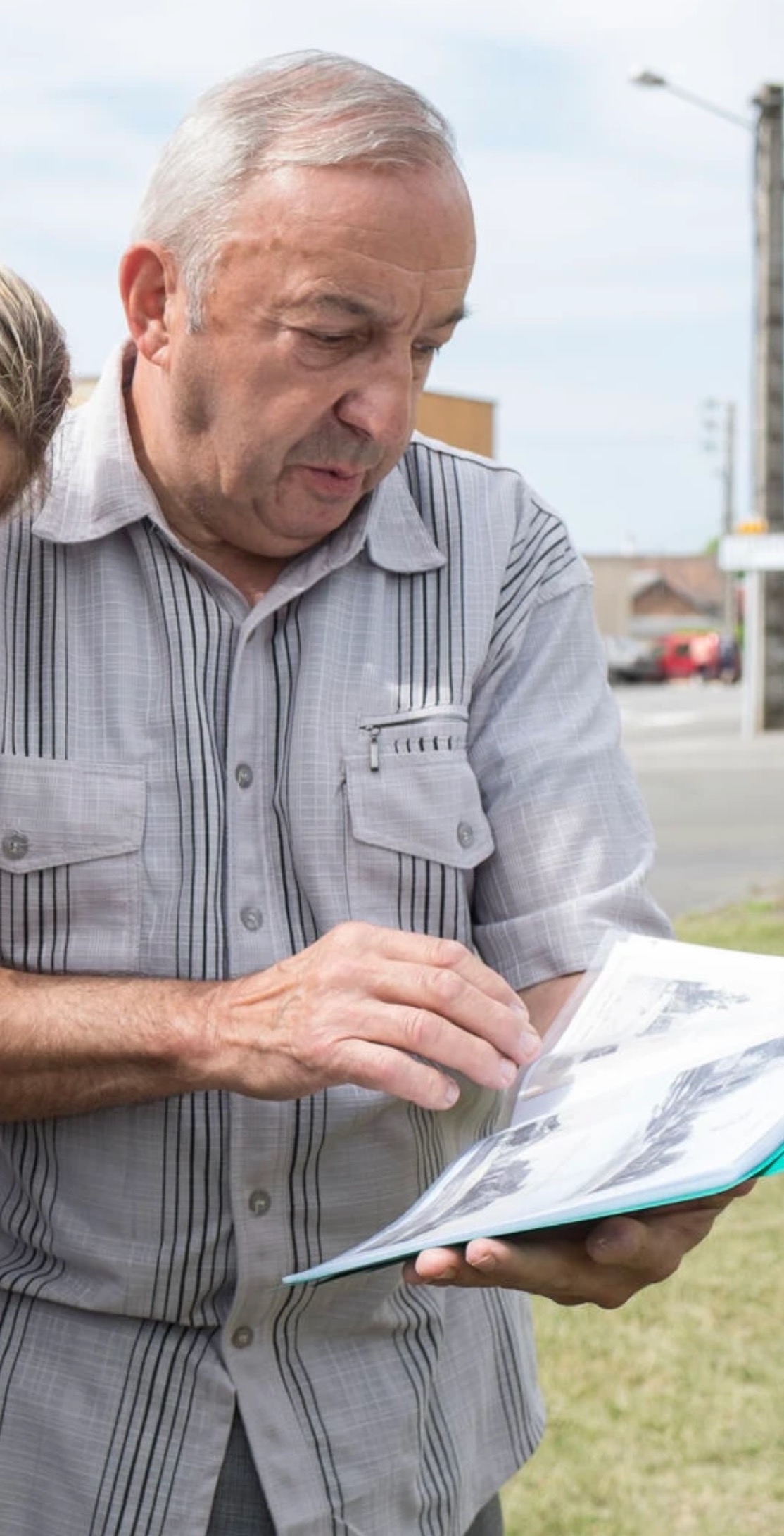
JEAN-PIERRE J.
In Beaurevoir on the paths of memory
Jean-Pierre welcomes you to his village of Beaurevoir for a very moving historical walk. Passionate about the history of his ancestors, this retiree from the marines and the national gendarmerie transmits the memory of the Great War, collected thanks to the numerous objects marking the daily life of the time, and the testimony of veterans today. now deceased.
This is because its village is rich in an extraordinary past. A first walk begins with the church of Sainte-Jeanne d’Arc, to reach the source of the Scheldt where the blockhouses of the Hindenburg line are still visible. Along the way, we approach the remains of the Castle where Joan of Arc was imprisoned. Another walk takes you to several Commonwealth cemeteries. Your host then becomes a true memory keeper, delivering a reading of history filled with emotion and respect for the soldiers who fought on the fronts of the Aisne.
Two walks are available: one covering the Commonwealth cemeteries, the other the blockhouses of the Hindenburg Line.
Click on the cross, on the right hand side, to close this window >>>
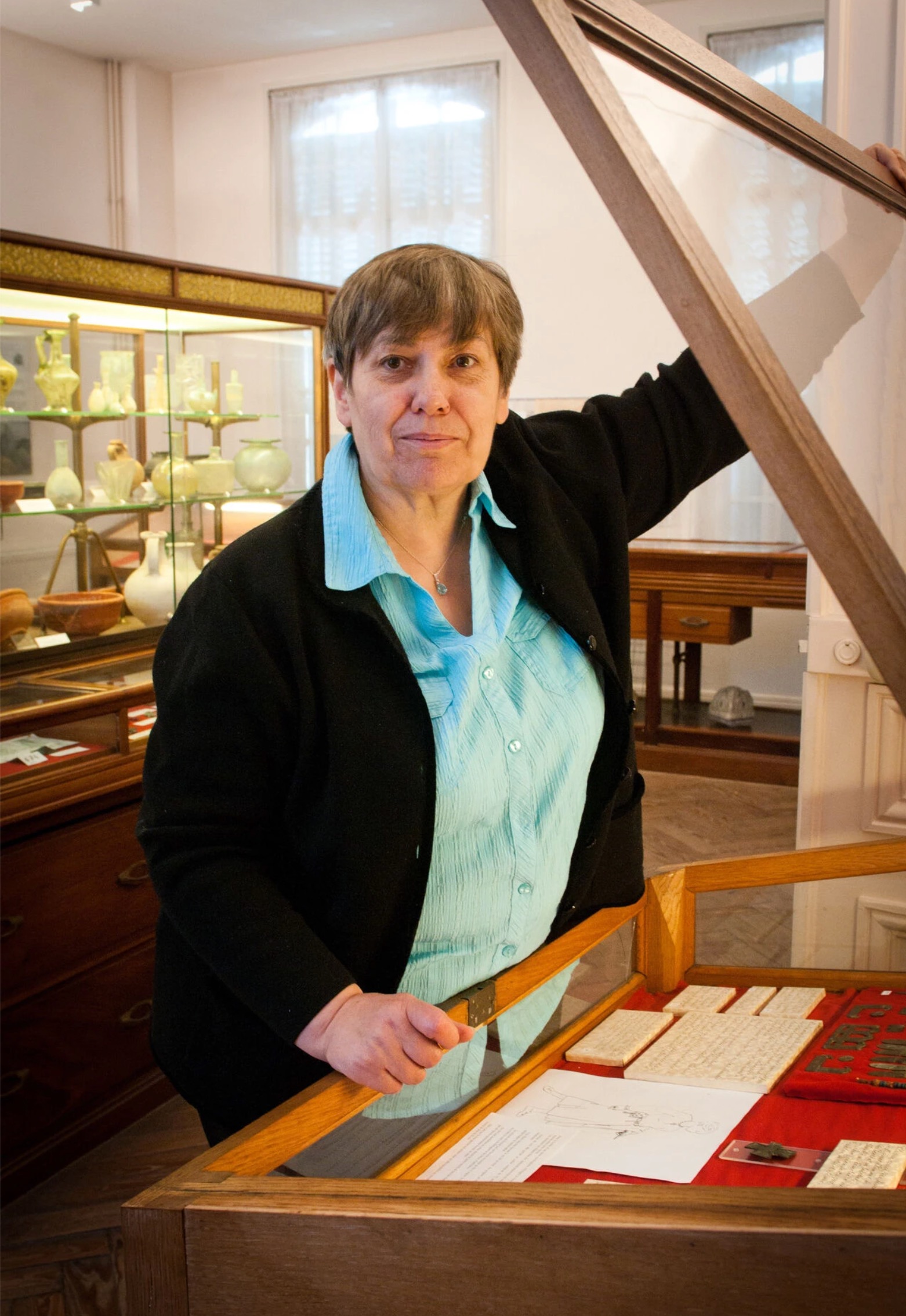
MARYSE
Roupy: a model village of Reconstruction
Born in the village where the Somme River has its source, Maryse is a proud ambassador of Saint-Quentin and its region. On the courtyard side, it opens the doors to the academic society for the first time, one of the oldest learned societies in France. In the 19th century, this veritable laboratory of ideas was capable of creating banks and organizing poetry competitions. Its collections of books and engravings and its archaeological museum are worth the detour. From this major site, Maryse will take you through the streets of the Art Deco city, to the Saint-Jean cemetery, a real little Père Lachaise in the heart of Saint-Quentin! On the garden side, Maryse will meet you in Roupy, a model village born from the desire to apply new ideas of town planning after the war. Go with Maryse through the streets of this model village, with its unusual and wonderful heritage.
The St-Jean cemetery in St-Quentin is not like the others; with no less than 200 chapels over 2 hectares, it is a real open-air museum! Dozens of celebrities, artists, poets, architects and benefactors rest in these places. No one other than Maryse could tell you the story better. Along the way, your host will also be able to show you some of the wonders of the Art Deco city, with his nose in the air!
In 1918, the ruins of the village of Roupy were so difficult to identify that the English planted a sign there: “This is Roupy”. Following a competition, a single architect was appointed to rebuild everything. In this work, Charavel expressed all his creativity and the new ideas of post-war town planning. Go with Maryse through the streets of this model village, with its unusual and wonderful heritage.
Click on the cross on the right to close this window >>

GÉRARD
The occupation of Homblières experienced by its inhabitants
Member of the academic society of Saint-Quentin, Gérard introduces you to a little-known village: Homblières.Member of the academic society of Saint-Quentin, Gérard introduces you to a little-known village: Homblières. Once a large abbey stood there, controlling all economic life in the region. In nearly 1,200 years (from the late Middle Ages until the Revolution), the abbots, lords of the place, had time to shape the village and its ancient buildings, leaving behind some remarkable jewels such as the church, the park monastic and the monks’ pond.
In another walk, Gérard discusses the role played by the village during the First World War. Thanks to its precious archives, it retraces the lives of the inhabitants during these long months of occupation. From the arrival of the Germans (who chose the castle of Homblières as their place of residence) until the eve of the Armistice (when the village welcomed the German officers responsible for negotiating peace), sign up for this chronological walk striking.
Click on the cross on the right to close this window >>

AGNÈS
The providential benefactor of Chevresis-Monceau
Agnès welcomes you to Chevresis-Monceau, a village rebuilt in the 19th century thanks to the generosity of a benefactor: Viefville, notary of Napoleon 3.
This disciple of Godin had a vision for the village, which he provided with numerous new services and facilities: town hall, school for all, funeral chapel, presbytery, fire station, and even a retirement home for the inhabitants of the canton! Child of this visionary city,
Agnès will show you all the unusual and surprising aspects which made it a model of comfort and innovation at the time.
Click on the cross on the right to close this window >>

ANTOINE
Secrets and wonders of water in the Oise valley
In Vadencourt the tumultuous waves of the Oise and Noirrieu intersect, to which are added the peaceful waters of the Sambre-Oise canal. Whatever its form, water leaves its mark here on human activities, but also on the natural environment. Passionate about aquatic environments, Thoane shows you the many animal species, but also the mosses and plants that make up this ecosystem.
Click on the cross on the right to close this window >>
Greeters in Thièrache
Click on the cross on the right to close this window >>

CLAIRE & JEAN-LOUIS
Géocaching in Thiérache
Claire and Jean-Louis, the former deputy mayor and the village teacher, share a shared passion for local heritage and hiking. Together, they were present during the restoration of the village’s fortified church, to which they hold the key.
Lovers of hiking, they are also behind the creation of a hiking trail which provides access to the old Cistercian abbey. It was while practicing their favorite activity that Claire and Jean-Louis one day discovered geocaching, a sort of modern-day treasure hunt. They will be happy to offer you an introduction, the opportunity to take you for a walk as a real archaeologist!
Click on the cross on the right to close this window >>
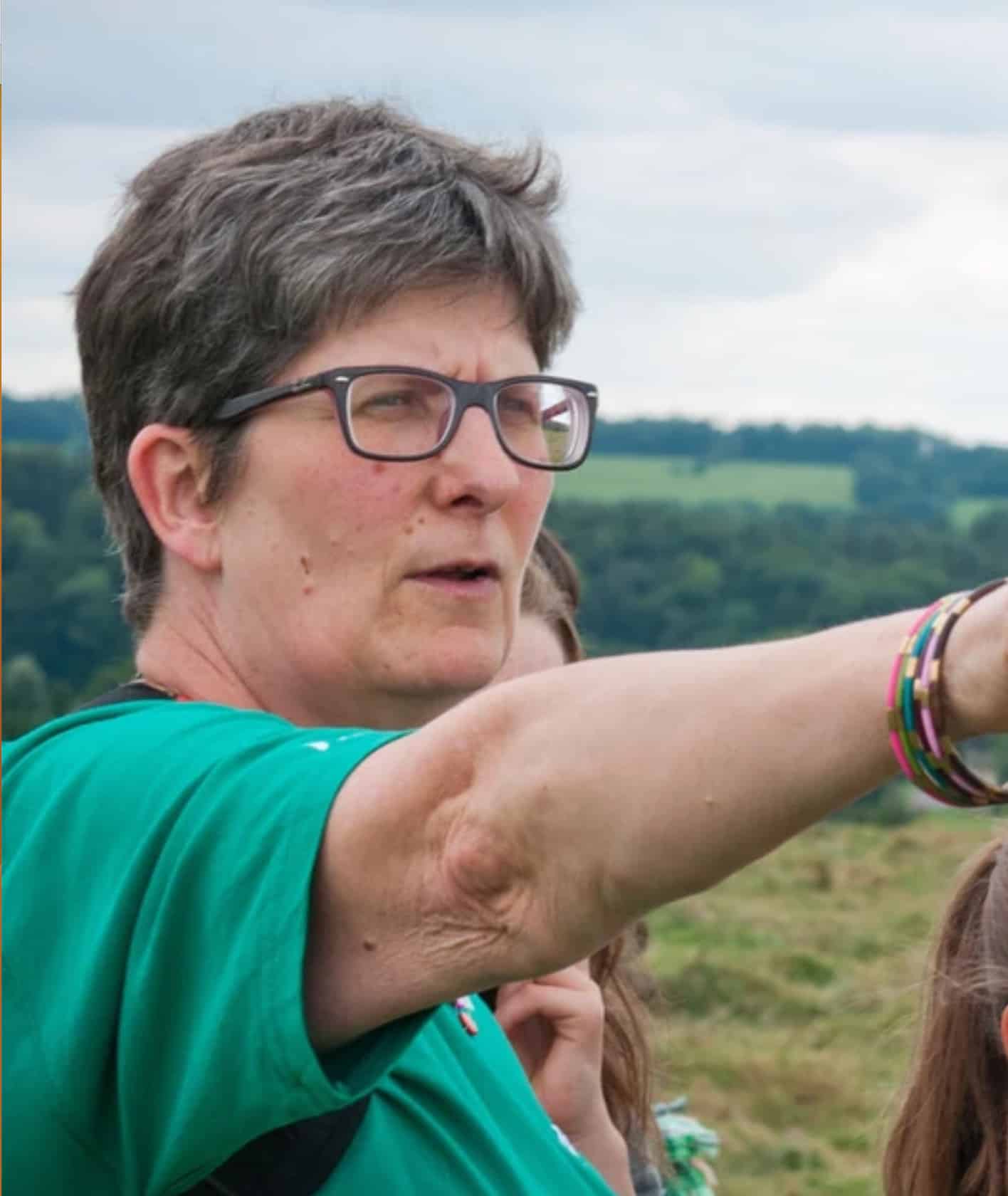
ISABELLE
Hide and seek in the hedges of Thiérache
 
Isabelle welcomes you to Eparcy, in the heart of magnificent and unspoiled Thiérache. Here, the meadows are still adorned with hedgerows, and we understand the importance of safeguarding this fragile environment. From the family farm, where cows and sheep graze, Isabelle gives you secret access to the pastures, which she invites you to explore to discover Thiérache in a different way.
 
Passionate about rural life, the bocage and many other things, a former correspondent for the local press, also a craftswoman and involved in agricultural life (her friend Yves is a cow and sheep breeder), Isabelle talks about Thiérache with emotion. We are quickly touched by the authenticity of its village whose meadows are still surrounded by bocage. We also discover that this balance is fragile and we learn how to preserve it. From the family farm, Isabelle gives you secret access to the pastures, which she invites you to explore to discover Thiérache in a different way.
Click on the cross on the right to close this window >>
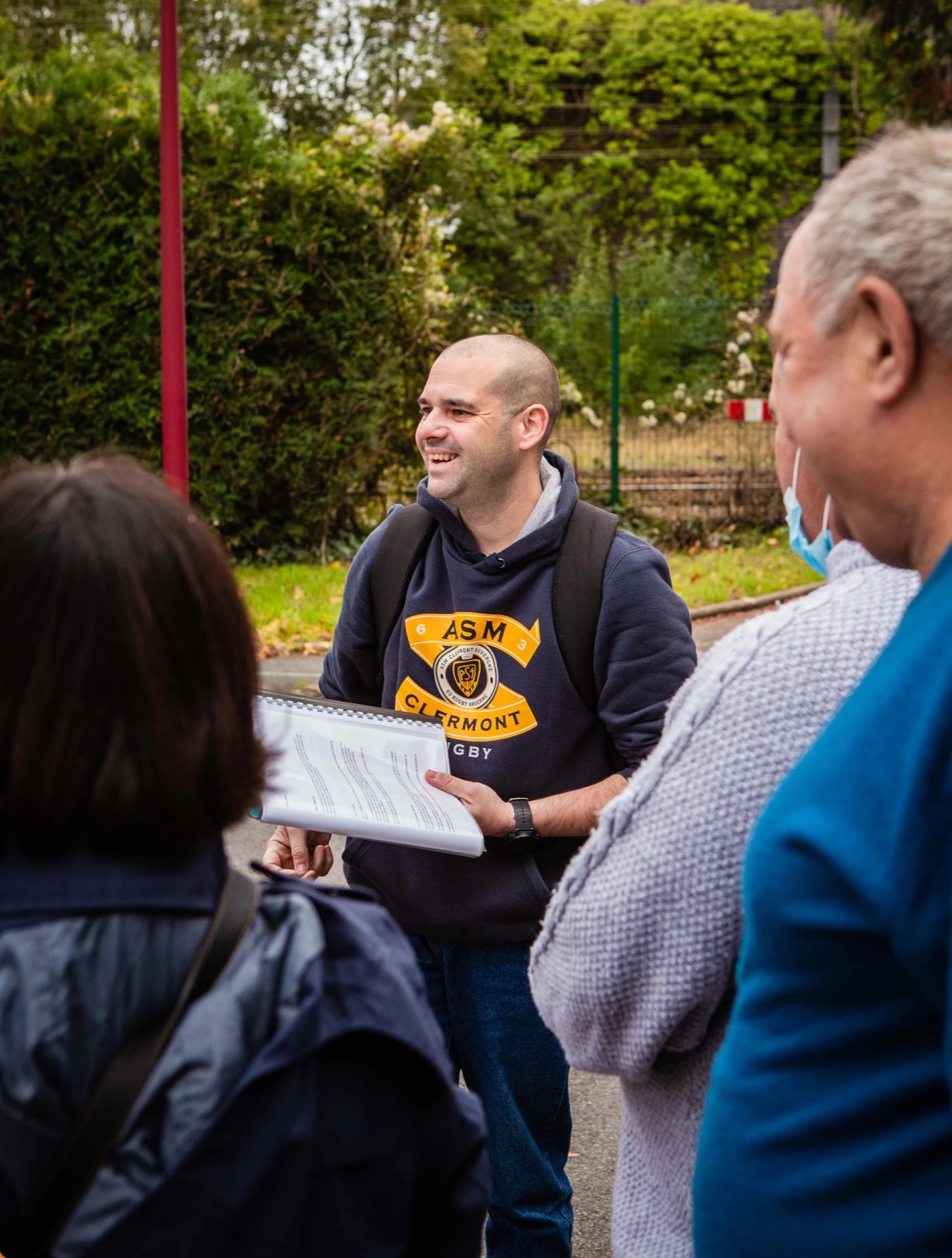
DAMIEN
Hirson’s military memoirs
Originally from Hirson, Damien was passionate about the role played by this railway town in the First World War from his youth. And for good reason, one of the French cities occupied longest by the Germans played a strategic role with its gigantic marshalling yard, the remains of which we can still see today. Equipped with his postcards and numerous archives, Damien shows you the heyday of the occupation in Hirson.
Author of a book on the Armistice Bugle (or the story of the 26-year-old musician who sounded the end of the war throughout the occupied zone). Among his favorite walks, here are 2.
Hirson, the largest station in Germany in 1914
Hirson holds a record in France: that of the duration of occupation by German troops during the First World War. It will take 51 months for the Hirsonnais to regain their freedom, after years of deprivation and destruction. And for good reason, their city occupies a strategic geographical position, at the crossroads of the Northern railways. Passionate about the history of the city and holder of a military historian’s certificate, Damien will help you discover the highlights of the occupation through an exciting stroll through the streets of his hometown.
The secrets of the Maginot line, in the heart of the Saint-Michel forest
If you take the road towards the Hirson Maquenoise border post, you can discover around a bend a monument representing a soldier holding back a France which is falling over.
Located in the national forest of St Michel, come and discover with Damien a little-known part of the Maginot Line but also the story of the 24 fighters who fell during the fighting of 1940 on the soil of the commune of St Michel.
Click on the cross on the right to close this window >>

FRANÇOIS
Between rivers and Thiérache bocage
François is a great fisherman before the eternal. It must be said that its village, in the heart of Thiérache, is located at the confluence of two rivers teeming with fish: the Oise and the Ton, so aptly named!
From the streets of Etréaupont, which smell of maroilles tart, to the edge of the pike spawning ground set up in a meander of the Oise, François will also reveal to you the history and stories of his Thiérache native. And if you have your fishing rod in your luggage, then the game can begin!
Click on the cross on the right to close this window >>
Greeters around Chauny-Tergnier
Click on the cross on the right to close this window >>
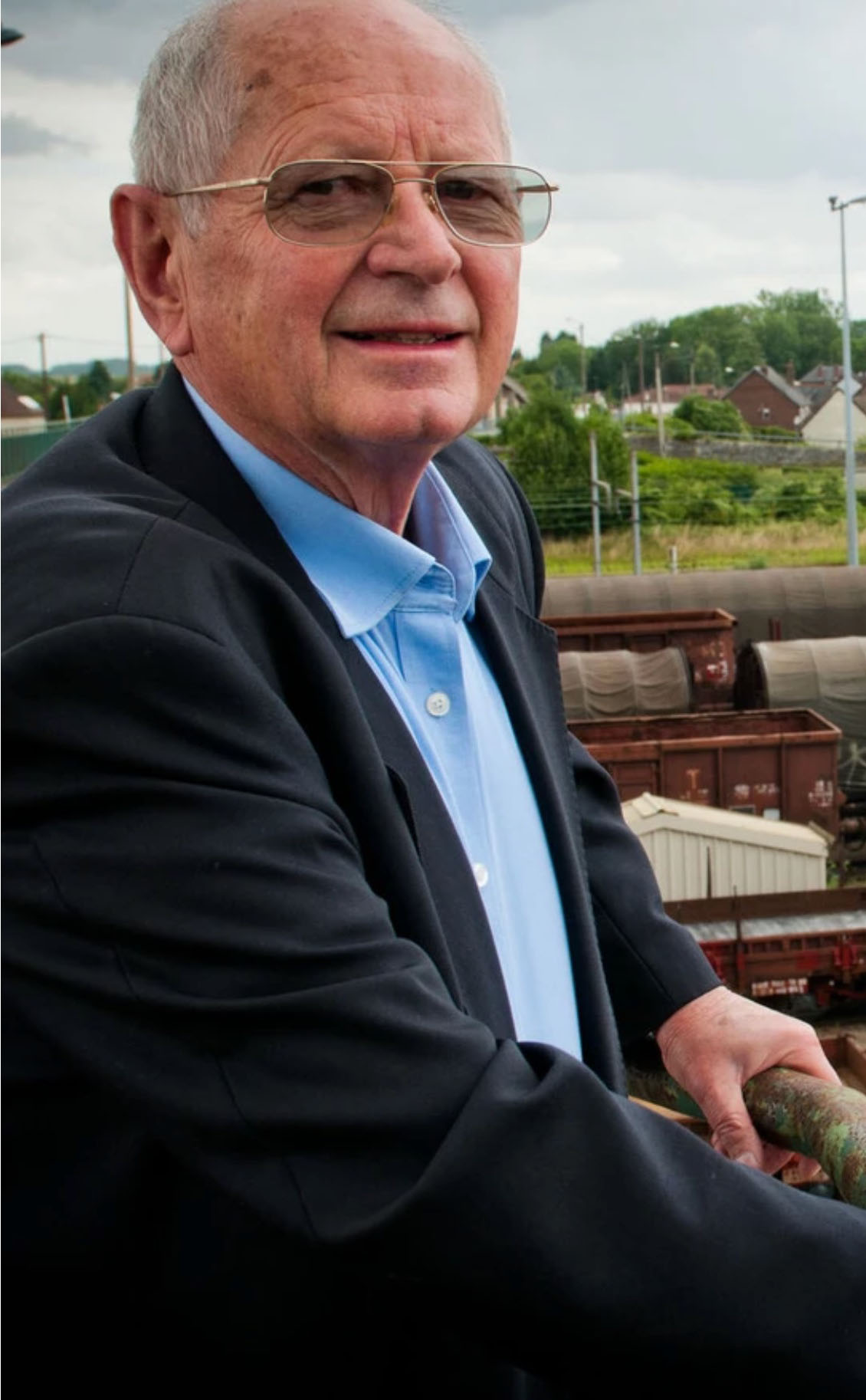
DANIEL
Discovering the railway town of Tergnier
Daniel is a child of the Cité Jardin, created by Raoul Dautry in 1919 with the aim of housing all the railway workers of Tergnier. Far from the settlements and other barracks of the time, it then accommodated more than 4,000 inhabitants in conditions of exceptional comfort.
It was while walking the streets of the City rebuilt after the war that Daniel one day discovered the numerous Masonic symbols left by its creator, in the network of streets, the architectural details or the geometric shapes of the Art Deco style… He immediately seeks to unravel the mystery of these signs, whose origins go back to the time of the cathedral builders… Are you ready ? The exciting investigation can begin…
Click on the cross on the right to close this window >>
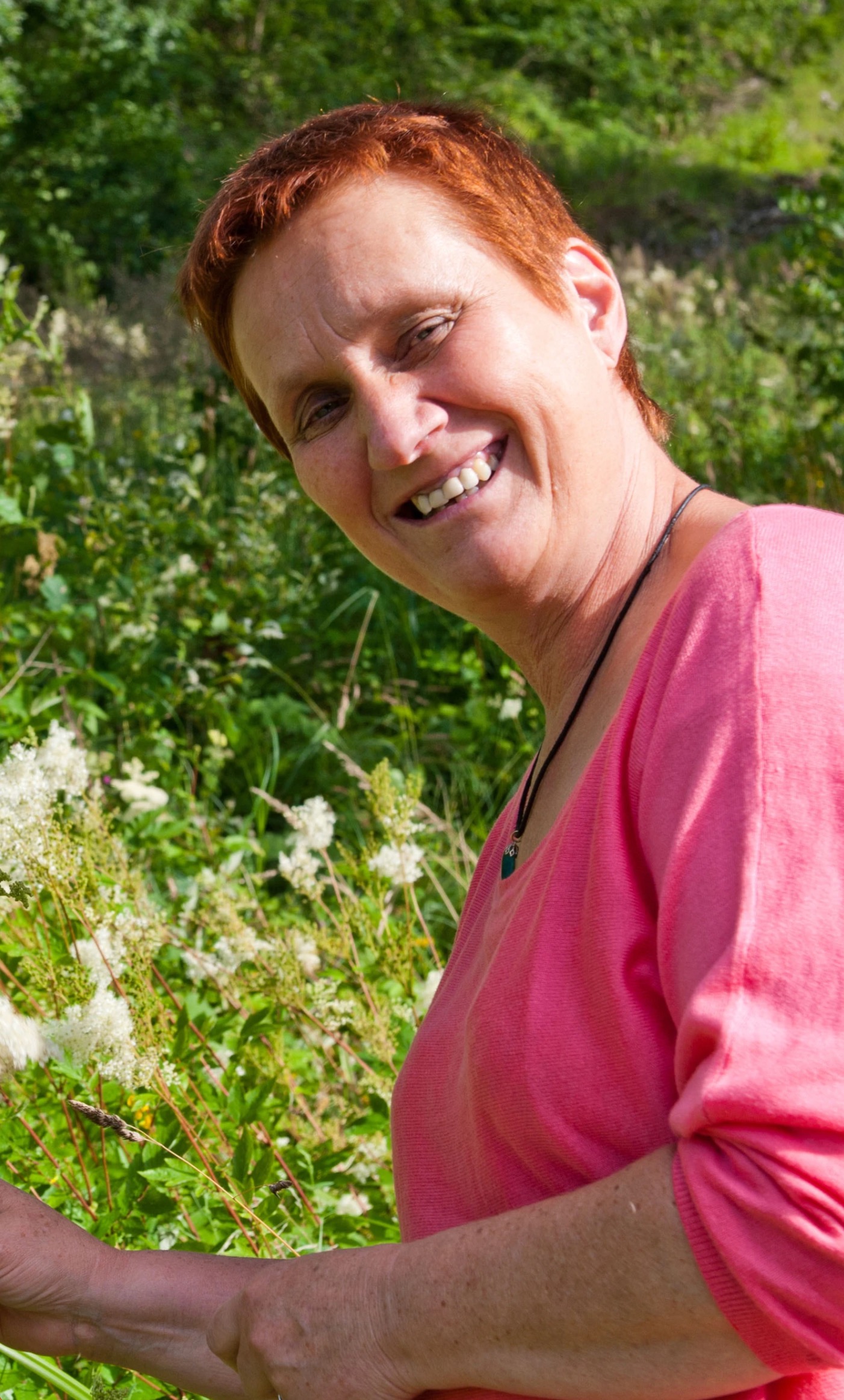
FRANCINE
Secrets of the Saint-Gobain mirror factory
Francine is an ambassador for SAINT-GOBAIN, passionate about the former Royal Mirror Factory and the surrounding forest. With her, you will discover the historic buildings of the 17th/18th century… the why and how of this choice to settle far from Paris to manufacture mirrors, from those of the Hall of Mirrors at the Palace of Versailles to the glass of the Louvre Pyramid…
The history of Saint-Gobain is closely linked to the presence of the Manufacture Royale des Glaces, created by Louis XIV and Colbert, and to the large forest that surrounds it, which supplied wood to fuel the furnaces… Allow 2 hours of wandering and even 3 hours if we add the discovery of the underground remains of the 11th century castle.
Click on the cross on the right to close this window >>
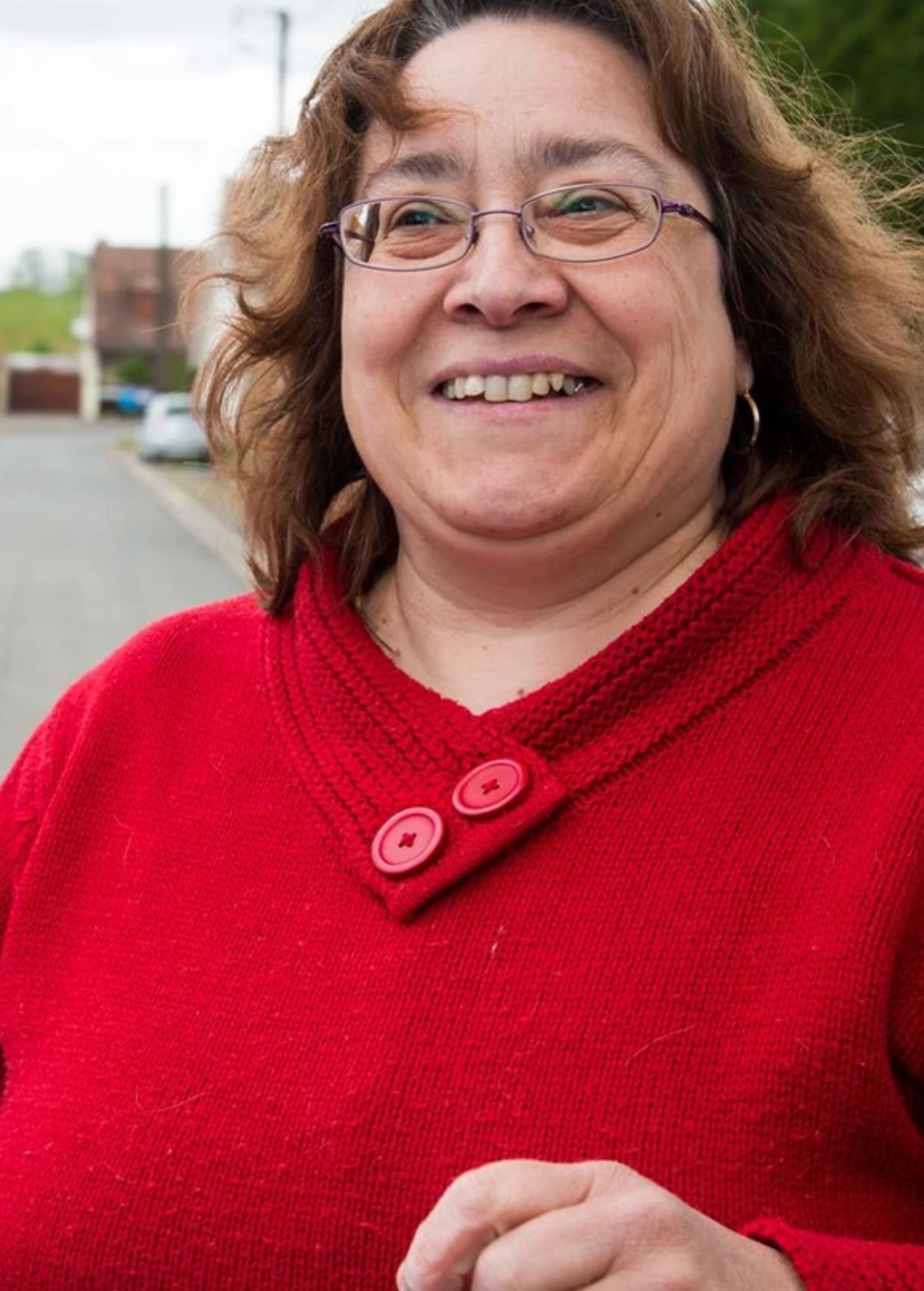
Claire
History of Pierremande, at the crossroads
Passionate about Art and history, Marie-Claire has conducted in-depth research into the genesis of her village. Pierremande has a turbulent history: it was first a toll junction whose origins date back to Gallic Antiquity, serving as a stopover village for merchants from all over the world. It was also a coveted strategic location, from the Gallic Wars to world conflicts. Marie-Claire tells you these episodes with passion, taking you to essential places, some of which have forged our civilization today. A walk in the Coucy-Basse forest will allow you to discover the remains of the Gallic motte as well as some remarkable oaks. Back in the village, we will go in search of buildings dating from before the war. Treasures to which only Marie-Claire has the key!
Click on the cross on the right to close this window >>

MARIE CHRISTINE
The last medieval churches of Chaunois and the birds in the Oise valley
The Oise Valley is an exciting place to escape and discover. Marie-Christine, Greeter in the Chauny region, reveals to us – your choice – two very different and exotic facets. Lovers of the great outdoors will enter a little-known marsh of incredible richness: the Viry-Noureuil ponds, bodies of water shaped by man, which in just a few decades have become a paradise for swans, coots and other waterfowl. . During the migration period, bring a pair of binoculars! Lovers of local architecture will not be left out: Marie-Christine will show them some of the most charming villages of Chaunois, on the heights of the valley. The charming preserved churches, located in villages with names full of mystery -Caumont, Commenchon, Neuflieux, Caillouël- will then no longer hold any secrets for you.
During the war, the Chauny region suffered major bombings. Like sentinels on the lookout, churches have often paid a heavy price. Passionate about local architecture, Marie-Christine presents to you the last survivors of Romanesque and Gothic art in Pays Chaunois. Some preserved buildings that can be easily linked by taking a charming hiking trail.
Click on the cross on the right to close this window >>
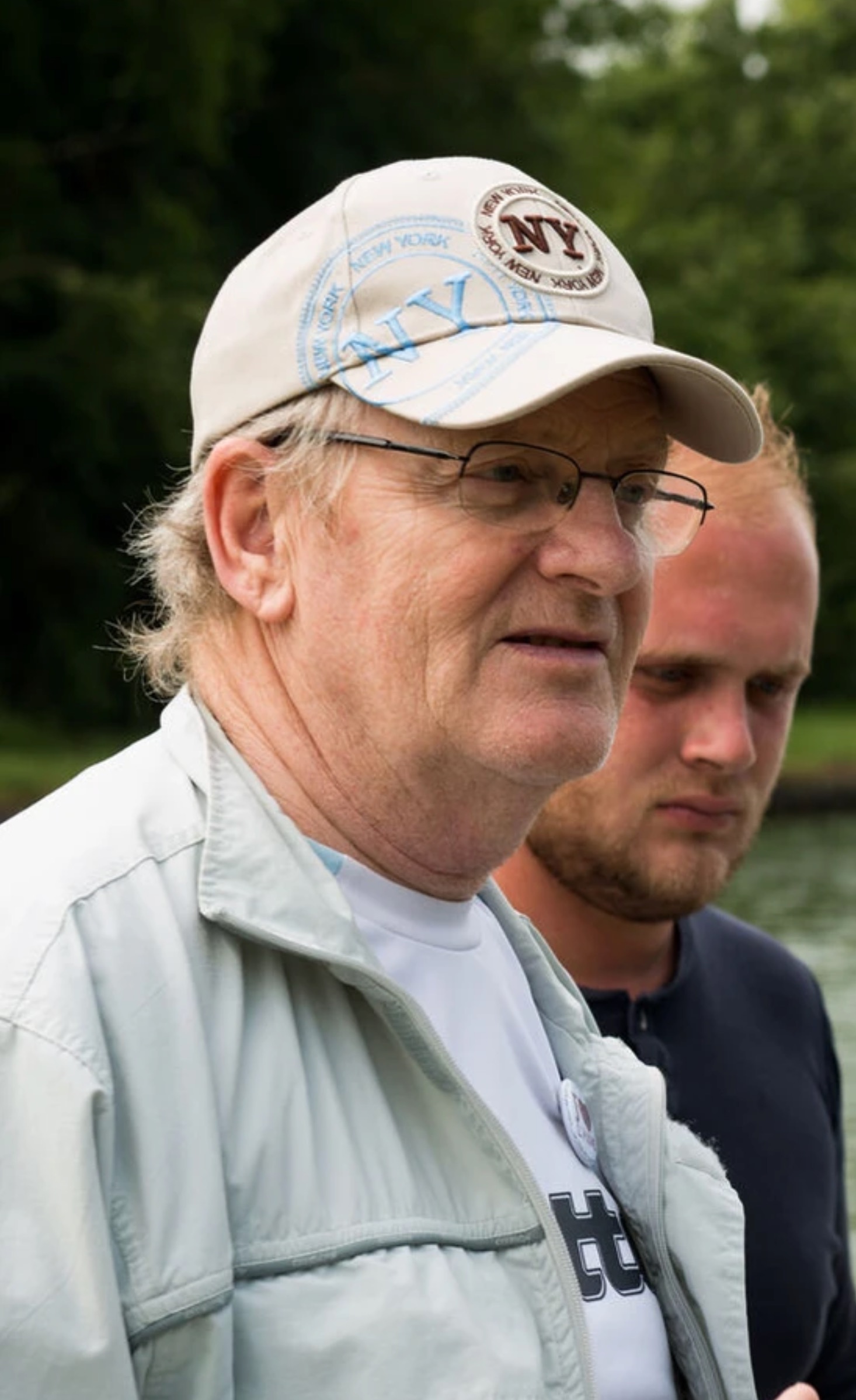
JEAN-PIERRE
Fargniers, the city rebuilt thanks to Carnegie
Until the Great War, everything opposed the small parish of Fargniers to the tumult of Manhattan. Until the day when, destroyed by bombings, it sparked the mobilization of great men. Visionary, the Reconstruction project was born thanks to the Carnegie Foundation. Jean-Pierre, author of numerous research on the subject, guides you through the streets and buildings of this model city.
Click on the cross on the right to close this window >>

Philippe
Tour of the rampart of the Coucy fortress
The most beautiful panorama of Coucy is perhaps not… in Coucy! Philippe knows something about this: located outside the gigantic fortified enclosure, his village offers a spectacular view of the largest fortress of the Middle Ages. Like many residents, Philippe maintains a culture of sharing and preservation, by actively participating in local festivals, but also in numerous cultural initiatives.
On foot, or by bike (his great passion), he offers you a walk around the medieval city to discover all its riches. Whatever your desires, it will adapt to your expectations while making you discover a part of medieval history. Note: For liability reasons, visitors wishing to complete the Greet by bike must do so in their own vehicle.
Perched on its promontory like a sentinel, Coucy is the largest fortress of the Middle Ages. Philippe reveals the most impressive profile to you by taking the walkway, with its breathtaking panoramas. Along the way, your host will tell you the history of the castle, from the time of the knights to the exciting adventure of the medieval festivals, which each year revive this glorious past.
Click on the cross on the right to close this window >>
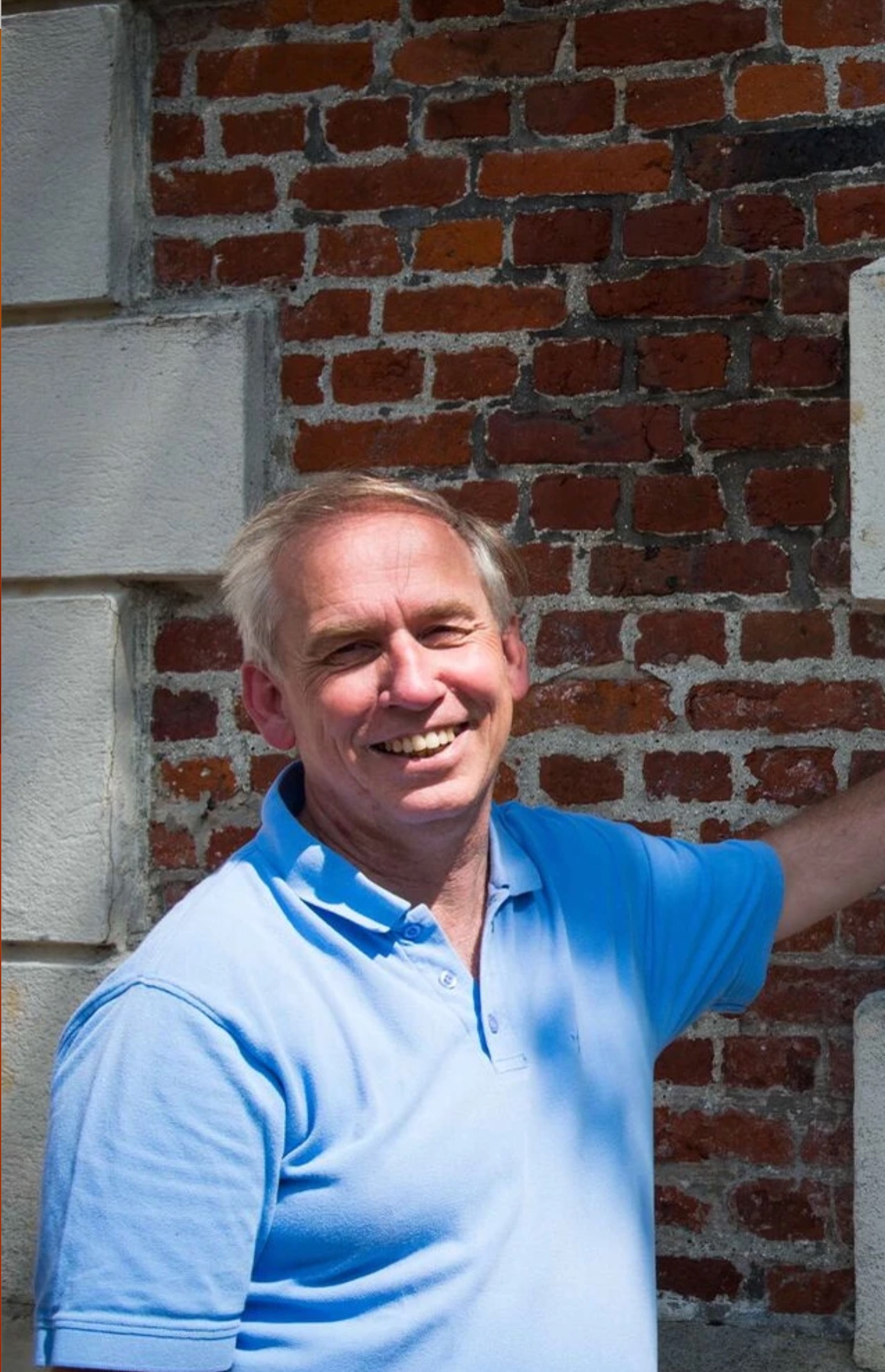
LOUIS-MICHEL
In the footsteps of the La Fère musketeers
The site of numerous battles, the small town of La Fère once hosted the headquarters of the Royal Artillery School. The army left behind a military heritage of great diversity, which Louis-Michel reveals to you through his walk. From the arsenal to the Place d’Armes, from the artillery of the Pont de l’Alma to the old rampart, nothing will escape you from the city’s prestigious past.
A lover of history and architecture, Louis-Michel invites you to discover two faces of the city. In a first walk, you go through the streets of the small town of La Fère, which once hosted the headquarters of the Royal Artillery School. Today the army has left the city, leaving behind a military heritage of great diversity, from the arsenal to the (authentic!) gunner of the Pont de l’Alma. In another walk, Louis-Michel leads you in the footsteps of a visionary industrialist: Alfred Maguin. At the beginning of the 20th century, the latter had an entire city built for the workers of his factory, with all the comforts of the time. Even if it has since undergone some changes, the garden city of Charmes is almost intact and deserves to be rediscovered!
Click on the cross on the right to close this window >>
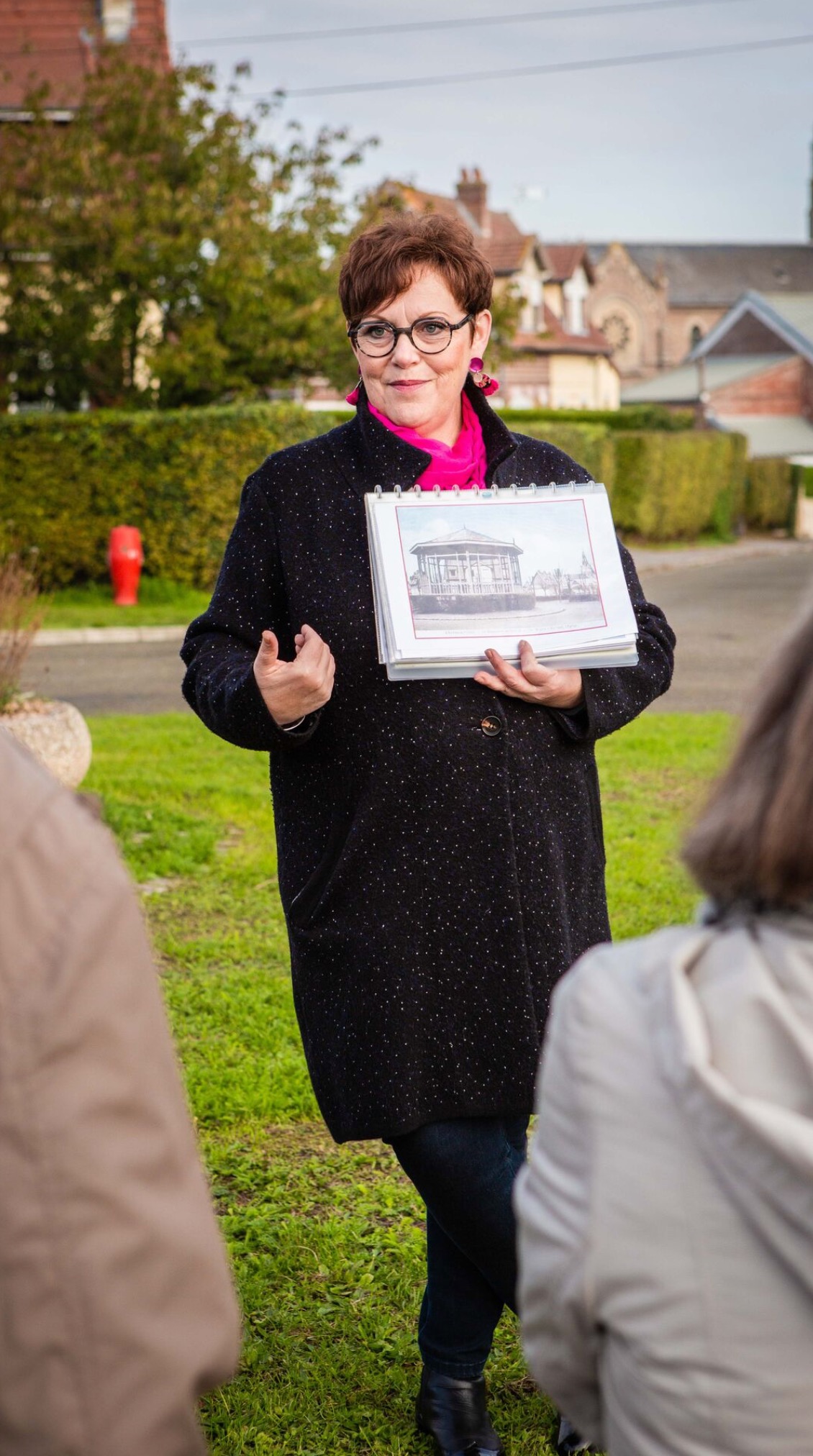
CORINNE
Discovering the garden city of Charmes
20 years ago, Corinne settled in Charmes, a small town near La Fère which developed around her factory.
By researching the history of her village, Corinne discovers that of its emblematic benefactor: Alfred Maguin. From 1898 until the Second World War, despite the vicissitudes of History, the man patiently built his industrial services factory, and obtained numerous patents in fields as varied as the man is eclectic. Not content with its successes, it offered residents a real small working town, equipped with all the modern services and equipment for the time: village hall, commissary, brass band, bandstand, etc.
In turn invested in the town, Corinne gradually updates fascinating archives, which today allow her to retrace the journey of this extraordinary man. With Corinne, follow in the footsteps of Maguin, in the heart of its garden city!
Click on the cross on the right to close this window >>
Greeters around Laon
Click on the cross on the right to close this window >>
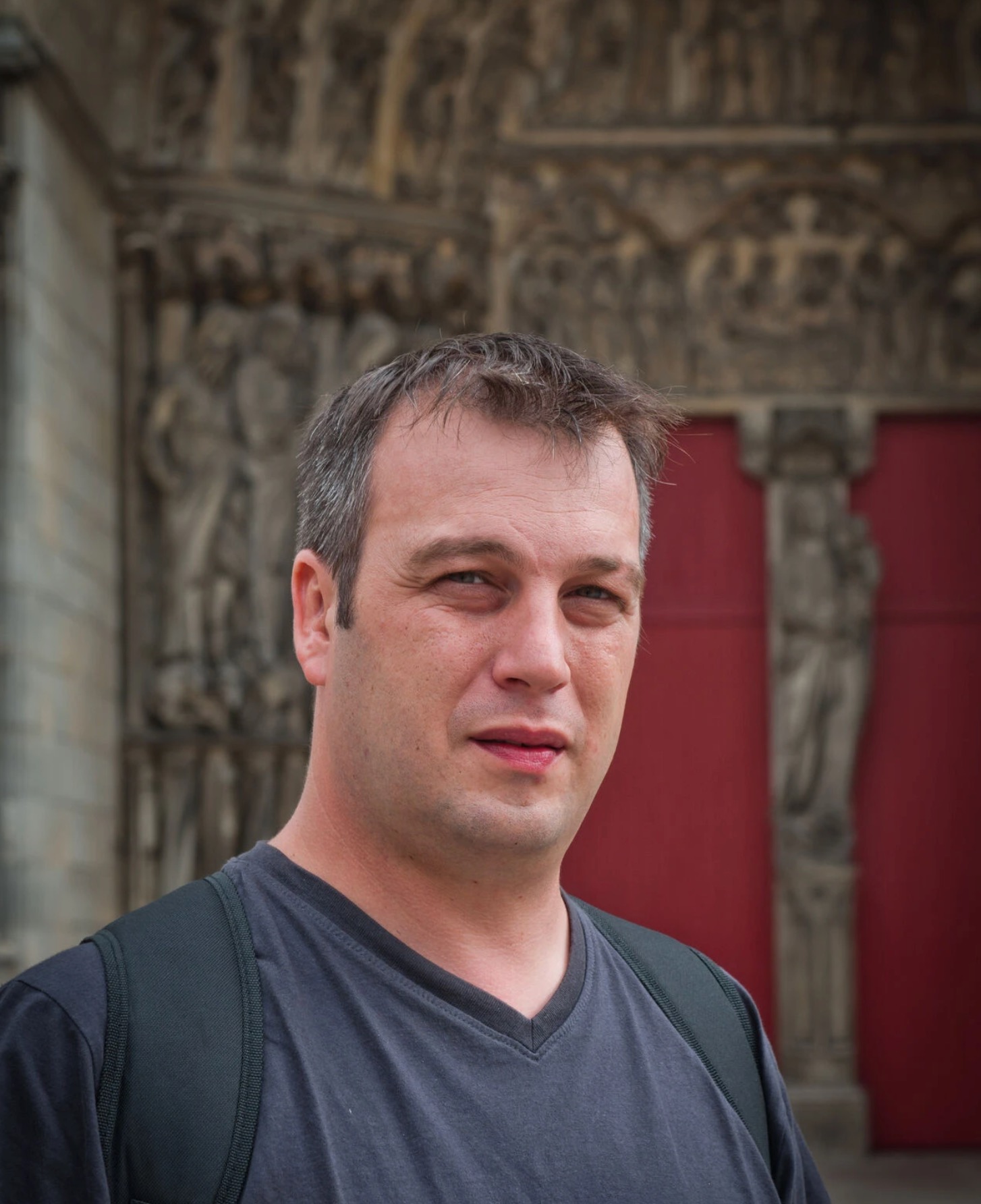
YOANN
The story of Laon told differently
For Yoann “the most beautiful city in the world is Laon! » As a child, he ran through the streets of the crowned mountain, whose secrets he still enjoys uncovering today. His thing? Show you what is unique about each building in the city. A nice program when we know that Laon constitutes the largest protected area in France.
Click on the cross on the right to close this window >>

JACQUES P.
Vauclair or the exciting adventure of the Cistercian order, seen by an enthusiast
Since his early childhood, Jacques has been passionate about the remains of the Cistercian abbey of Vauclair. In the 1960s, his meeting with the Jesuit Father René Courtois, responsible for the archaeological excavations carried out on the site, forged his passion for Cistercian ethics. Bringing together 30 abbeys in France, and no less than 2,500 in Europe, this monastic order initiated by Saint Bernard has made it possible to build technical, artistic and architectural marvels. From the remains of the abbey site of Vauclair to the garden of medicinal plants, from the conservatory orchard to the network of pipes designed by the monks, Jacques tells you through numerous anecdotes how much the Cistercian monks influenced the world through their discoveries. of today.
Click on the cross on the right to close this window >>
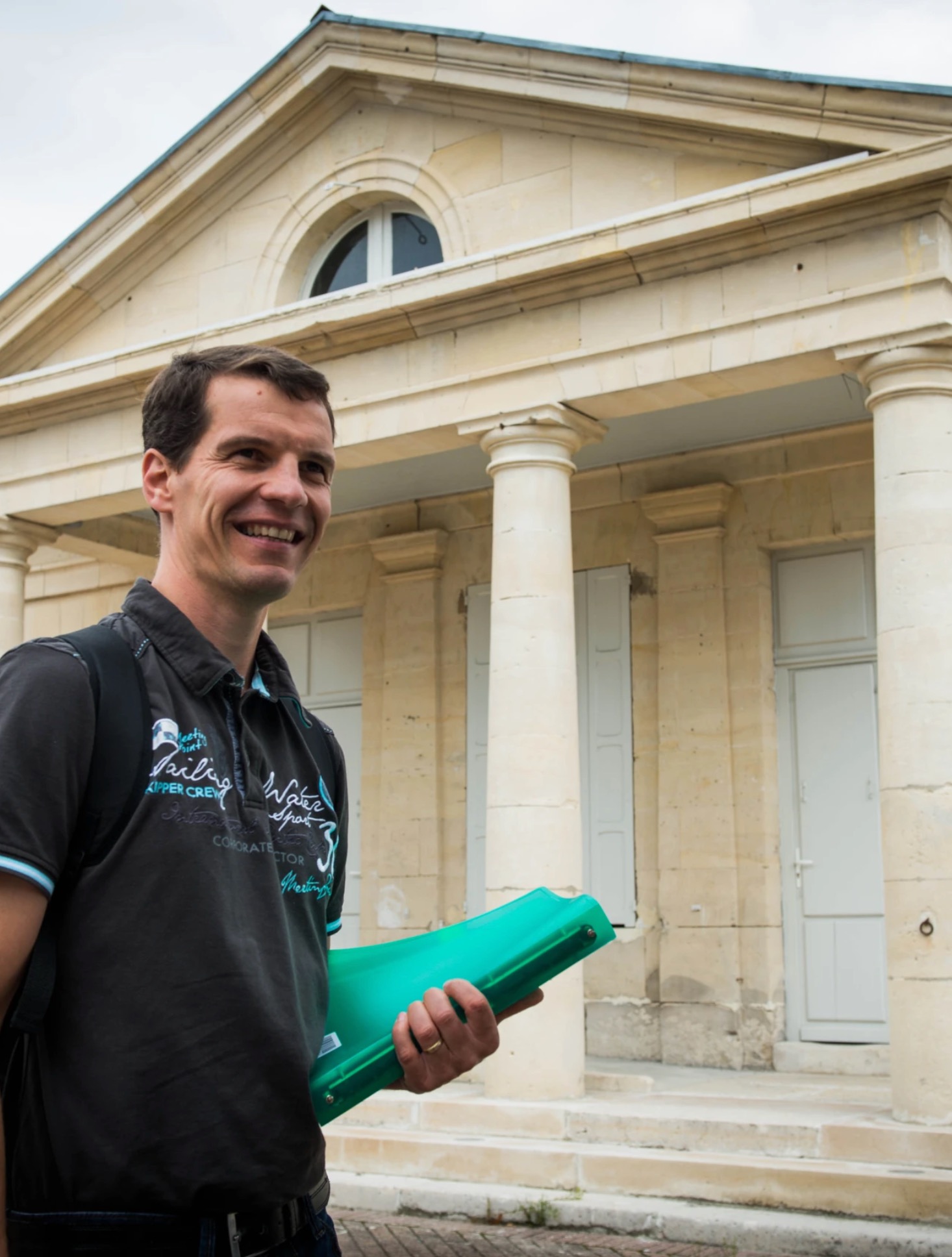
HERVÉ
The secrets of the city’s drinking troughs and fountains
Hervé previously participated in the restoration and enhancement of several fountains and drinking troughs in Laon. Today he invites you to discover this remarkable and little-known heritage… In a thousand-year-old city perched on a steep hill, what could be more fun than unearthing springs, following the course of streams and discovering the developments made by Man over the centuries? Water from bottom to top: a fun and unusual walk, which Hervé offers to young and old alike.
Click on the cross on the right to close this window >>
Walks around Soissons and Villers-Cotterêts
Click on the cross on the right to close this window >>

JEAN-PIERRE P.
Walk in the footsteps of Gabrielle d’Estrées
Jean-Pierre welcomes you to Laversine, his beautiful white stone village. As a man of taste, this former florist and decorator has invested in the restoration of wash houses and other heritage elements. From the surrounding stone quarries, to the walls they were used to build, Jean-Pierre’s Greet is a true tribute to the noble stone of Soissonnais! It is recommended to extend the walk to Coeuvres-et-Valsery, village of Gabrielle d’Estrées, mistress and favorite of Henri IV, whose exhilarating story Jean-Pierre will tell you.
Click on the cross on the right to close this window >>

VALÈRIE
Rebus at the foot of the Septmonts keep
Learning while having fun, that could be Valérie’s motto! A fan of board games (she has stood out several times in game shows), she is also passionate about history and art. With this dual role, she likes to prepare puzzles for those around her in the streets of Soissons, encouraging participants to set their eyes on hidden riches. And if you prefer to enjoy the relaxing calm of a charming village, Valérie is waiting for you in Septmonts to show you the fabulous dungeon!
Click on the cross on the right to close this window >>

MAXIME
Walk and discoveries in a beautiful Valois village
In Soucy, a village nestled in a wooded valley on the slopes of the agricultural plateau, Maxime is the local child. The former teacher still lives in the house where he was born, which shows his attachment to this beautiful region of Soissonnais! A walk with Maxime allows you to discover all the riches of Soucy: from the unique troglodyte wash house, to the listed church housing the tomb of a knight; from the traditional Celtic necklace found in a garden and exhibited today at the Cluny museum, to the famous painters who immortalized the village… From one century to the next, this lover of painting and theater captivates you with his richly documented stories. But don’t expect to receive a history lesson from your host: Maxime prefers to tell the anecdotes, sometimes amusing, sometimes disconcerting, which dot the village, and give you the impression of traveling through time.
Click on the cross on the right to close this window >>
Greeters around Château-Thierry
Click on the cross on the right to close this window >>
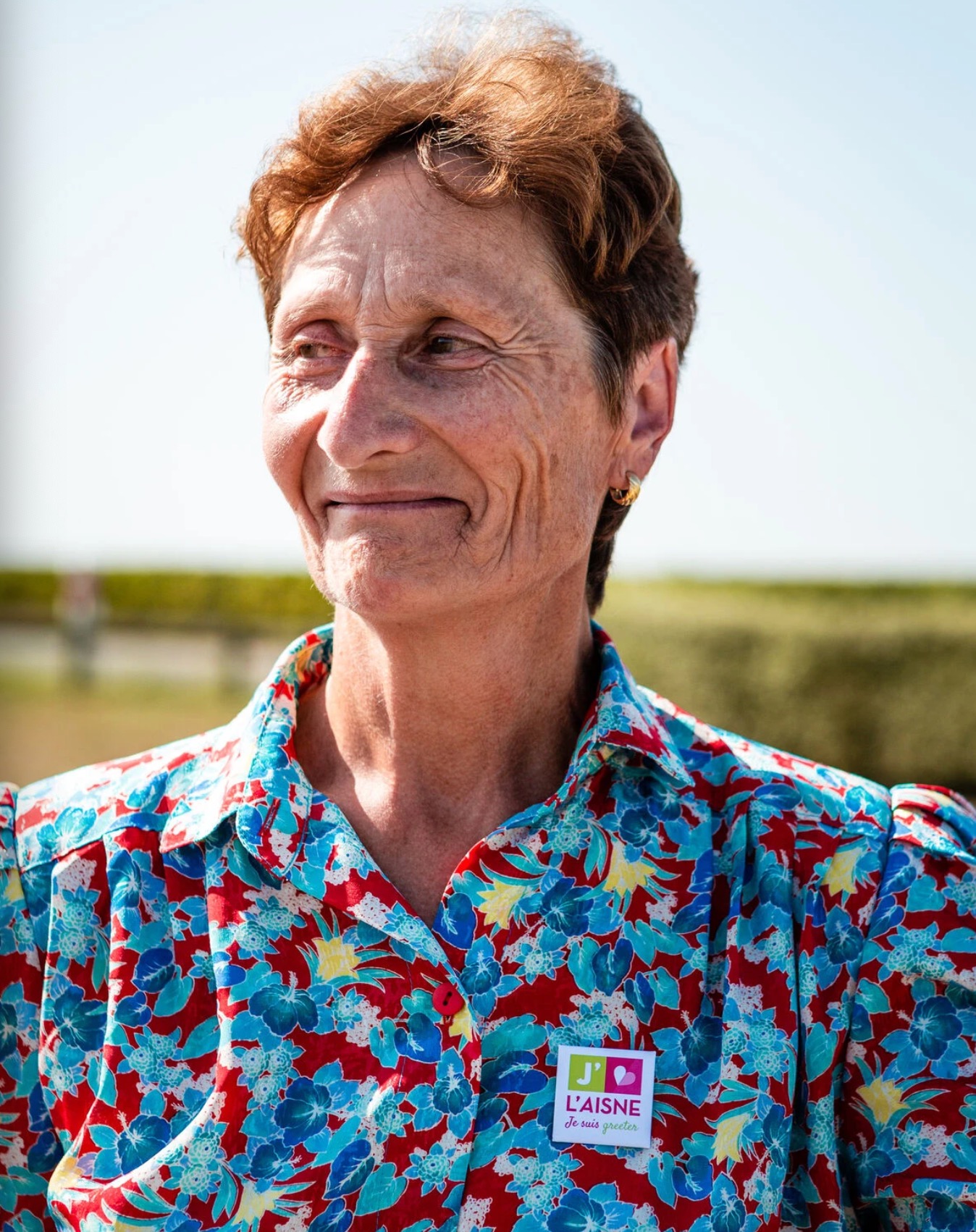
LUCETTE
Dans les vignes, dans les pas des viticulteurs
Did you know that the Aisne department produces 10% of Champagne? It is a true treasure shaped by hundreds of passionate winegrowers, including Lucette, who opens the doors to this living heritage on the borders of Aisne! Let yourself be guided by Lucette! Thanks to his expertise and knowledge of the territory, you are guaranteed to experience an enriching encounter that you will talk about for a long time!
Lucette cultivates real know-how for the vine! A native of the region, her parents, local wine growers, instilled in her the love and passion for Champagne! Today, she only wants to share her knowledge and recount her experience during a meeting in the heart of the Champagne Tourist Route!
Click on the cross on the right to close this window >>
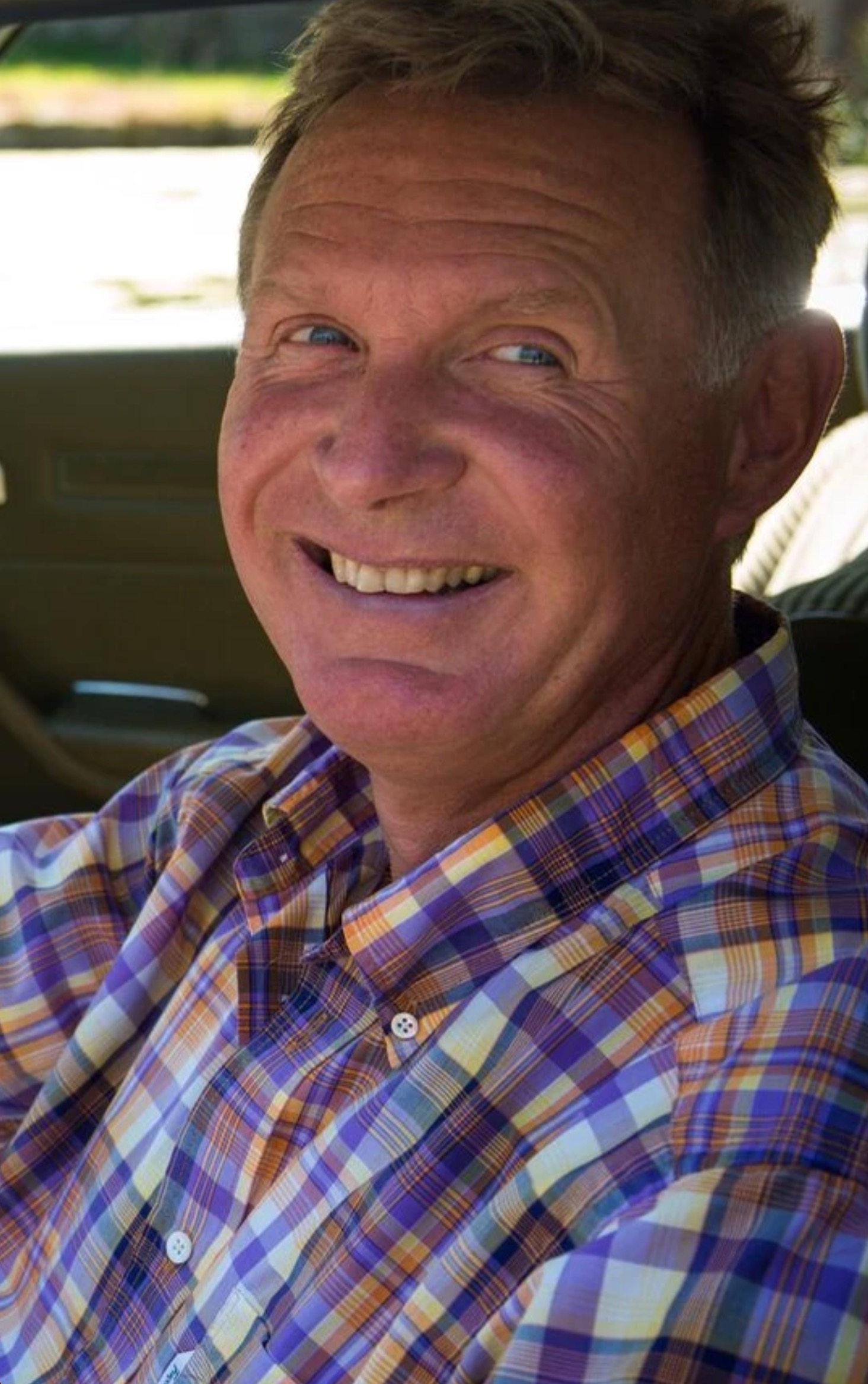
JEAN MARC
Walk for drivers of old cars
Some regions can be explored at a leisurely pace on small roads. This is the case of the South of Aisne, which offers very beautiful panoramic roads, between heather moors and Champagne vines. Passionate about old cars, of which he owns some beautiful examples from the 70s and 80s, Jean-Marc understands this well and offers you a choice of itineraries combining discovery and the pleasure of driving. Note: For liability reasons, visitors wishing to complete this greet must do so in their own vehicle.
Jean-Marc has always had a passion for old cars. Patiently, bolt by bolt, he brings these queens of the road back to life… A fragile heritage that must be preserved just as much as our beautiful stones! One of Jean-Marc’s specialties? The coupes and convertibles of a famous German brand… His proposal? Go with other fans of the genre for a discovery of the South of Aisne… hair in the wind! Whether it is the meanders of the Marne, or the vast expanses of the Omois or the Tardenois, all the small roads are an excuse to awaken the magic of a six or an eight cylinder. But the pleasure of the walk also rests of course on the numerous stops prepared by Jean-Marc, here a fairy tale castle, there an enchanted valley. Departing from Epaux-Bézu, this walk will leave you with lasting memories of the region! Note: For liability reasons, visitors wishing to complete this greet must do so in their own vehicle.

